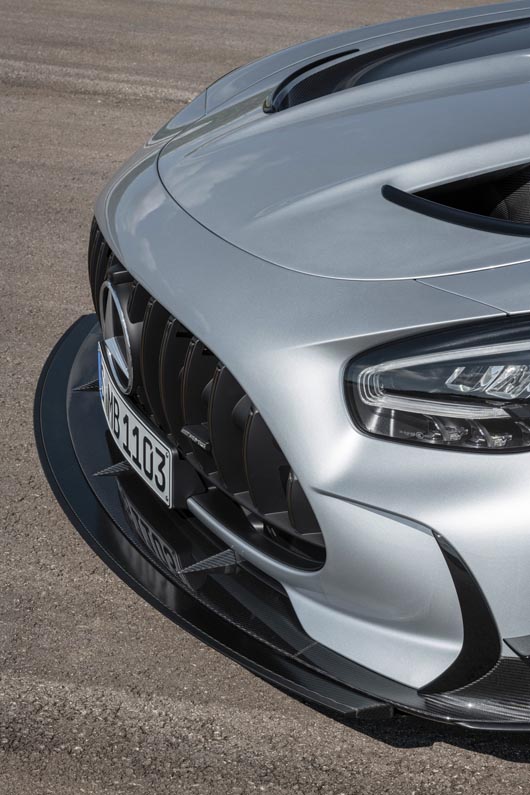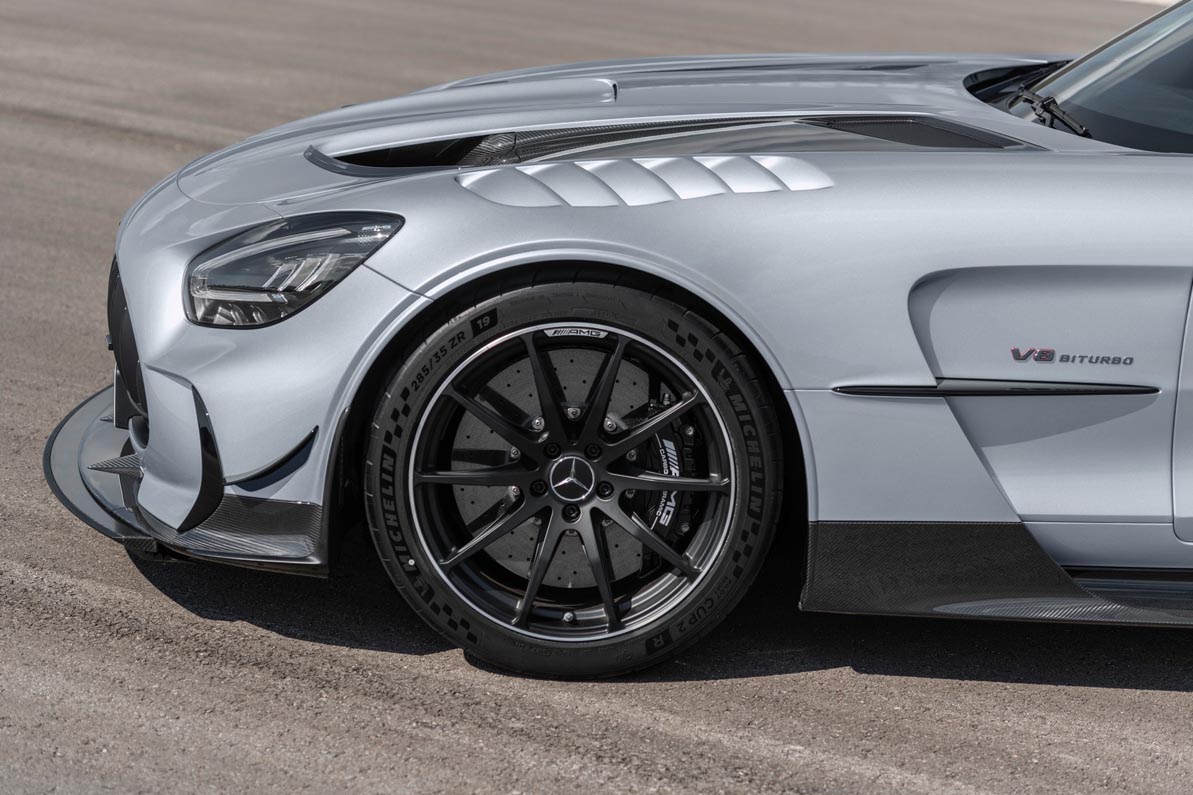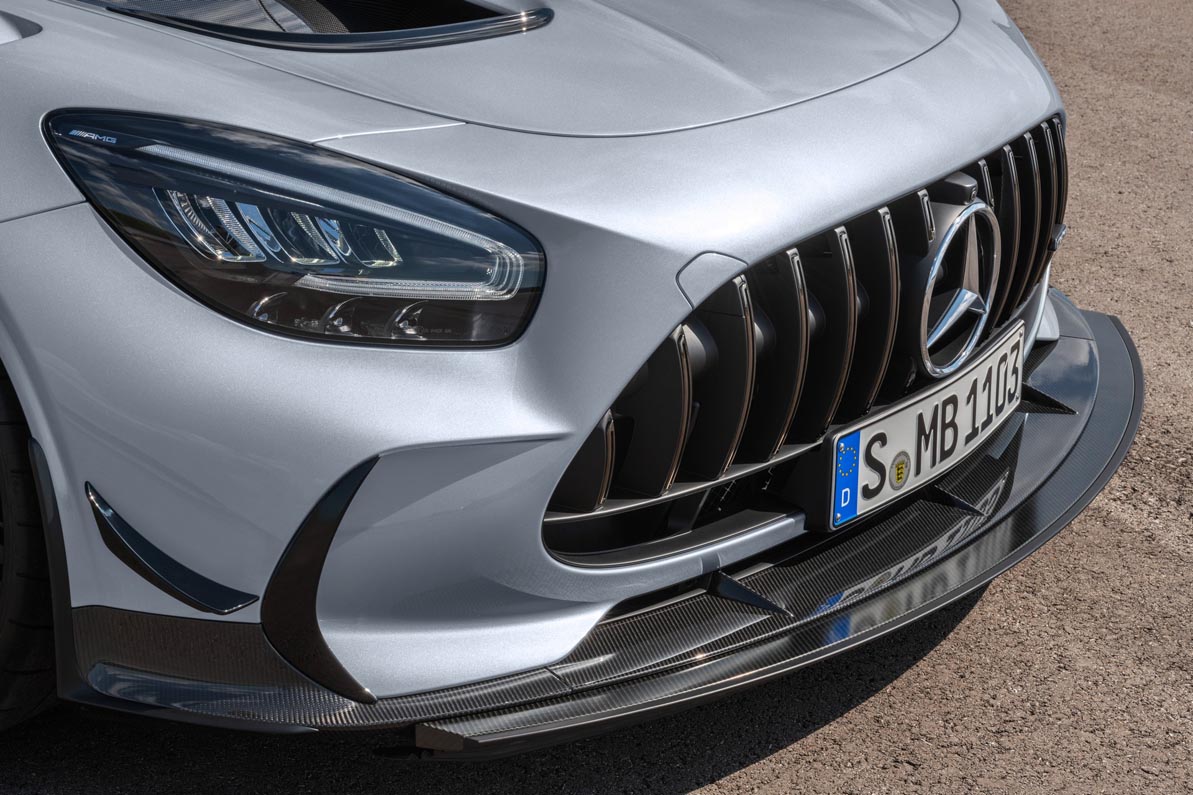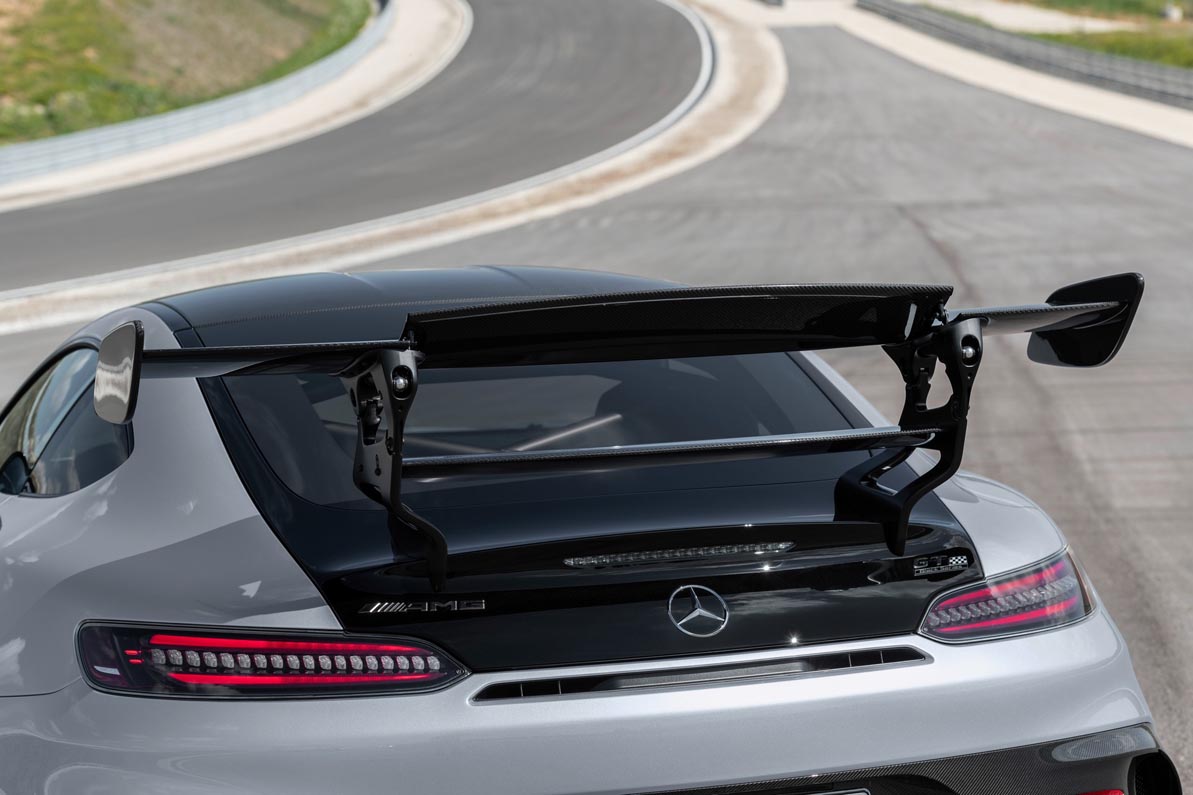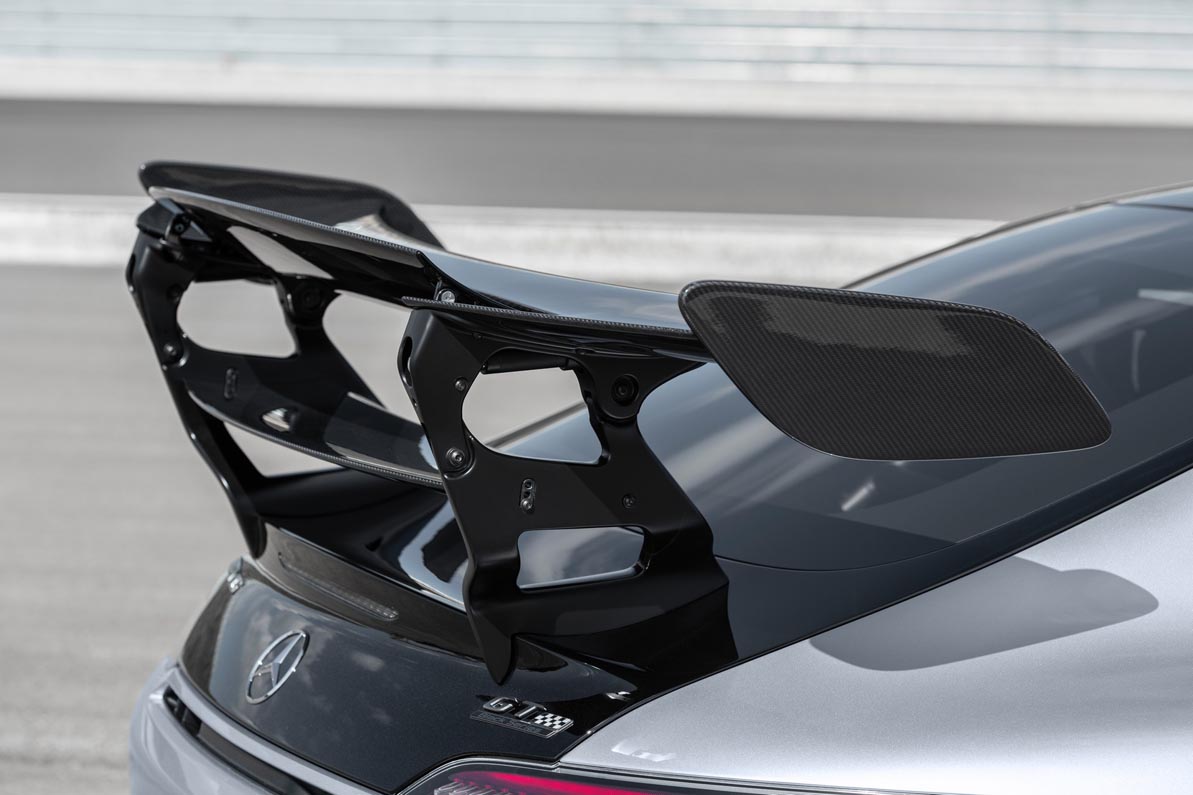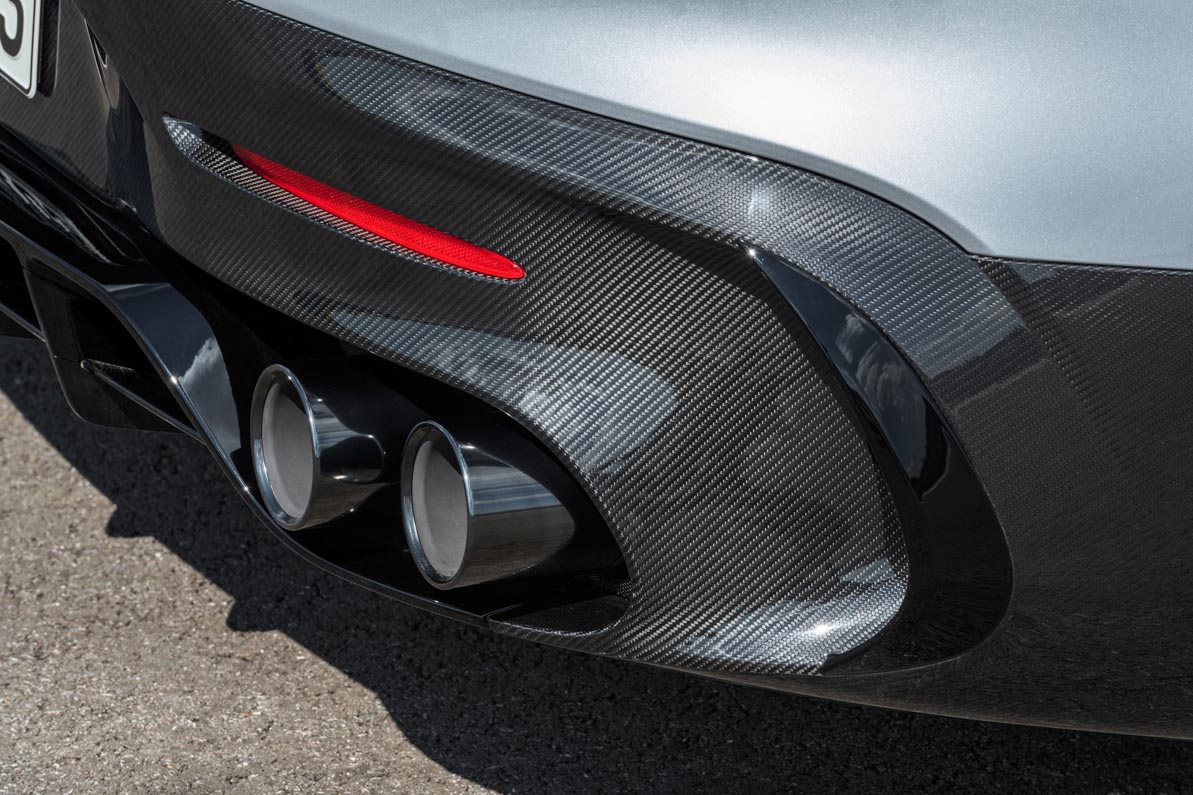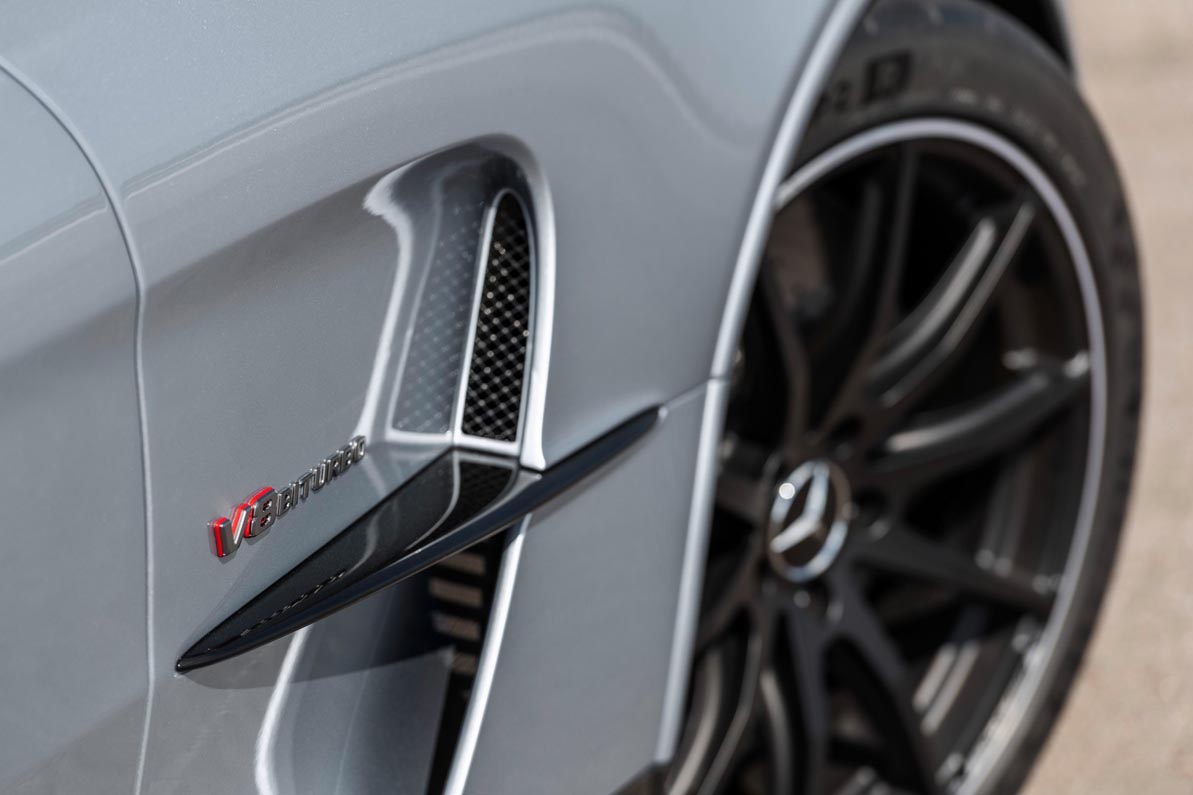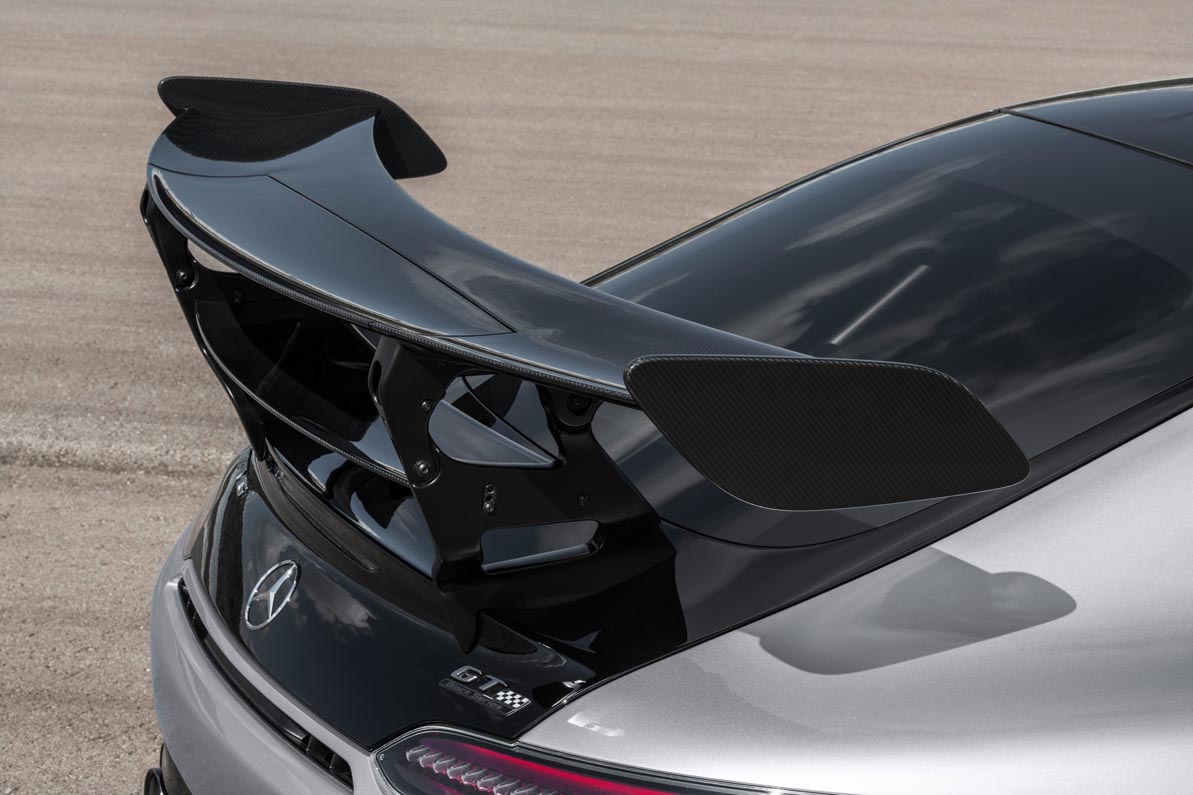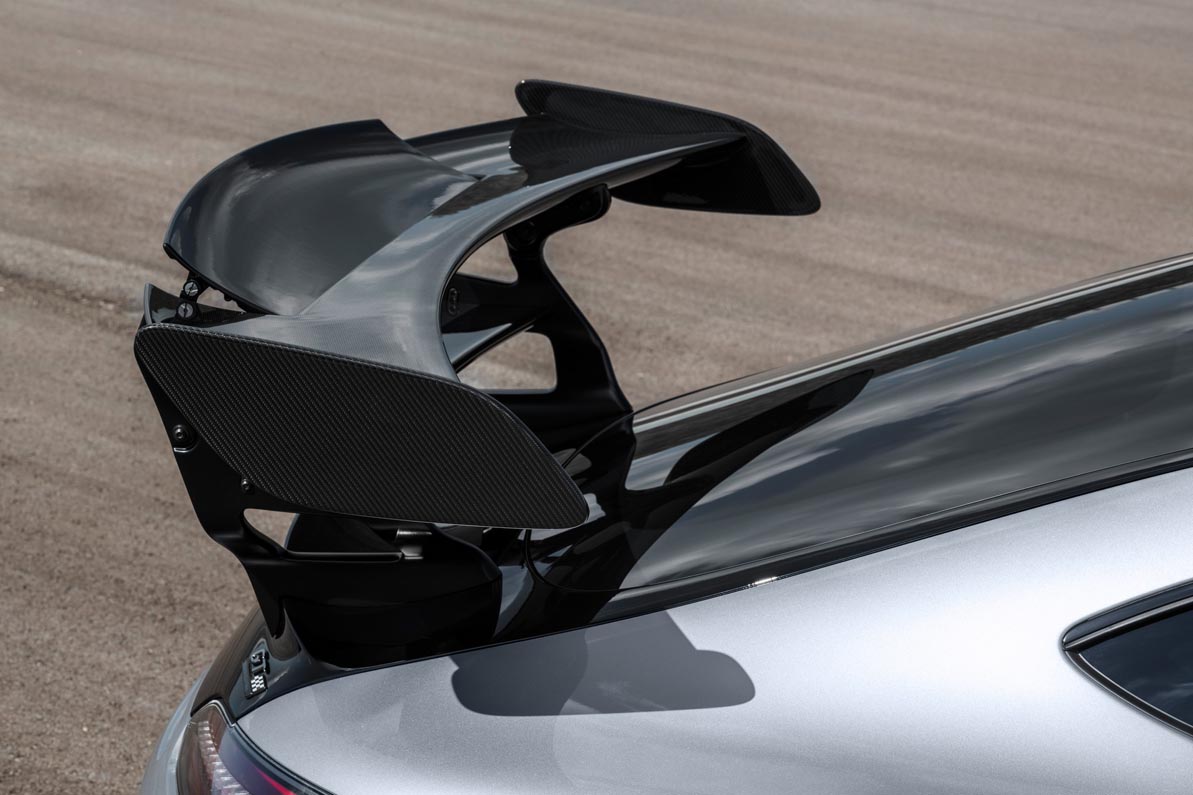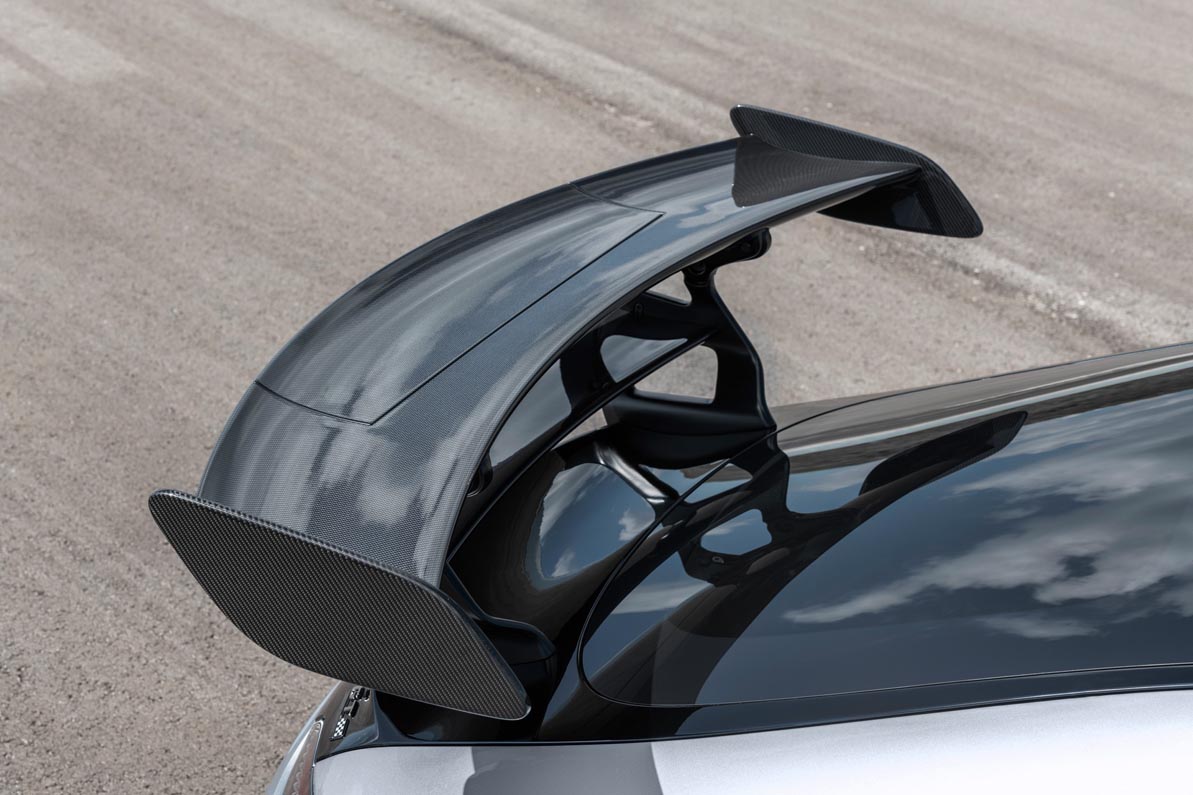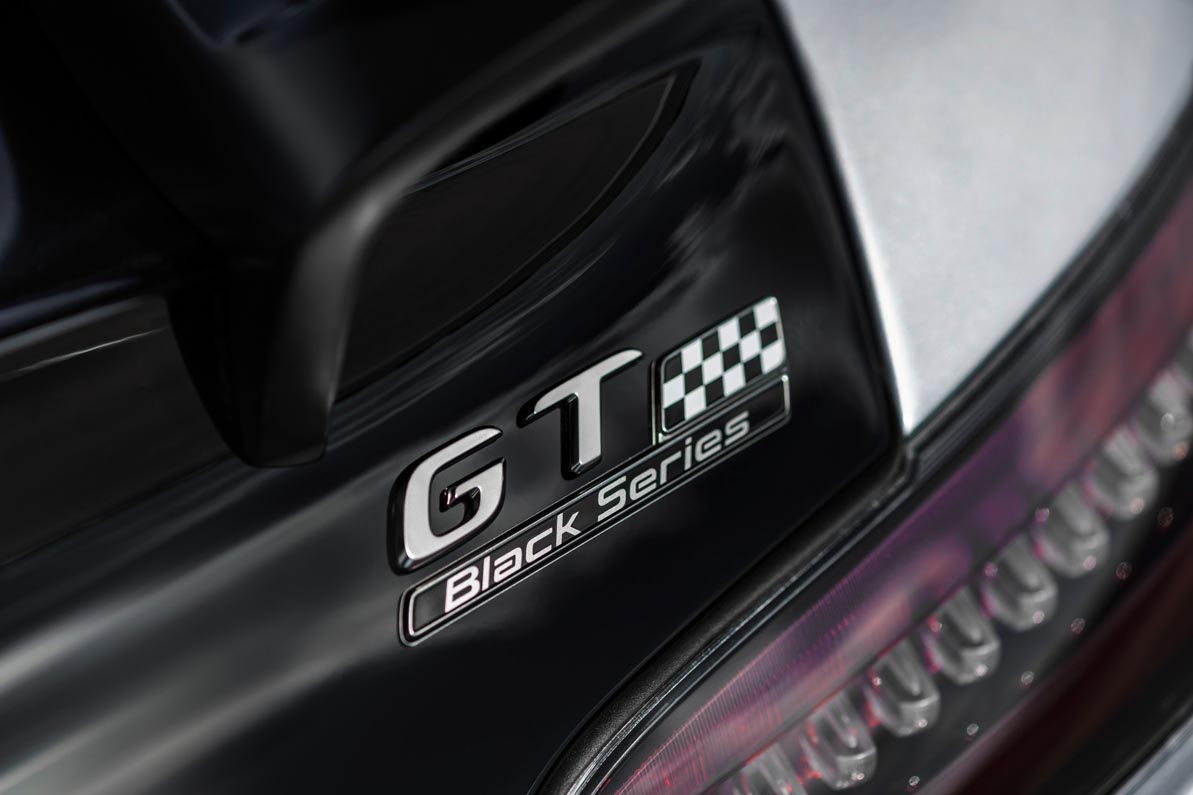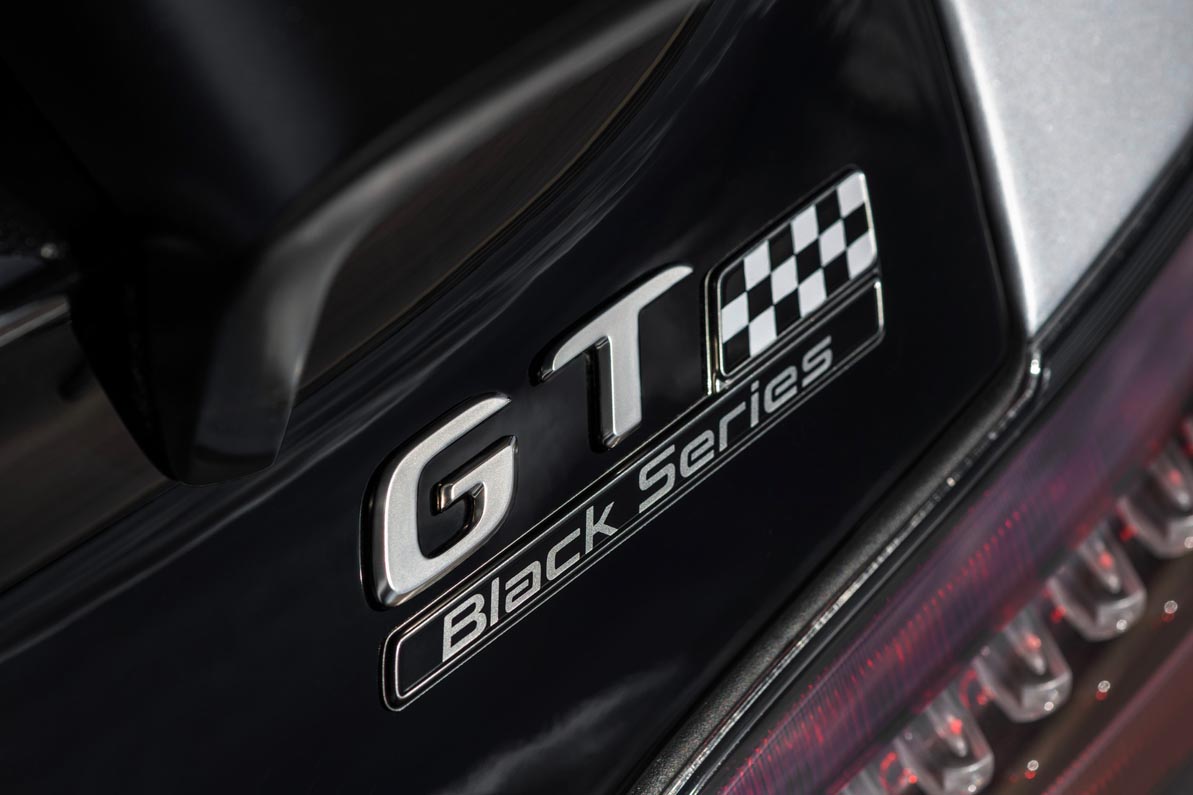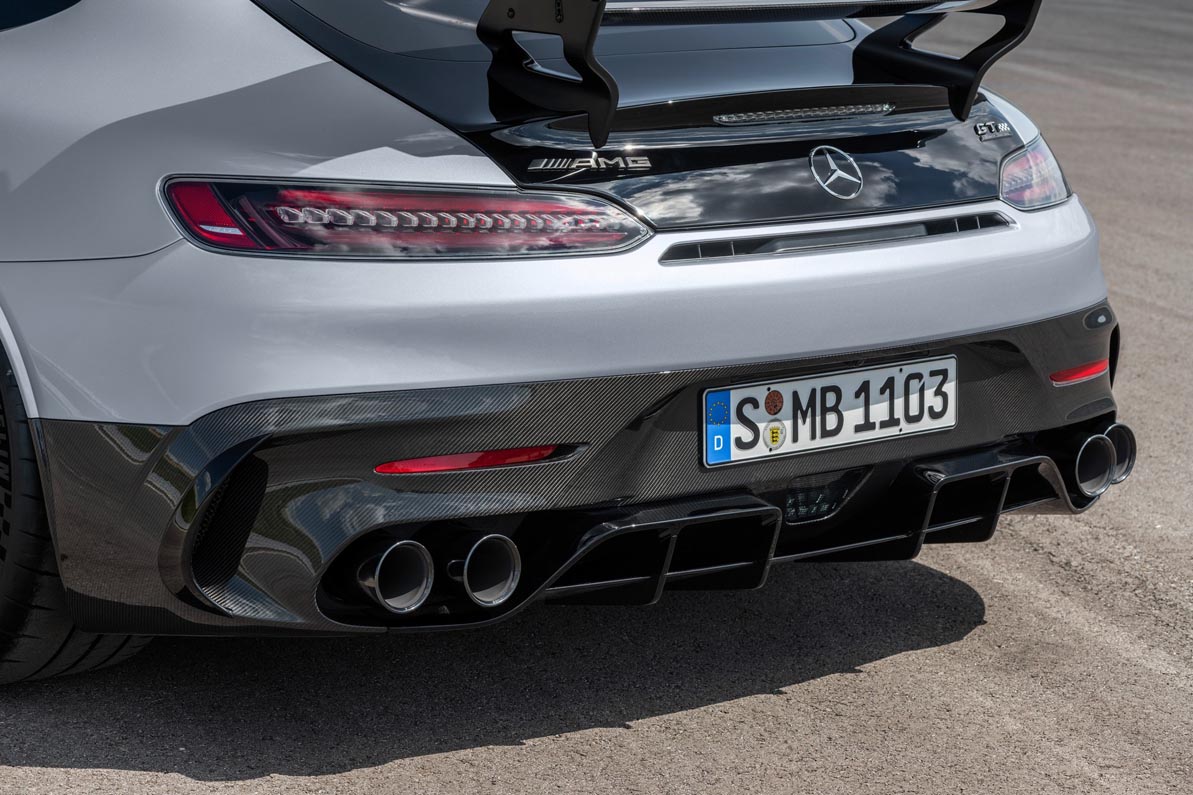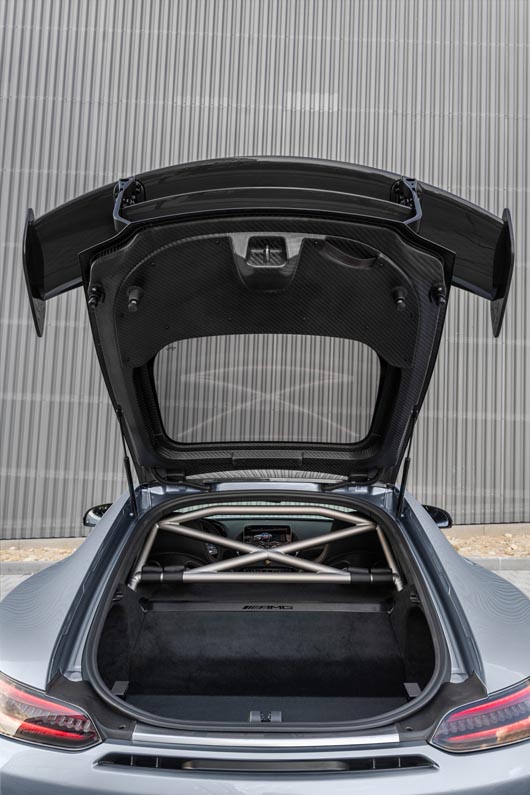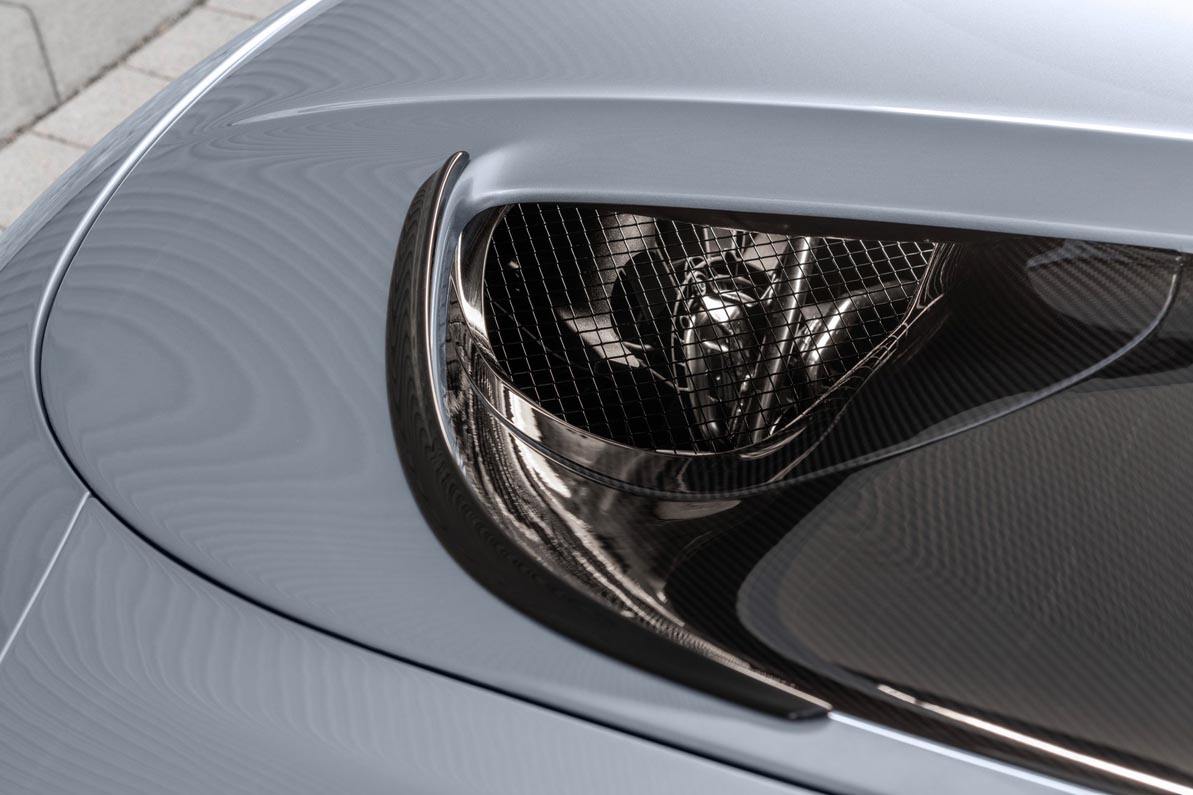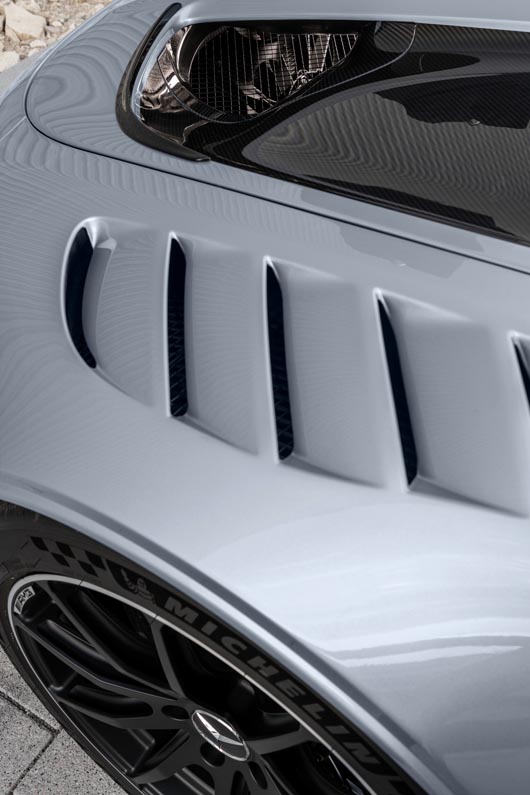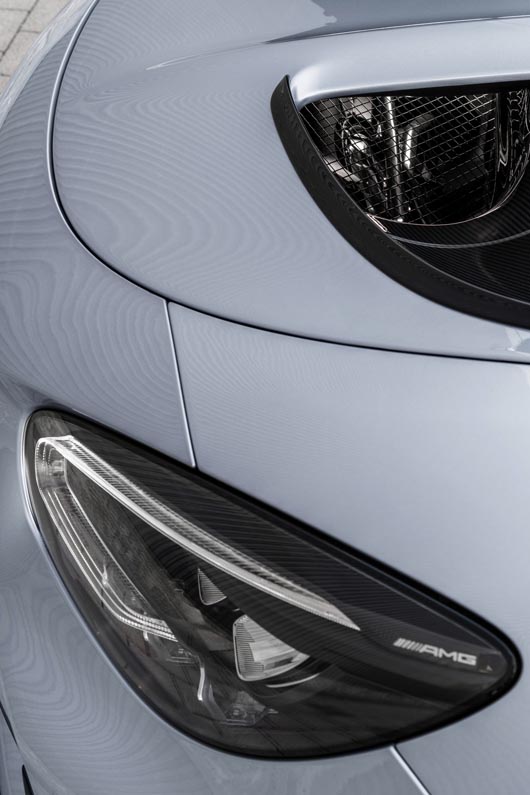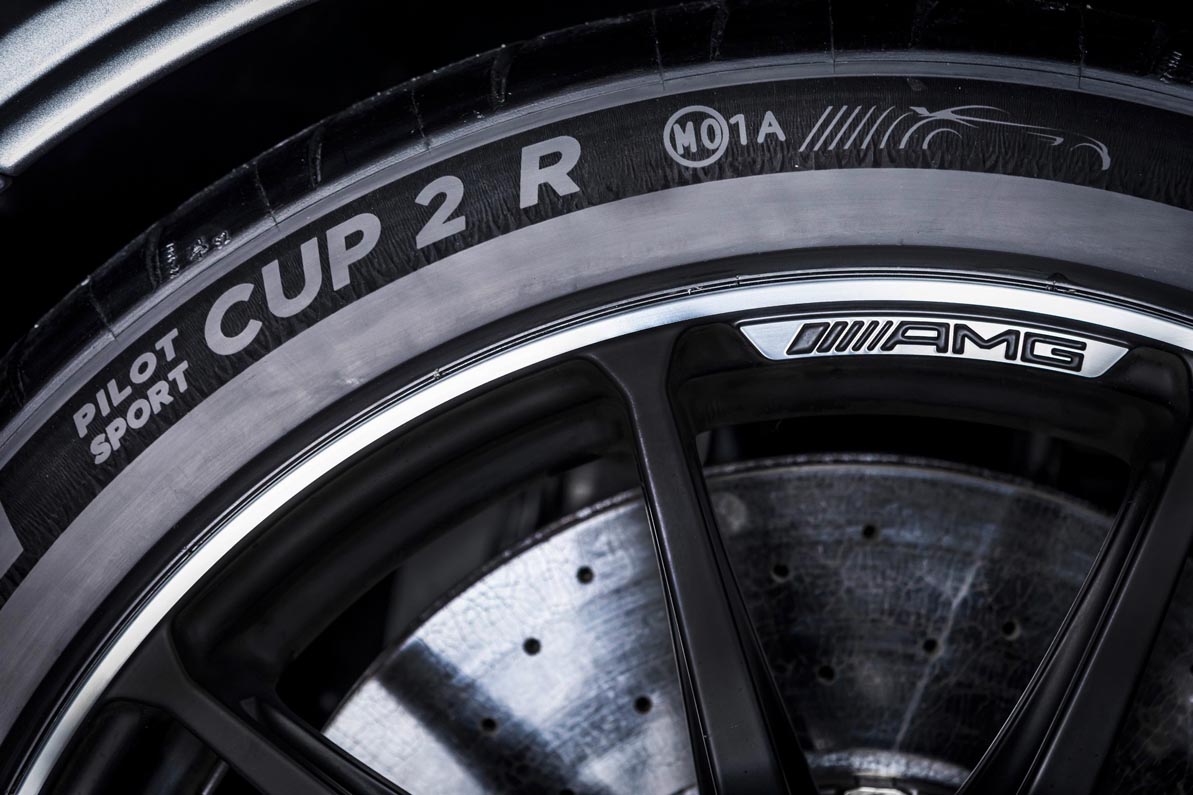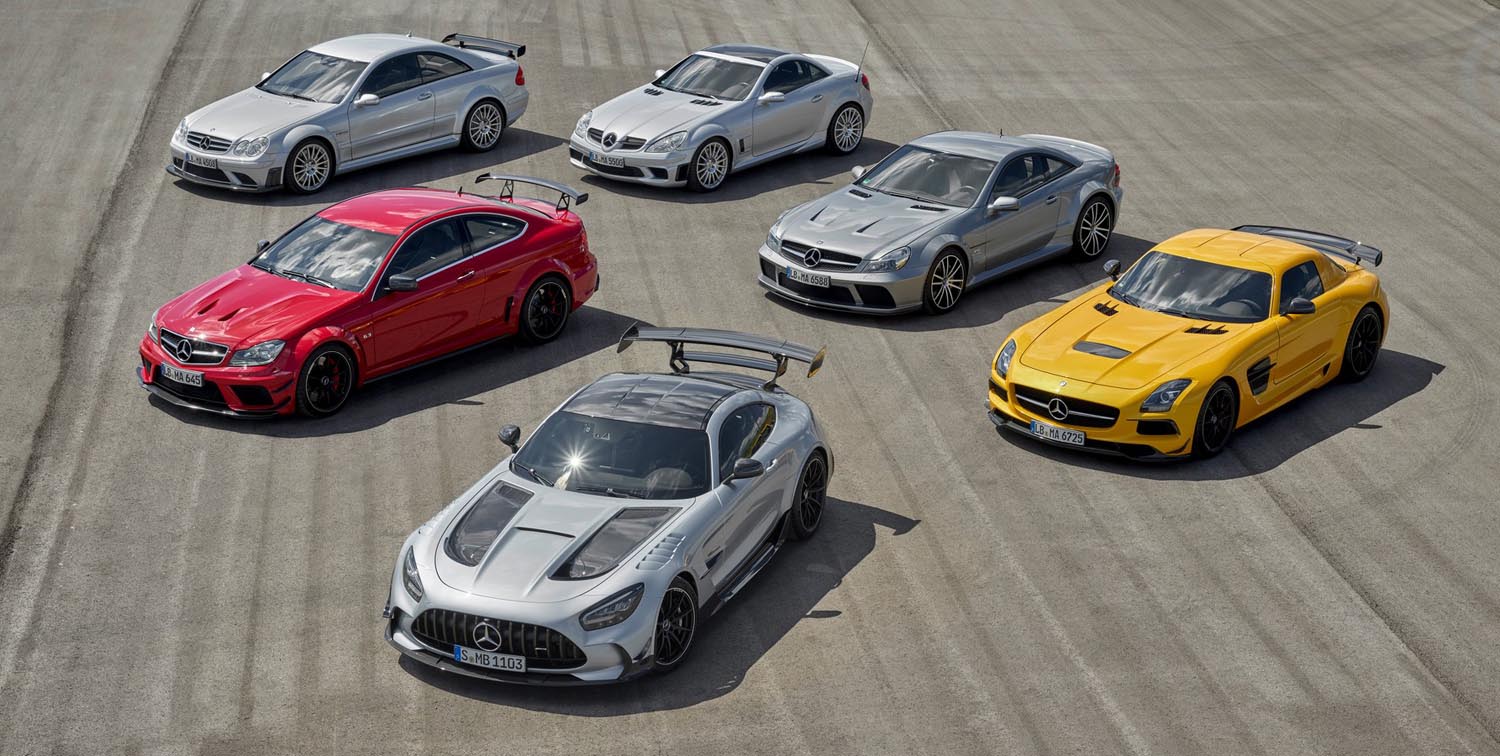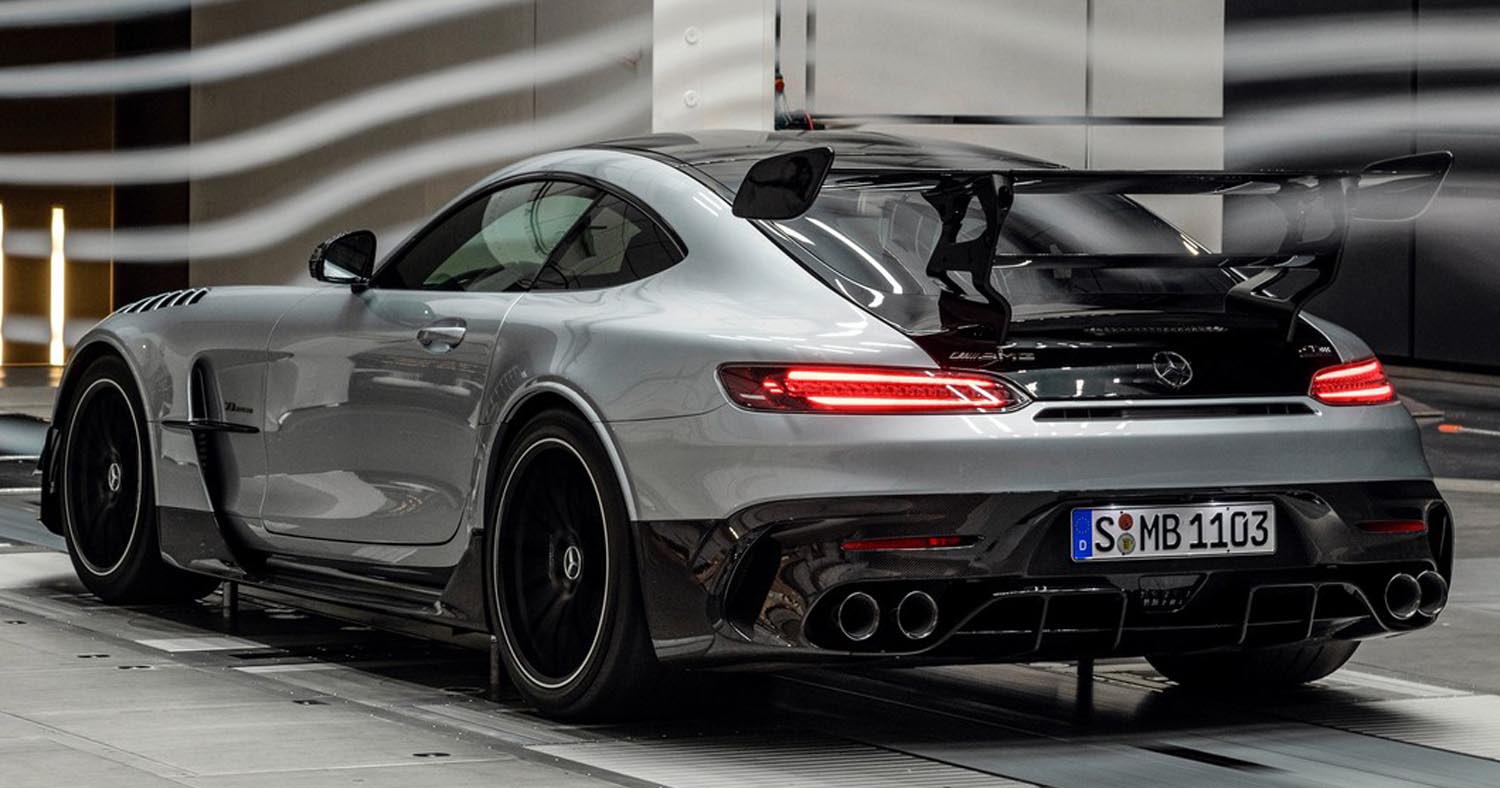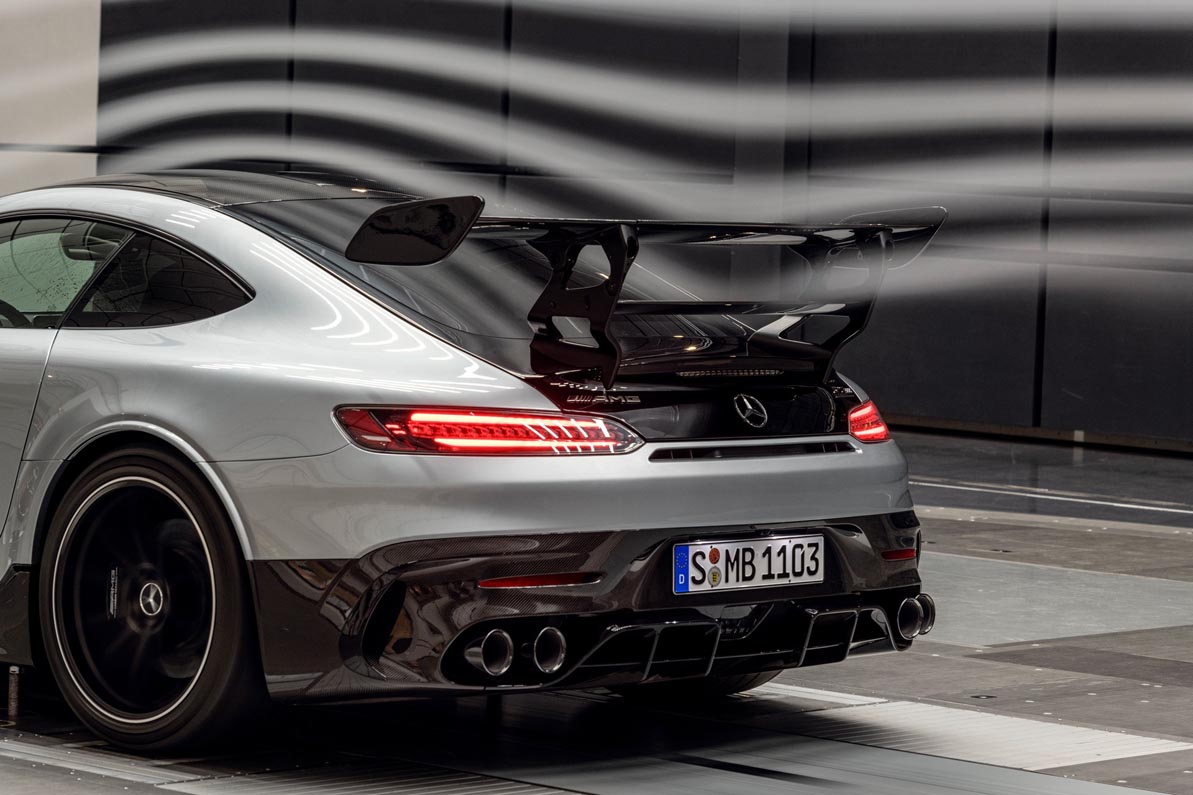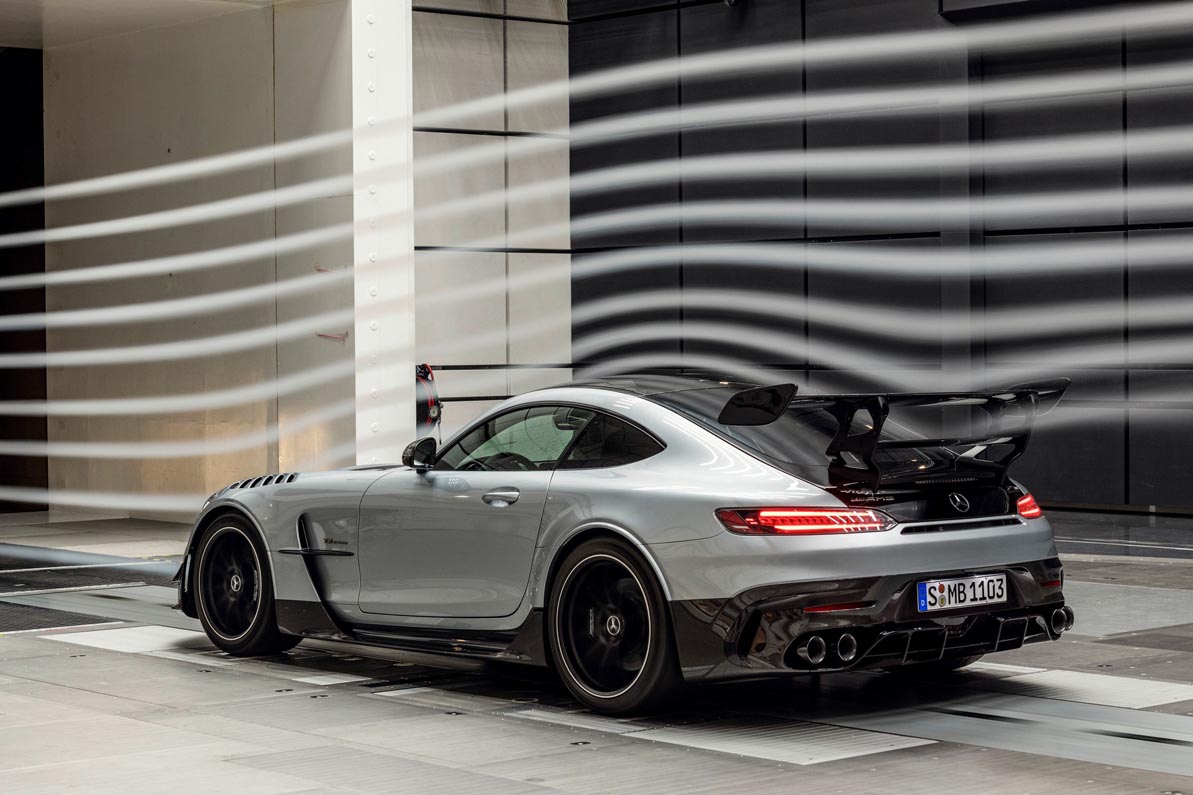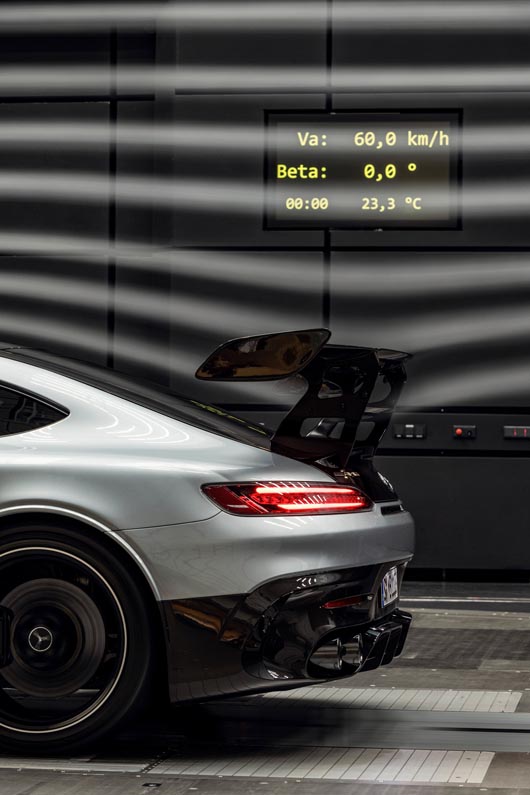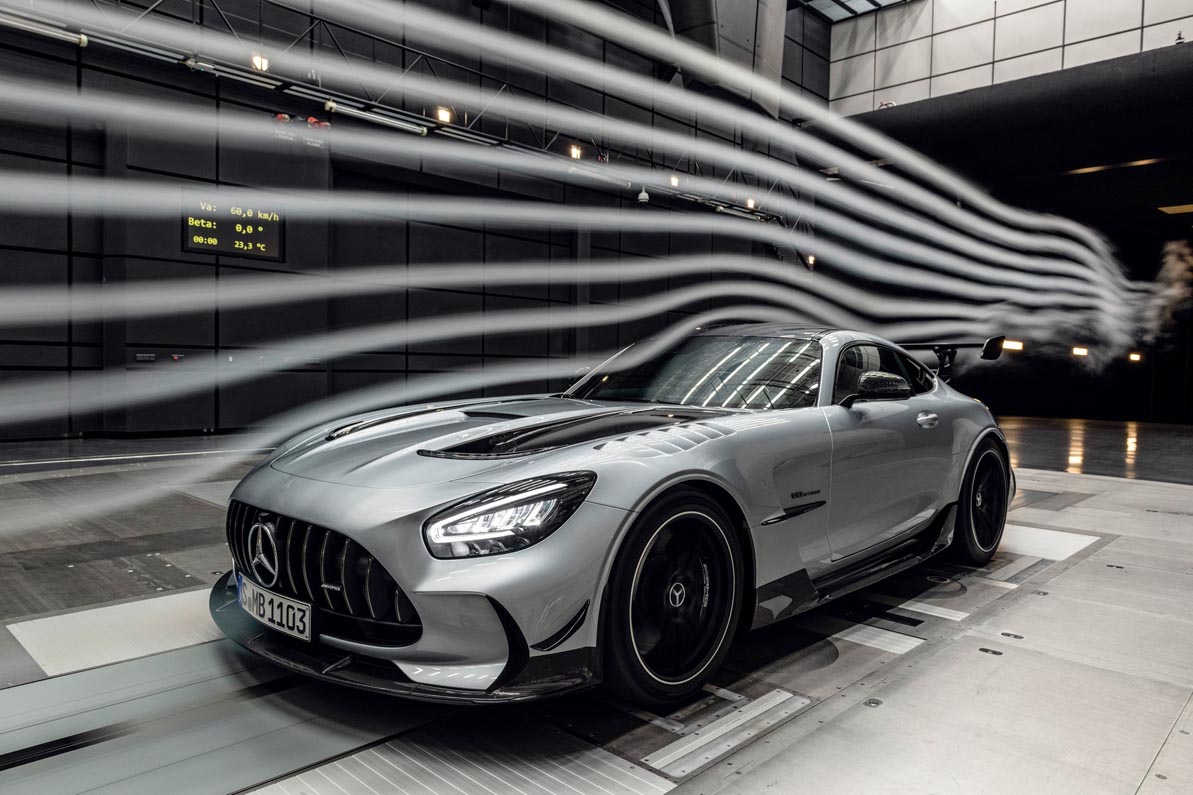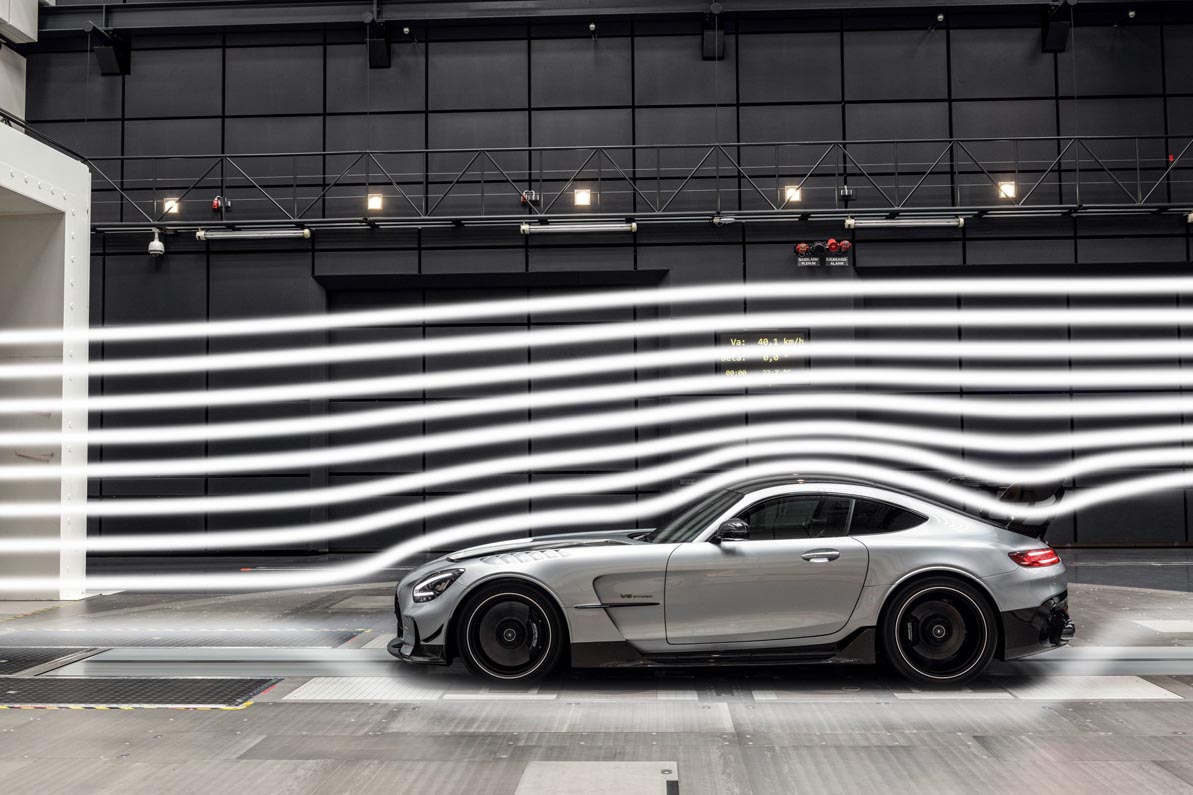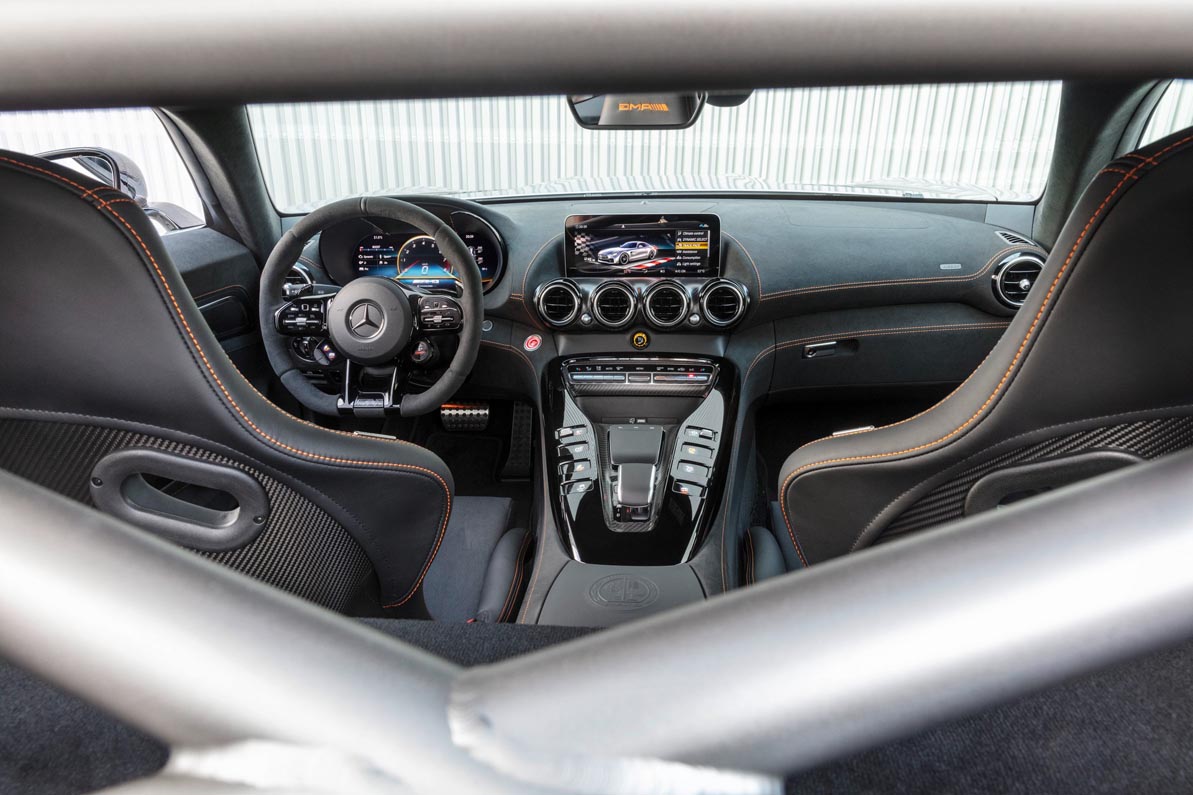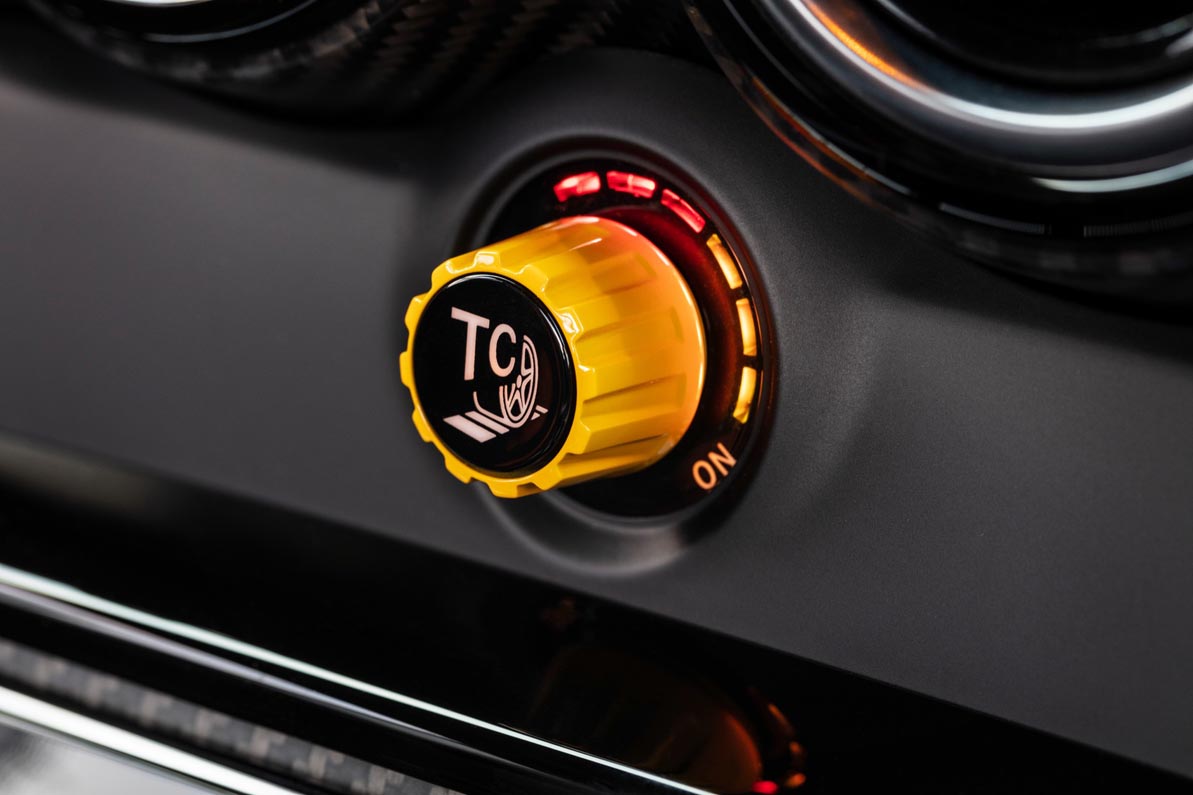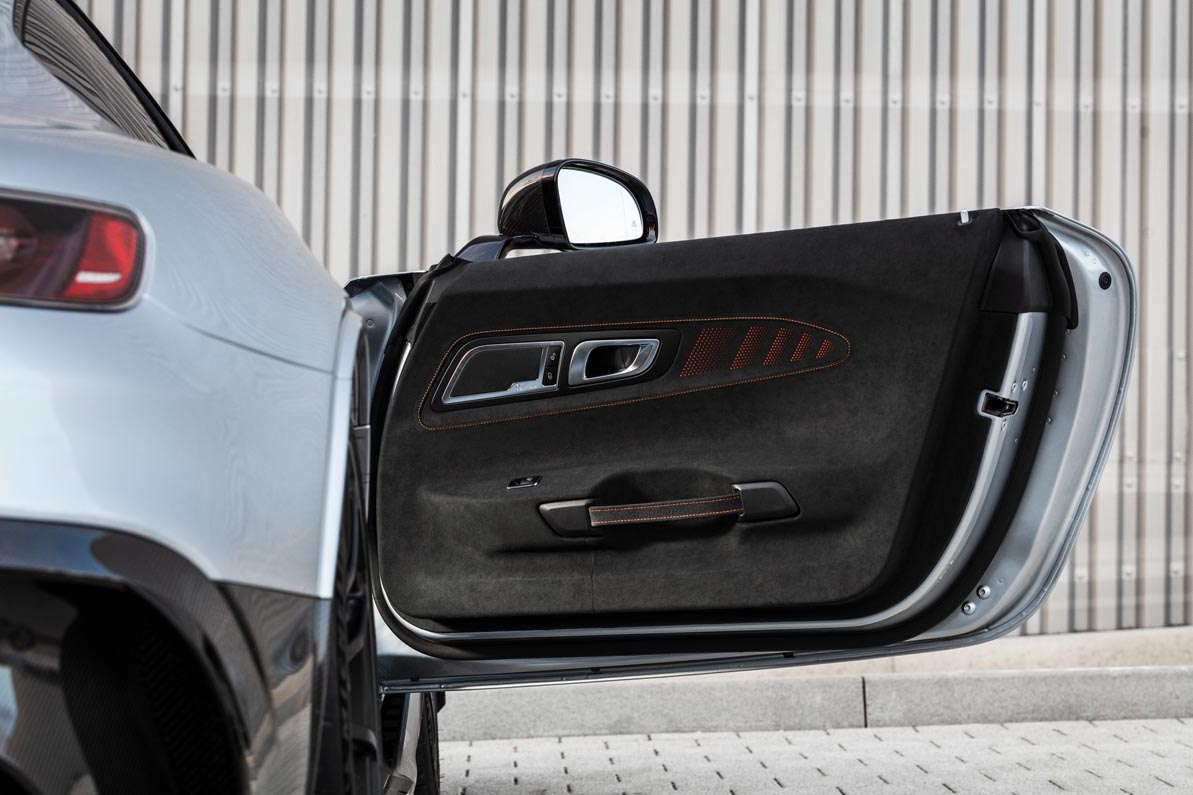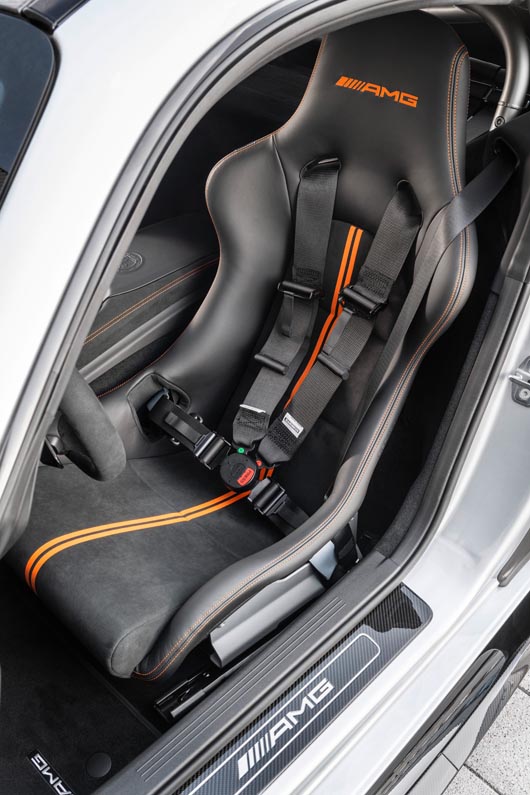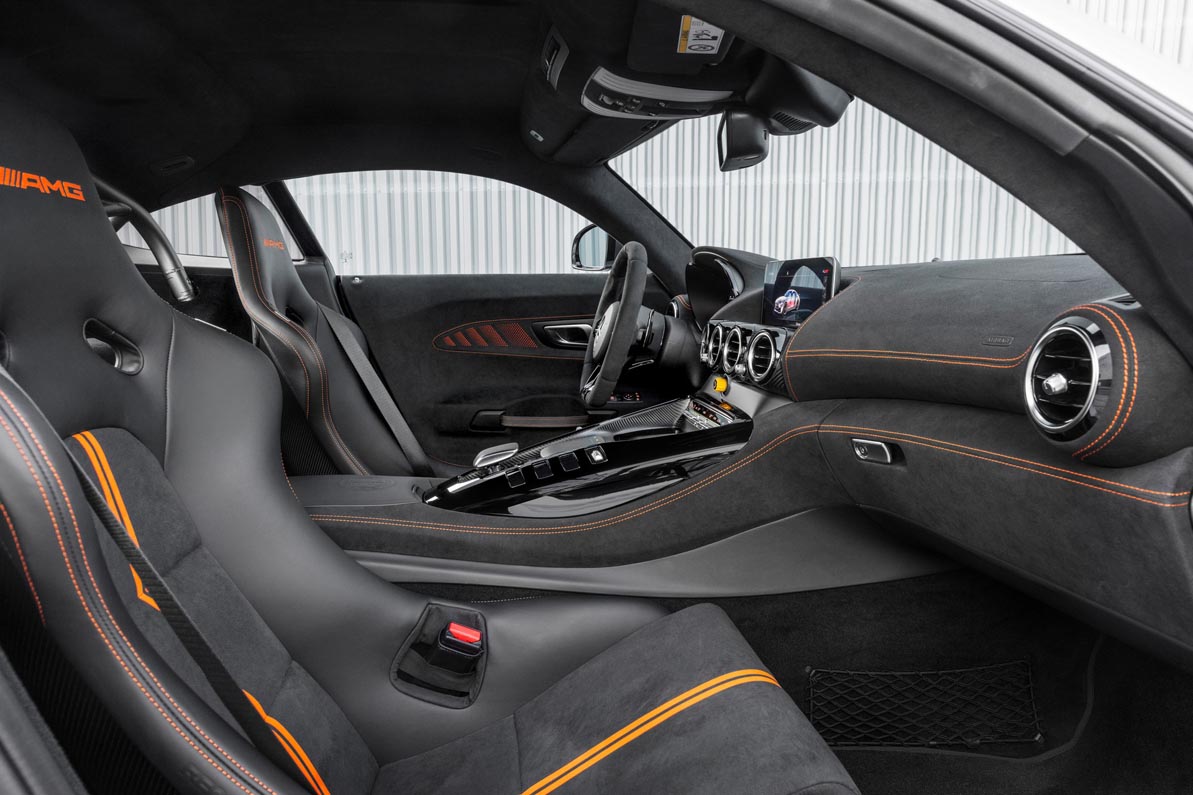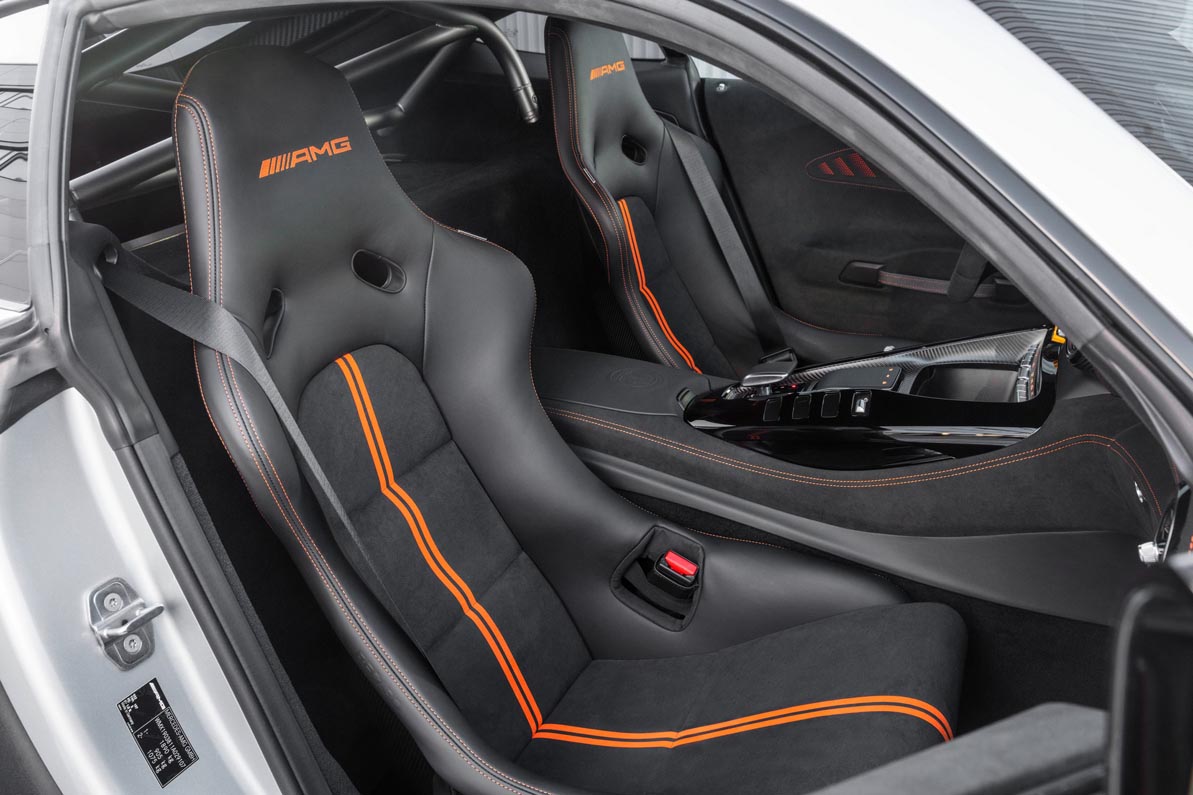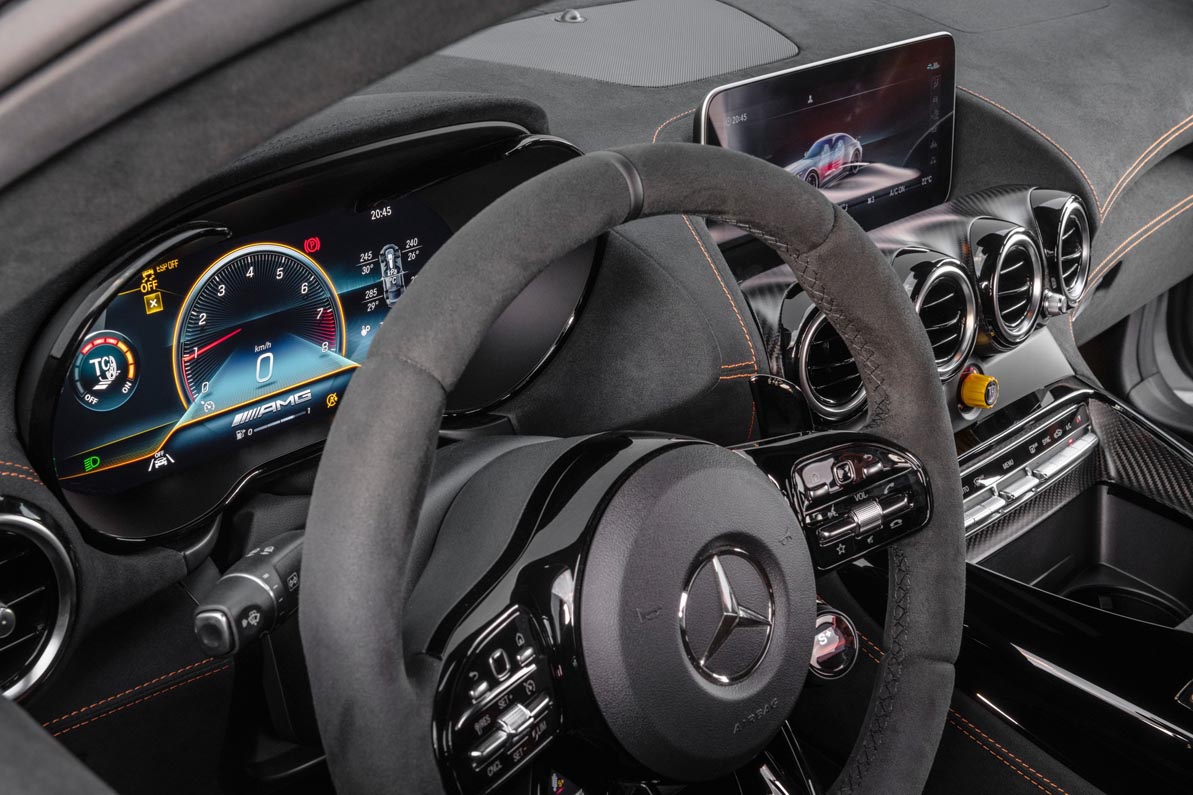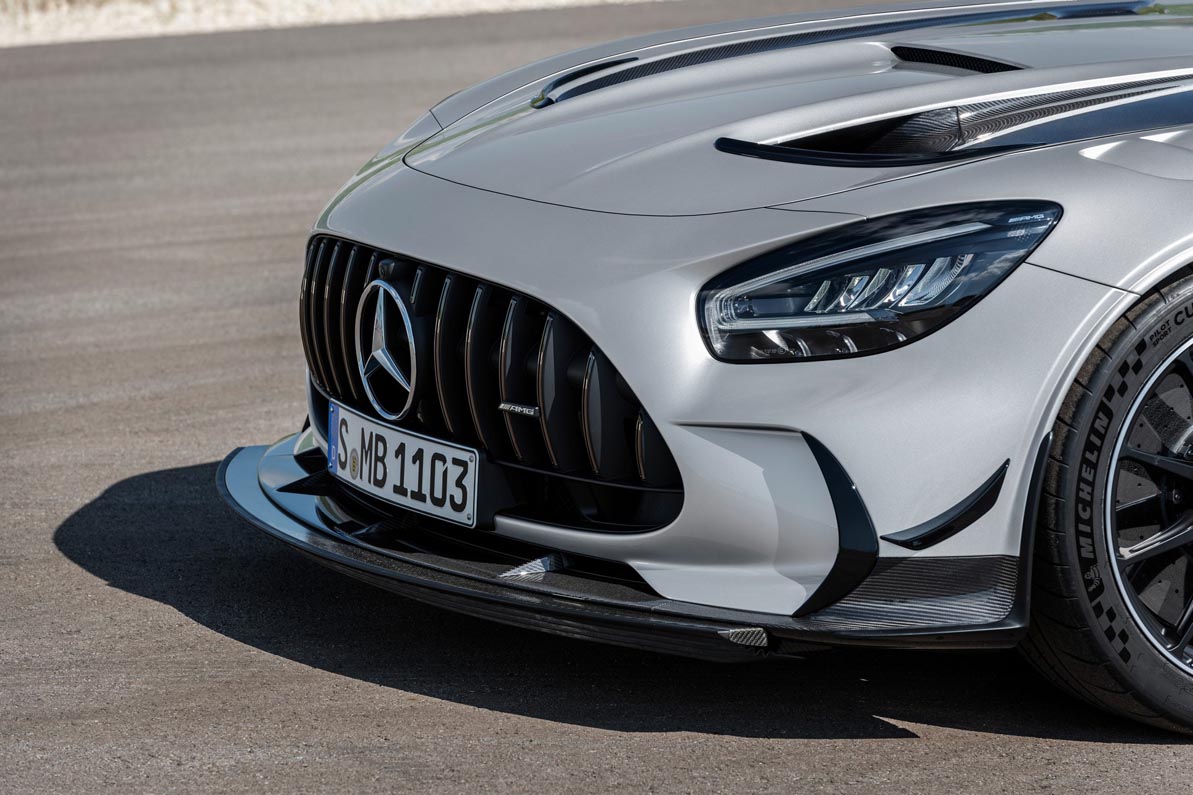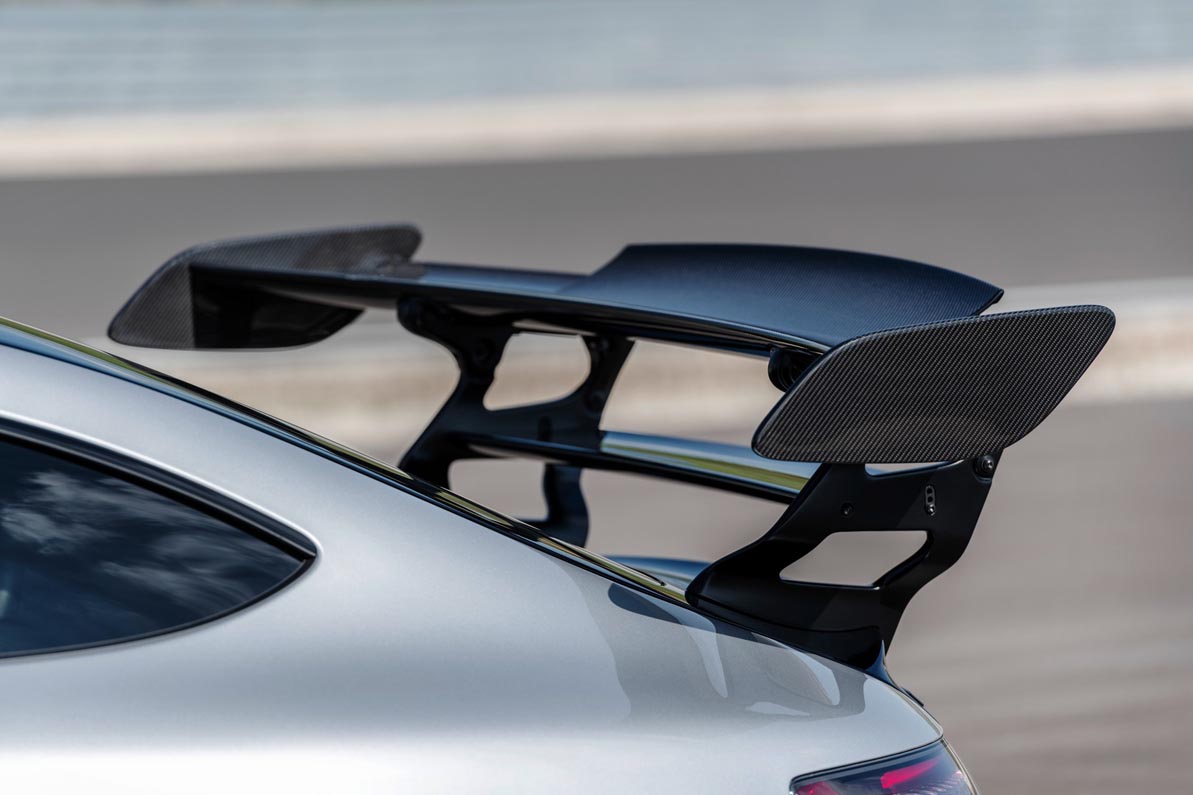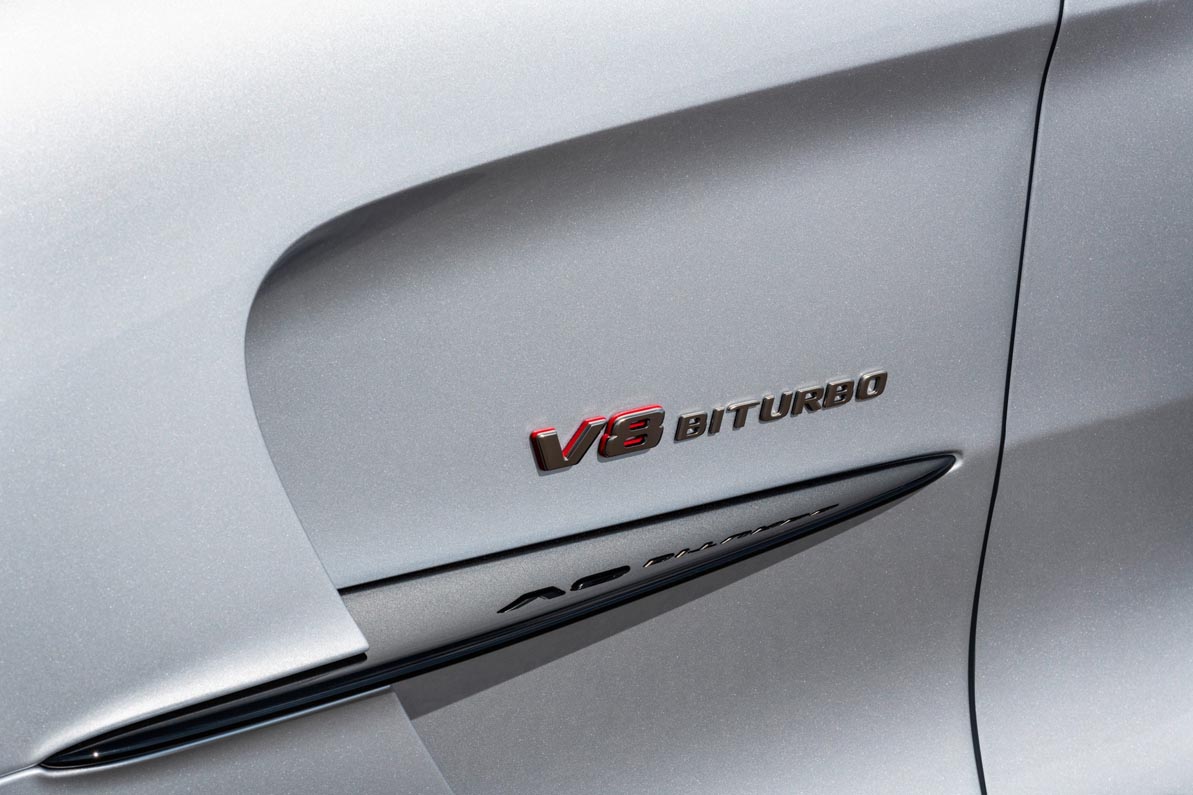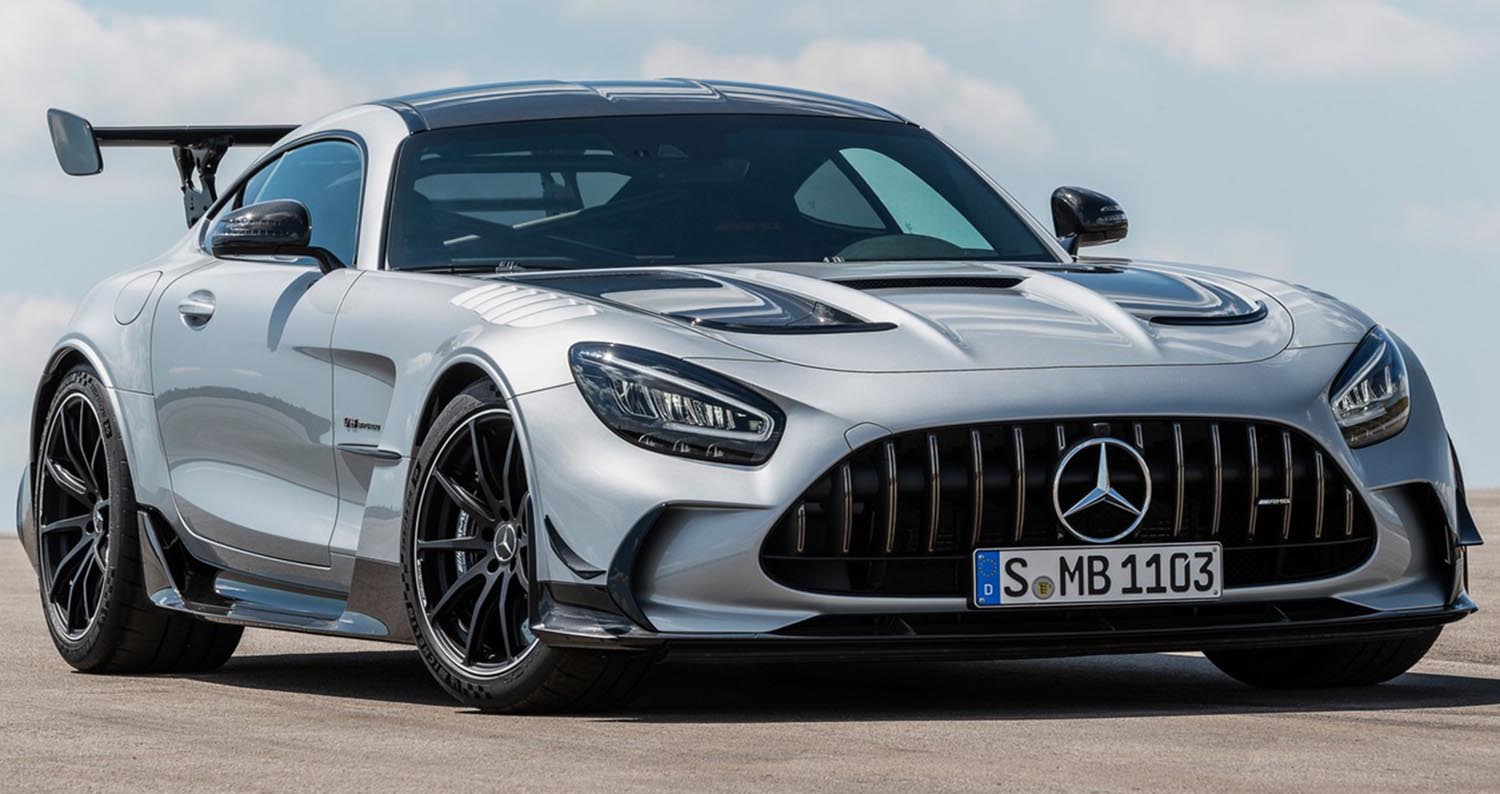
The most powerful AMG V8 series engine of all time, the most expressive design, the most elaborate aerodynamics, the most intelligent material mix, the most distinctive driving dynamics: For the new Mercedes-AMG GT Black Series, the Affalterbach designers have pulled out all the stops when it comes to the art of vehicle design. The new super sports car perfectly embodies the brand’s rich tradition in motorsport, as well its many years of expertise in developing complete vehicles which impress in every respect. The result is an output of 537 kW (730 hp) from a V8 engine with a ‘flat’ crankshaft, combined with active aerodynamics and a design which stems directly from the current AMG GT3 racing car.
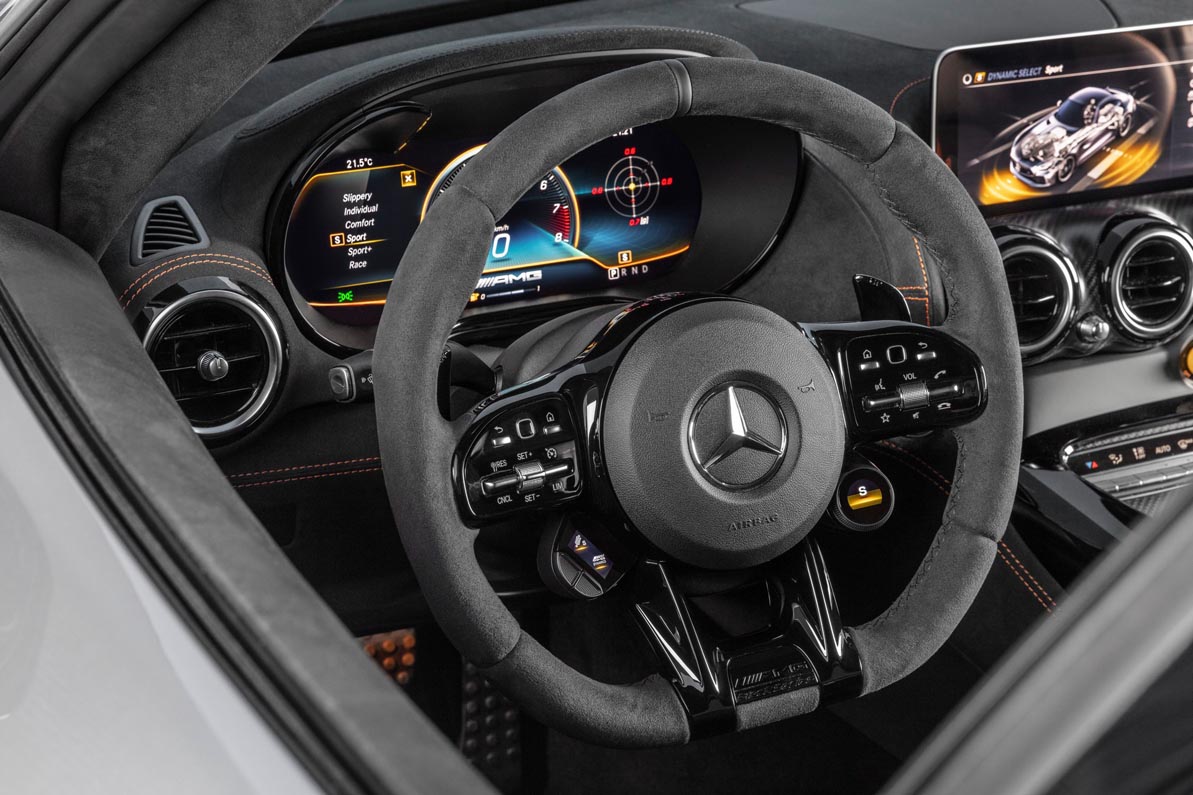
At Mercedes-AMG, the Black Series has been synonymous with a very special type of car since 2006: uncompromisingly sporty, with an expressive design and the most consistent technology transfer from motorsport to series production. Black Series models are exclusive automotive rarities. They have not been developed to gather dust in collectors’ garages, but for high-speed use on racetracks, despite being approved for roads. The AMG GT Black Series represents a new highlight in this tradition: It is the most powerful Mercedes-AMG with a V8 series engine.
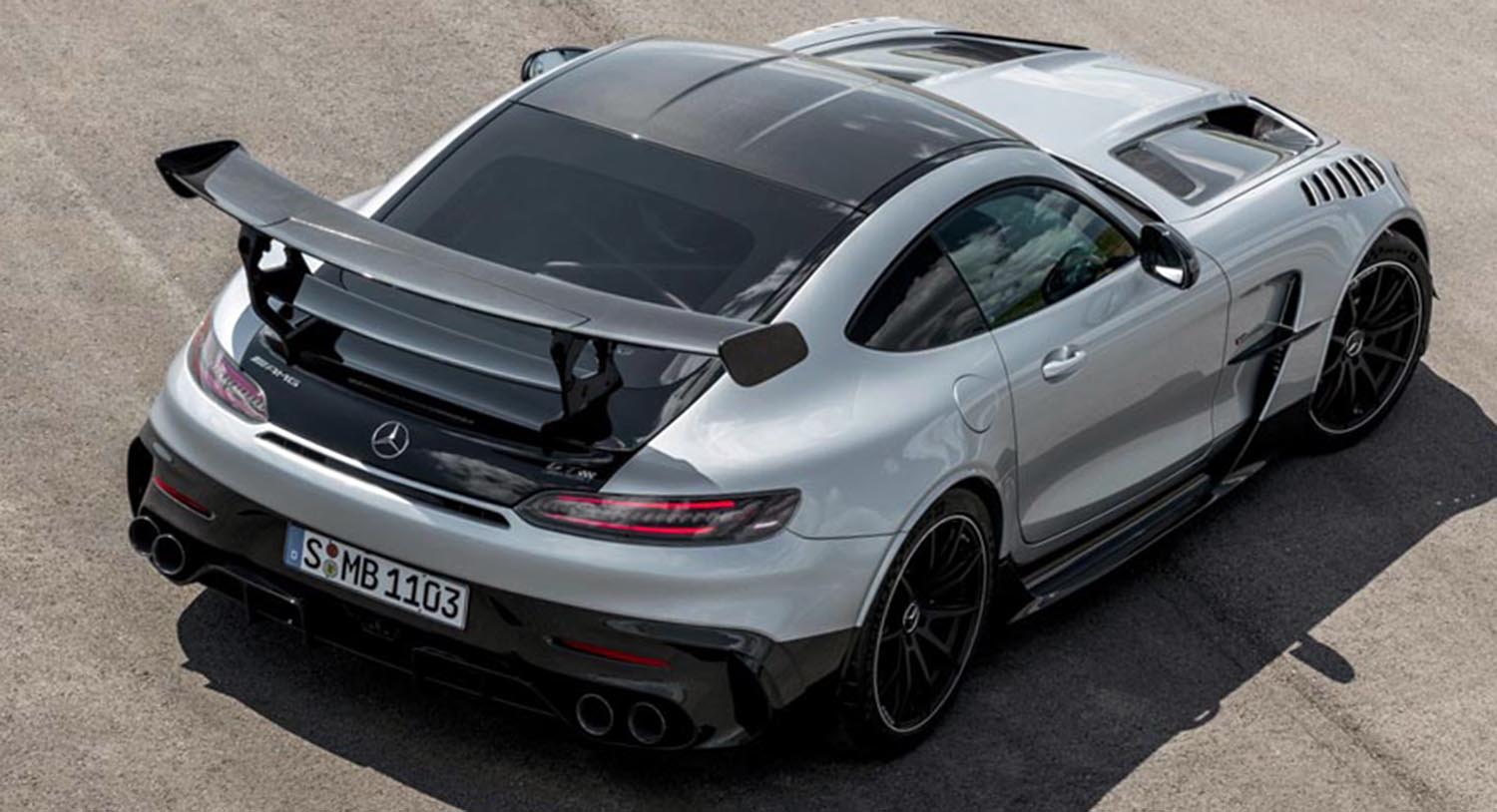
In order to emphasise the redefinition of the super sports car, the engine specialists in Affalterbach have once again extensively further developed the tried-and-tested 4.0-litre biturbo unit – despite it already being renowned for excellent driveability, power delivery and torque progression. The specifications were clear: Significantly more power than the previous flagship model of the AMG GT family, an even more agile throttle response, maximum torque – all of which meant that a radical change was needed in the form of a new, ‘flat’ crankshaft.
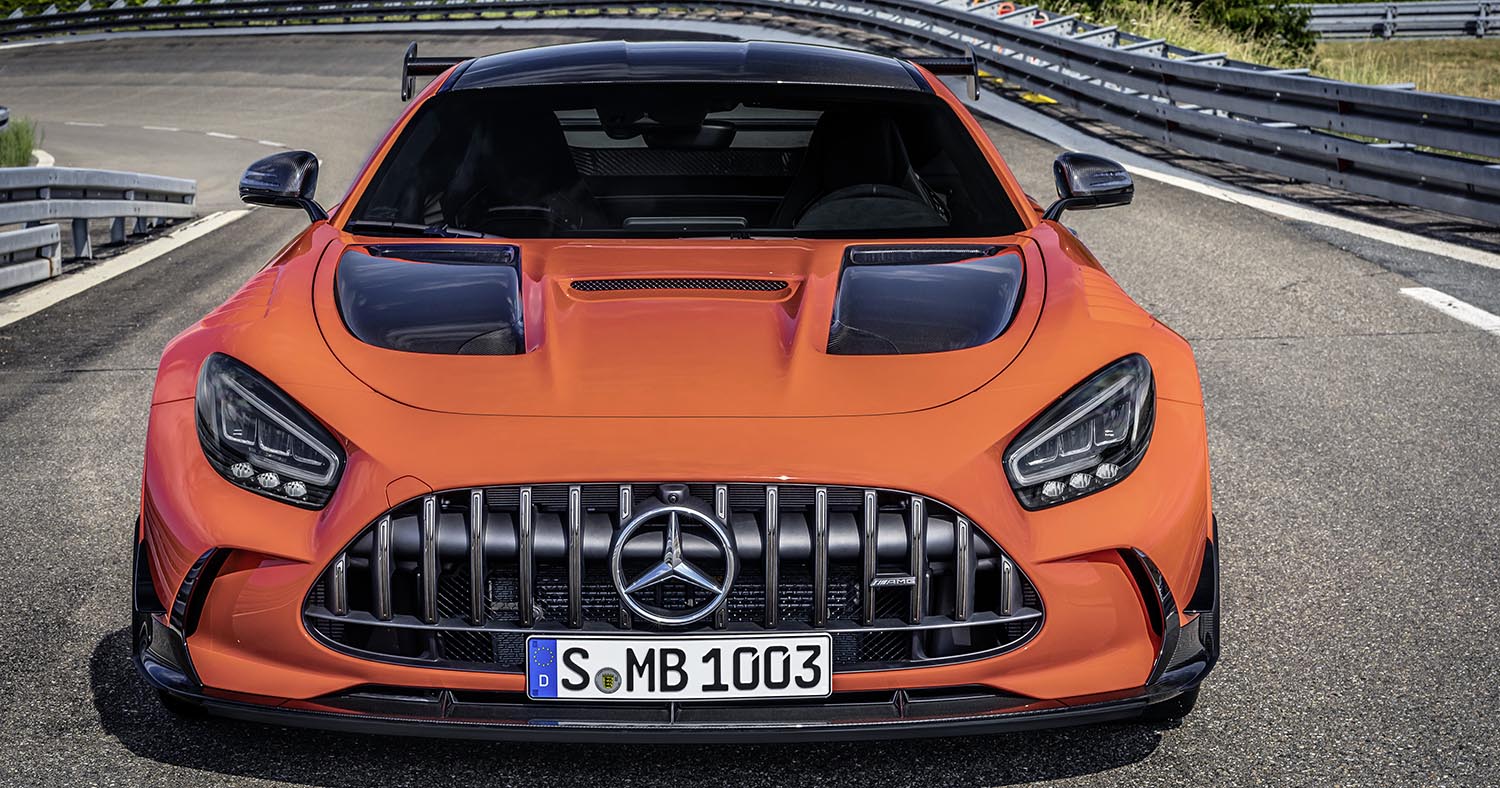
“The new GT Black Series is our latest automotive highlight and continues a tradition established in 2006. The sixth version of its kind is another AMG milestone and impressive proof of the incredible development expertise in Affalterbach. I am proud of the team who have created a unique super sports car, which now represents the absolute peak of our successful GT family. The performance, looks and driving dynamics of the GT Black Series are second to none. This project was a fantastic end to my work at AMG, for which I am truly thankful,” says Tobias Moers, Chairman of the Board at Mercedes-AMG GmbH.
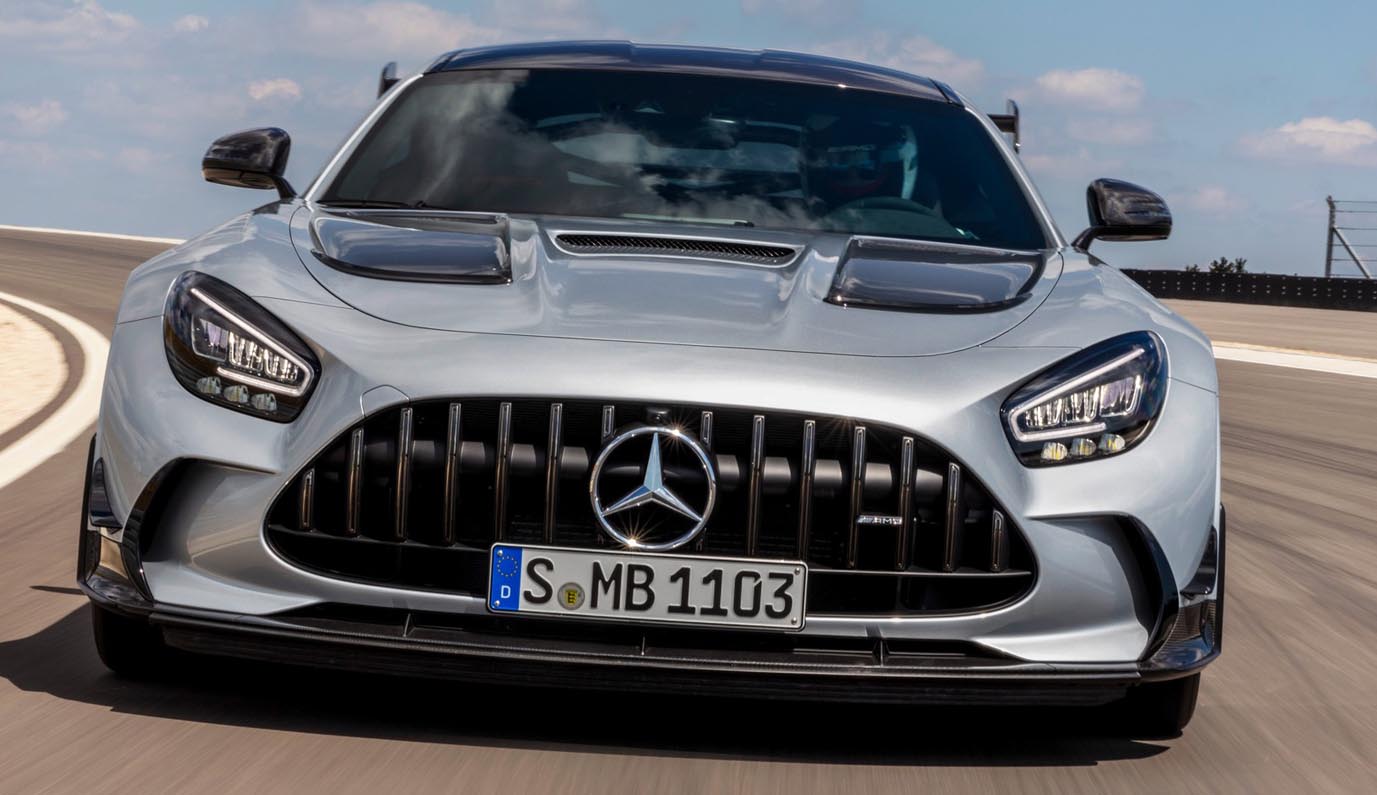
Different designs of V8 engines
The design of a V8 engine gives designers plenty of room to play with in one key element: the crank arrangement on the crankshaft. This influences the characteristics of the engine. There are usually two variants in V8 engines: the ‘cross plane’ where the crankpins of the four pairs of cylinders are at 90-degree angles to each other, which AMG has used in all previous V8 engines, or the ‘flat crankshaft’, where all crankpins are on the same plane with a 180-degree offset (‘flat plane’).

If you look at the front of a cross-plane crankshaft, you will be able to identify the cross that gives it its name. The benefits of these crankshafts are superb smoothness and high torque at low rotational speeds. The characteristic sound is another hallmark feature of the cross-plane V8 engine. In order to make optimal use of the displacement and therefore the performance potential in the case of the 4.0-litre V8 biturbo engine, the AMG engineers have essentially moved the exhaust side into the hot internal V of the two cylinder banks in the V8 engine.
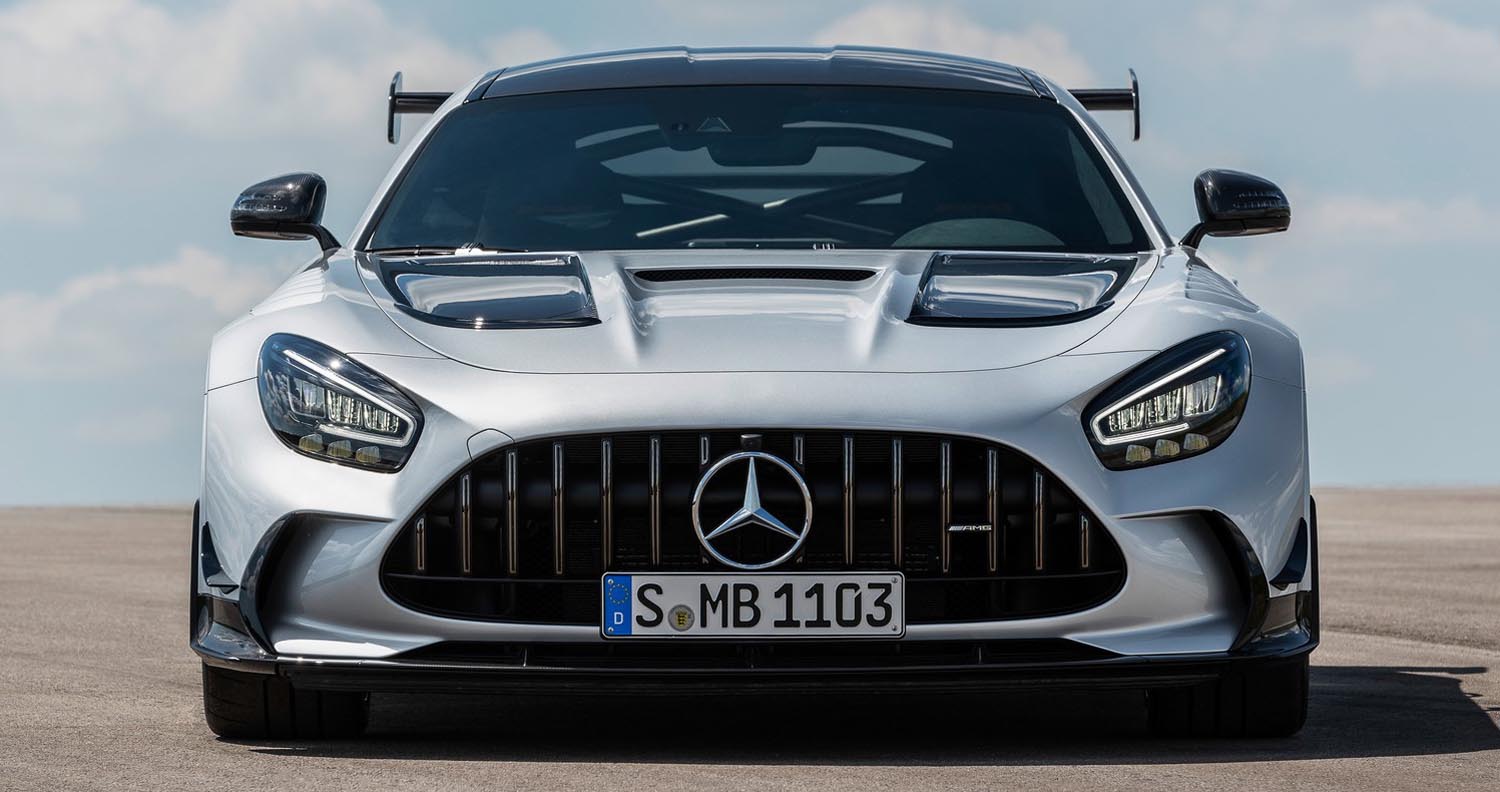
Uniformly oscillating gas columns for even more power
Another way of increasing performance is by using a ‘flat’ crankshaft. In the flat-plane V8 engine, it looks like an inline four-cylinder model – except for the wider crankpins, which have two connecting rods each in the V8. Ignition in the flat-plane V8 jumps from one cylinder bank to the next, which further improves the gas cycle. The characteristic firing order with a 180-degree crankshaft angle offset is 1-8-2-7 4-5-3-6. This creates uniformly oscillating gas columns in the exhaust tract and on the intake side, whose resonance can easily be used to increase performance. An even greater advantage is a more agile throttle response.
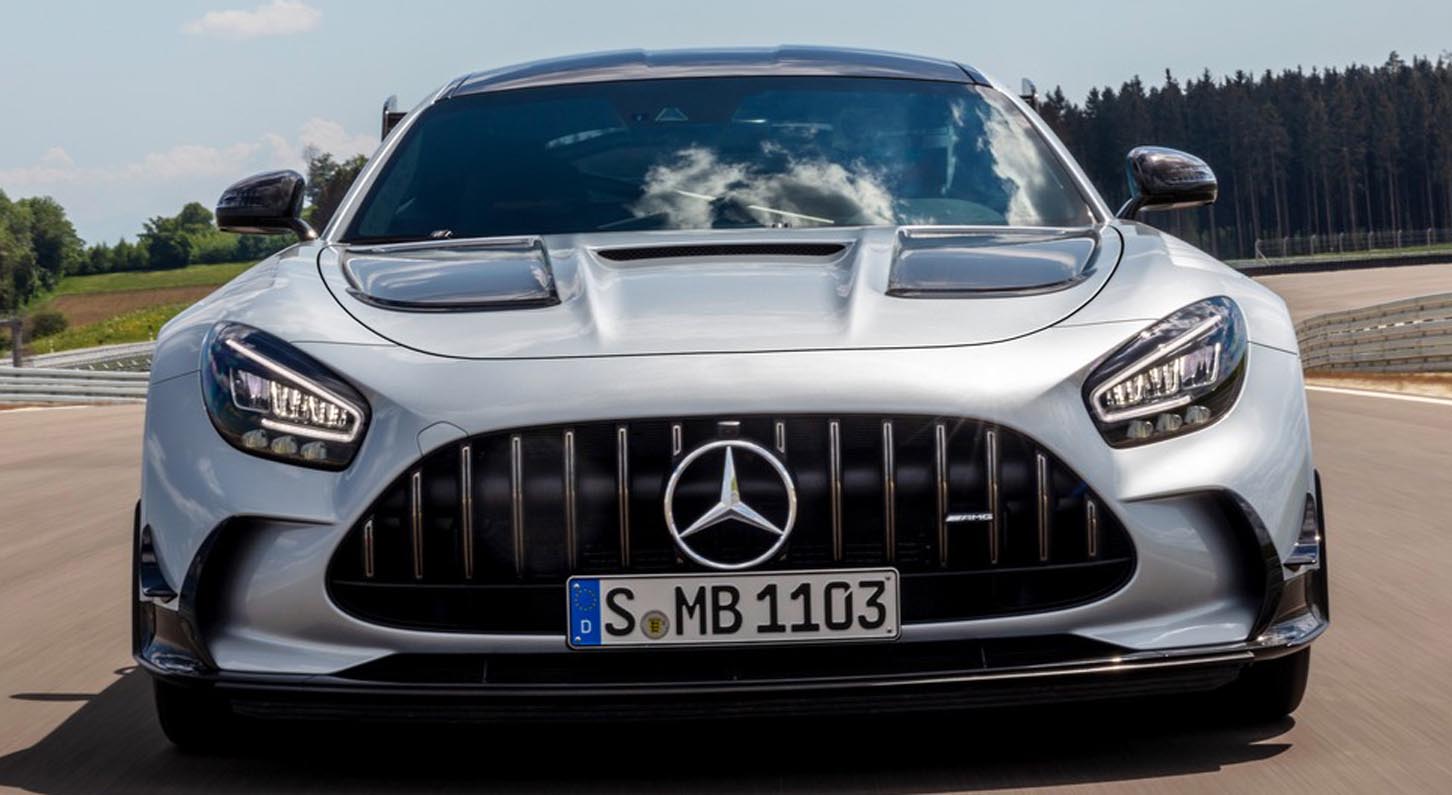
The most powerful V8 series engine from Mercedes-AMG
The new GT Black Series engine may be based on the AMG 4.0-litre V8 biturbo engine with dry sump lubrication, but it has been given the new internal code M178 LS2 due to the numerous modifications. It achieves 537 kW (730 hp) at 6700-6900 rpm and delivers a maximum torque of 800 Nm at 2000-6000 rpm. New camshafts and exhaust manifolds are adapted to the new firing order and further improve the gas cycle.
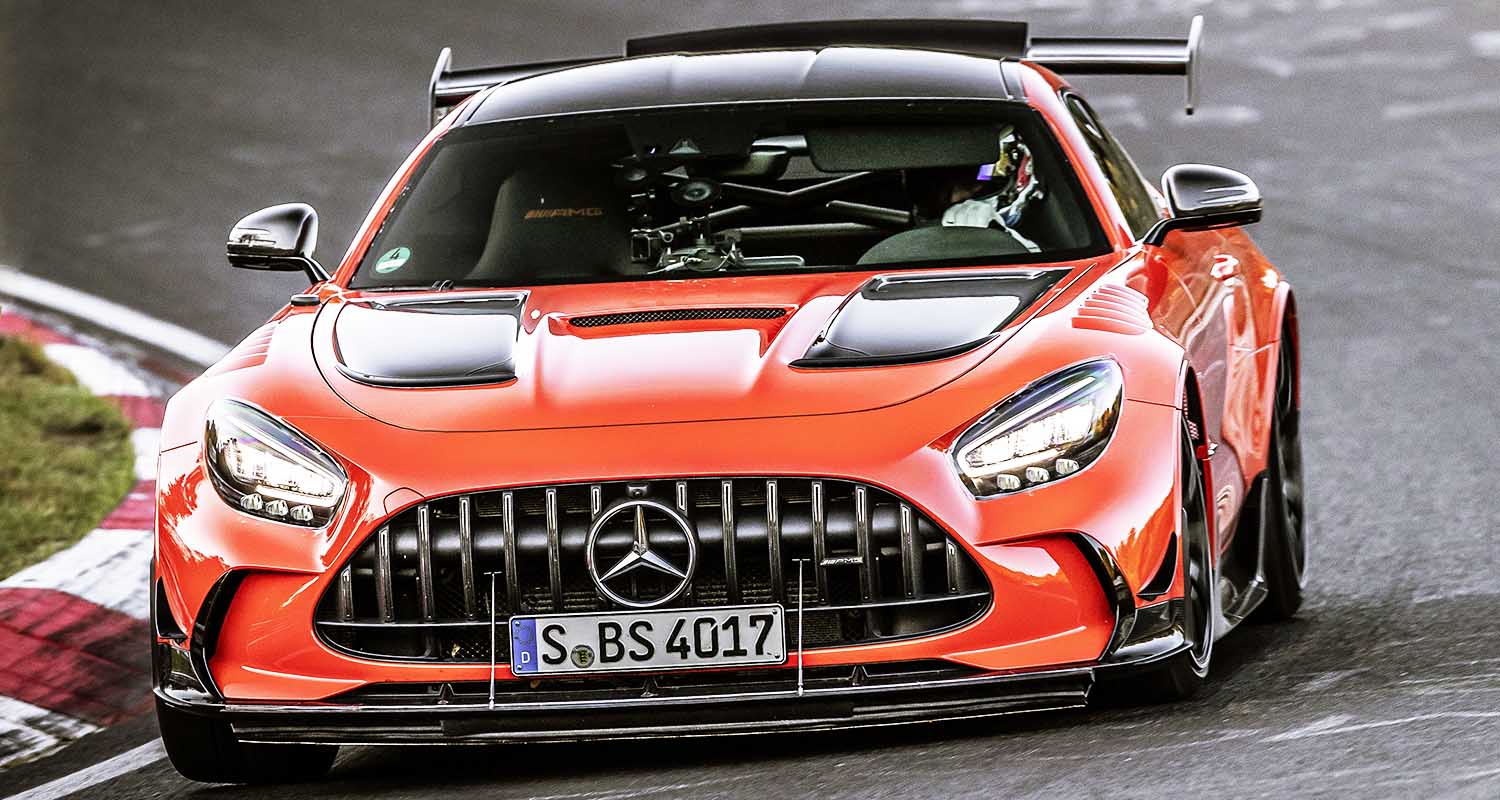
Both twin scroll exhaust turbochargers are mounted in anti-friction bearings, as in the top-of-the-range four-door AMG GT Coupé, which optimises their throttle response even further. However, in the Black Series, the turbochargers have been given a larger compressor wheel, meaning that both can deliver a total of 1100 kg air per hour. By way of comparison: The figure is 900 kg/h for the AMG GT R. 7000 rpm is not critical as a continuous speed, the speed is limited at 7200 rpm. And the larger intercoolers guarantee that they always keep the charge-air temperature within the best possible range. The unique standing of the new engine is also reflected in the engine badge, which is kept in black.
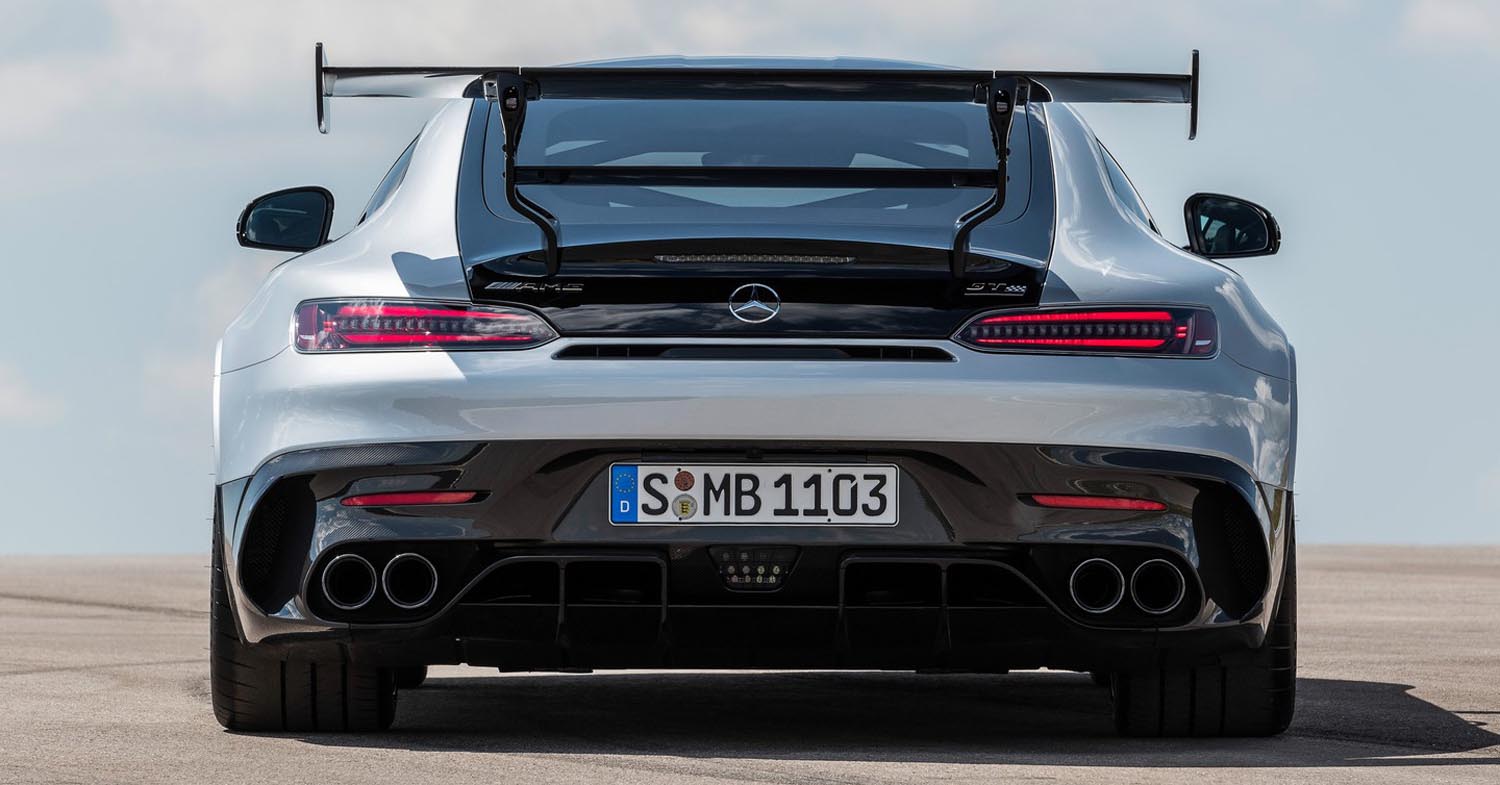
0-200 km/h in under nine seconds
What does the engine do for the AMG GT Black Series? It gives it a completely independent character, which is not only reflected in the type of power delivery, but also in its very particular sound pattern. And it enables highly impressive driving performance: The two-door vehicle shoots from 0 to 100 km/h in 3.2 seconds, and to 200 km/h in under nine seconds. The top speed is 325 km/h.
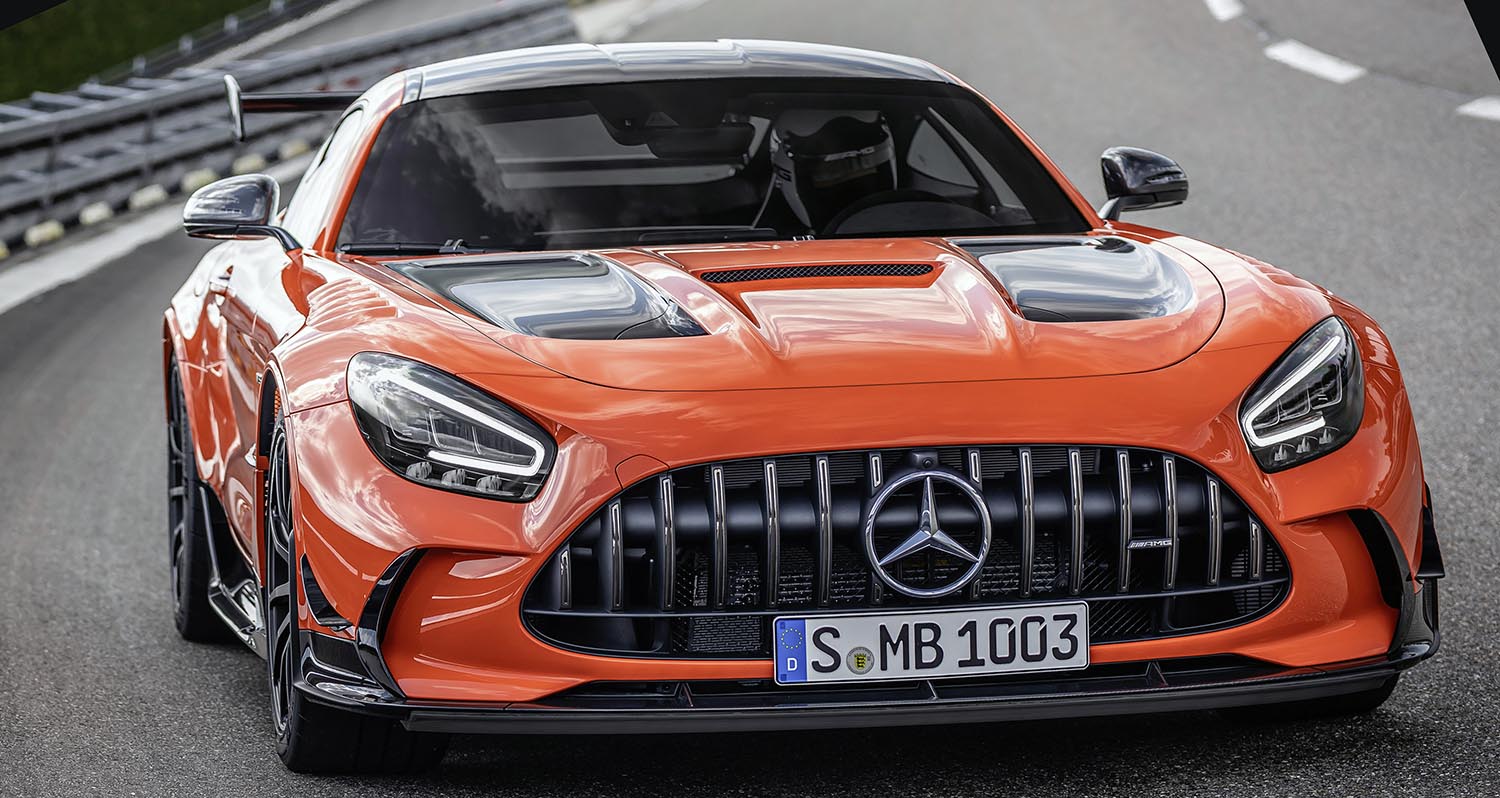
Modified AMG SPEEDSHIFT DCT 7G transmission
Power is transmitted to the rear wheels via the seven-speed AMG SPEEDSHIFT DCT 7G dual clutch transmission, which is located on the rear axle in a transaxle arrangement for optimal weight distribution, as is the case for all AMG GT models. It has been modified for use in the AMG GT Black Series and adapted to the increased torque of 800 Nm. The previous limits governing shift performance and response time have been extended, making them more suitable for racetracks.
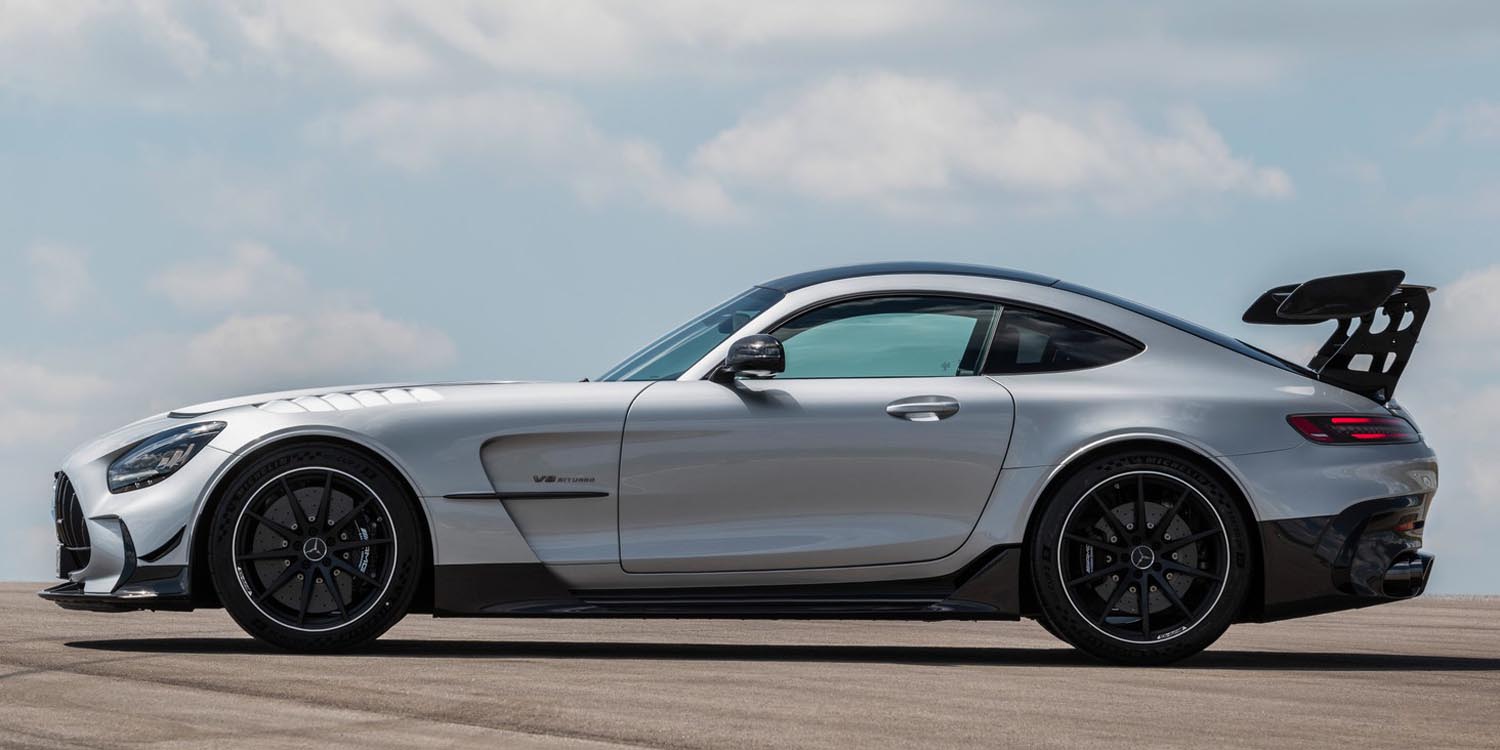
This all adds up to very different handling characteristics, as not only are the accelerator and engine response more agile – the drive programs, start-up characteristics and gear changes are, too. The Race Start function is also now even more impressive, thanks to the increased starting revs, the more sensitive wheel slip control and the sports tyres fit for the racetrack. Furthermore, the transmission cooling has been adapted to the tougher requirements, and the transmission ratios have also been slightly modified.
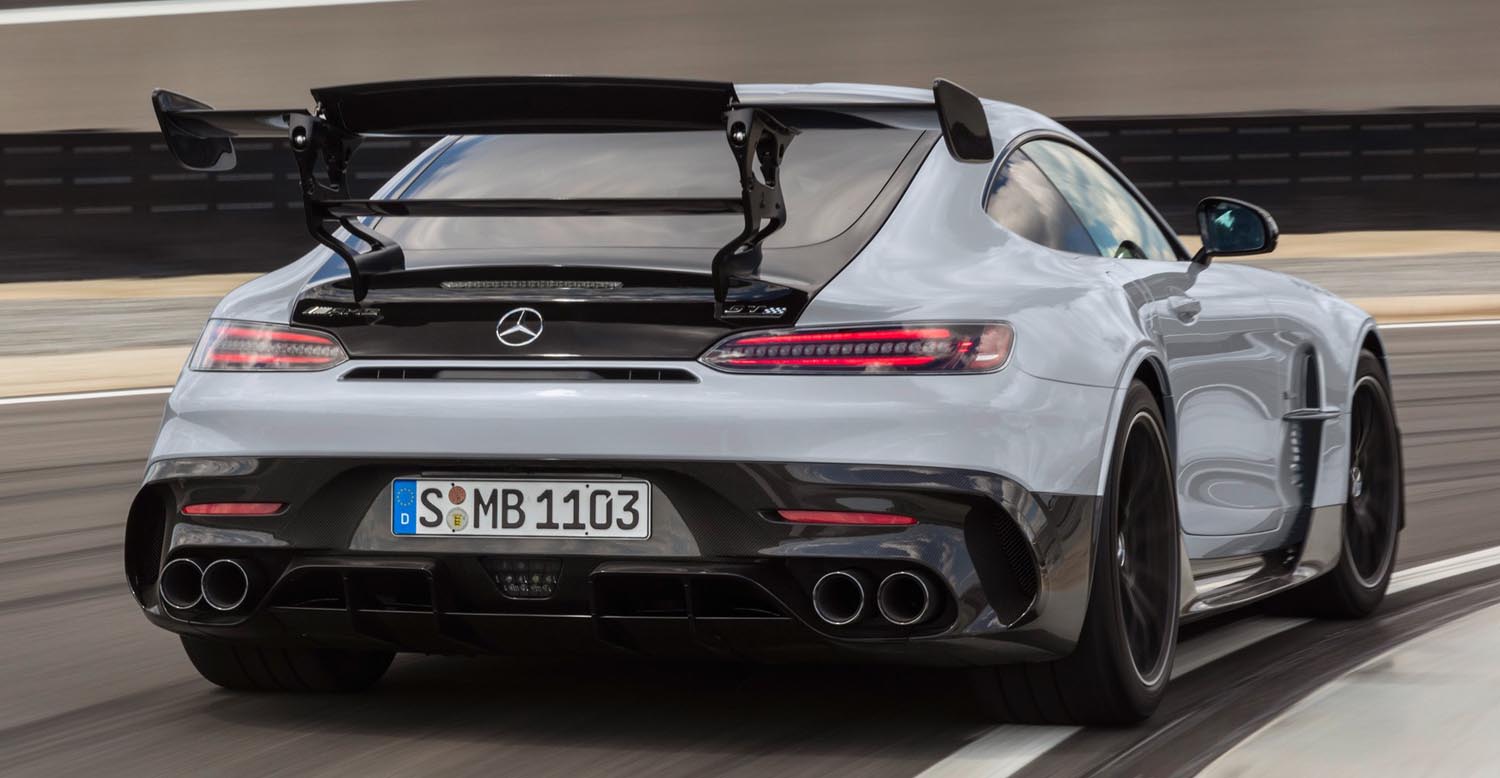
The ‘torque tube’ creates the connection between the engine and the transmission. It is made of carbon fibre and, at just 13.9 kilograms, is around 40 percent lighter than its already weight-optimised aluminium counterpart in the AMG GT. As a structural component of the transaxle drivetrain, it creates an extremely flexurally and torsionally stiff connection between the engine and the transmission. It permits a very direct connection of the drivetrain that is favourable to driving dynamics and also plays a role in the vehicle’s balanced weight distribution. The drive shaft which rotates inside is also made from light carbon fibre.
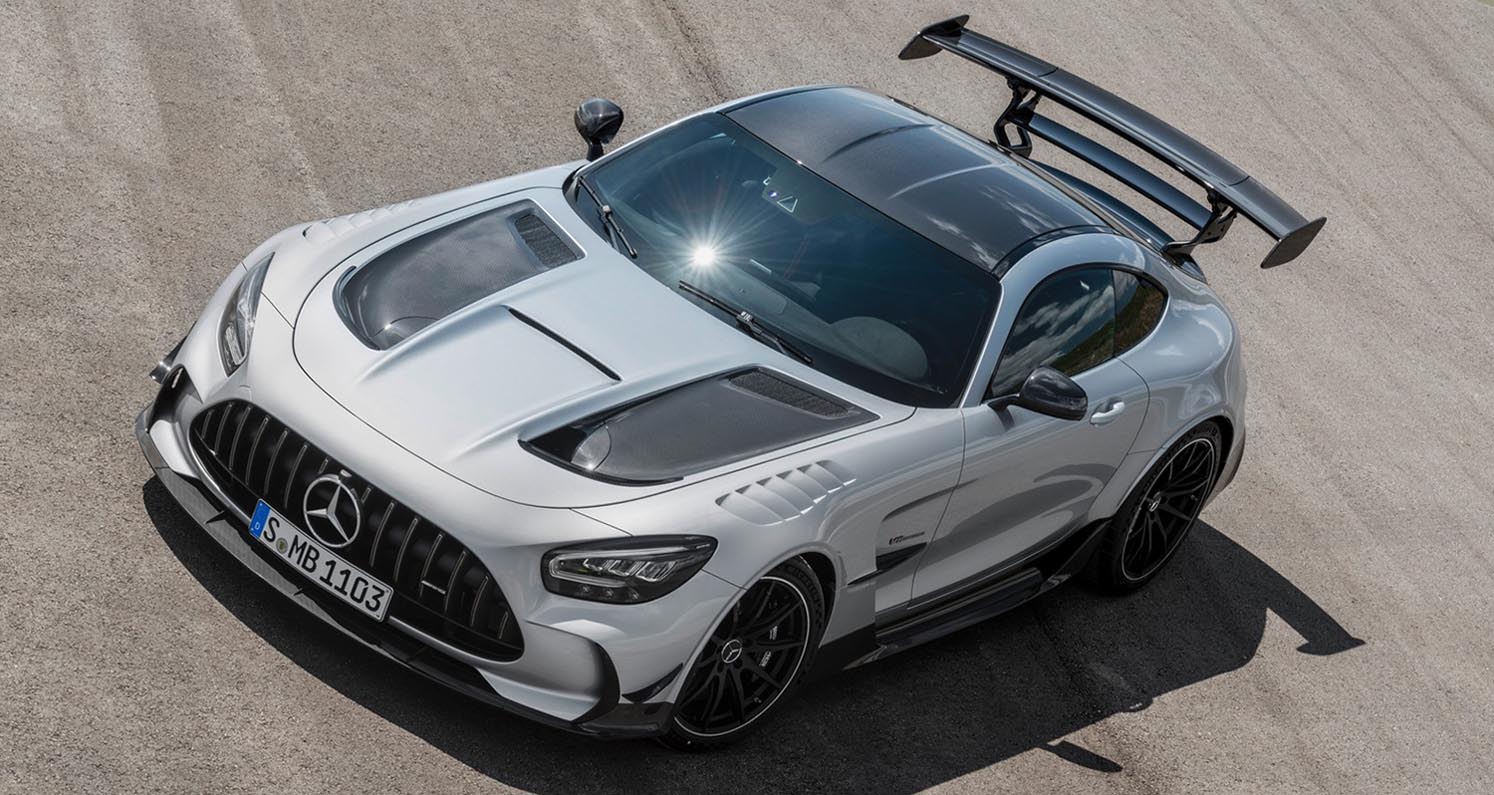
Sophisticated aerodynamics for incredibly high driving dynamics
The sophisticated aerodynamics not only make a significant contribution to high driving dynamics and stability on fast circuits. As with the AMG GT R and AMG GT R PRO, aerodynamics experts and designers have worked in close collaboration, as ‘form follows function’ applies more than ever in the case of the Black Series.
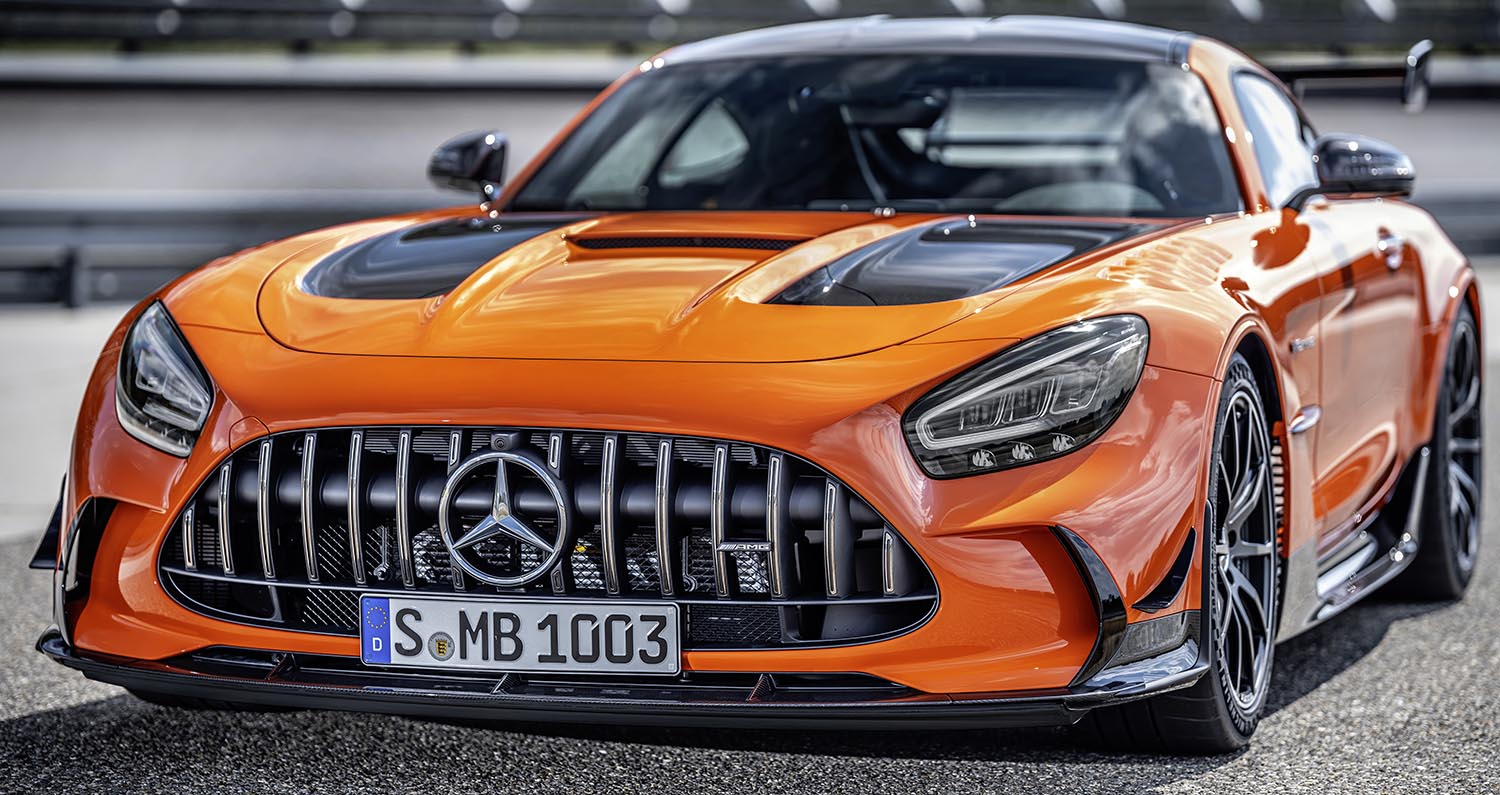
The similarity to the AMG GT3 and AMG GT4 racing cars is visually and technically stronger than before. It starts already with the new, significantly larger radiator air inlet, which stems directly from the AMG GT3 racing car. The radiator trim has vertical struts in dark chrome, because now that the wheel arch coolers are also fed with air directly via the central inlet, there is no need for the two additional outer air inlets in the front apron. Sickle-shaped flics optimise the flow of air here, which not only increases downforce at the front axle, but also improves brake cooling. The ‘air curtains’ control and direct the flow towards the wheels. Together with the flics in front of the wheels, this serves to reduce the drag coefficient and increase downforce. The new design language therefore combines maximum cool air efficiency with lower air resistance and an increased level of downforce at the front.
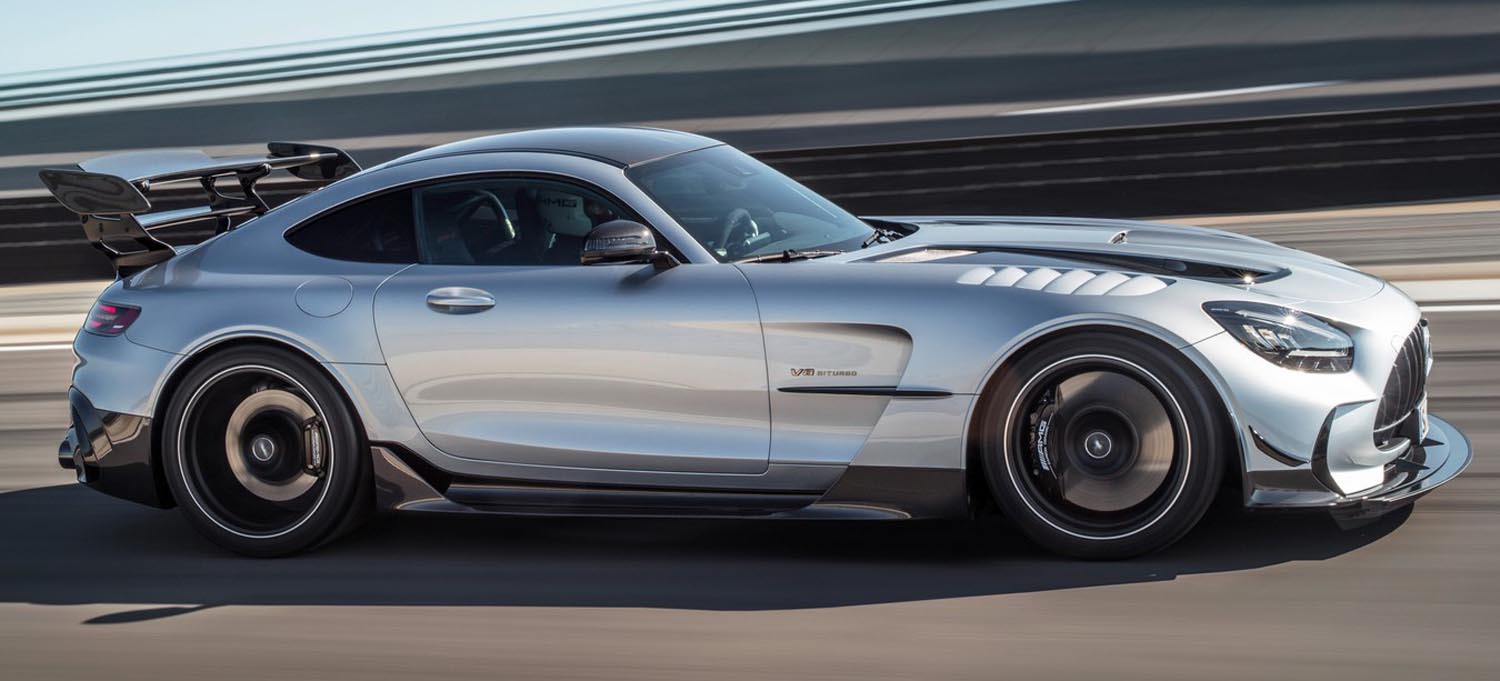
The carbon-fibre front splitter has two manually adjustable settings (Street and Race – Race exclusively for use on racetracks) and can therefore be adapted to meet various track requirements. When extended forward (Race position), a front diffuser in the shape of a reversed wing profile is then created under the front section. Depending on the driving speed, this element is lowered even further by the rising negative pressure, which significantly accelerates the air flow on the underbody, creating a ‘Venturi effect’, which also draws the car closer to the road and increases downforce on the front axle. The driver can feel the benefits in the steering: The Black Series can be steered even more precisely when cornering at high speed and exhibits even better directional stability. Especially during fast cornering and under high lateral acceleration, the vehicle delivers an agile response with clear steering wheel feedback – while remaining easily controllable at all times. If the front diffuser is in the Race position, the downforce at the rear axle can also be increased further by the new rear aerofoil concept.

Bonnet with two large exhaust air openings improves aero-performance
Another direct derivative from motorsport is the new carbon-fibre bonnet, with two large exhaust air outlets made from black finished carbon surfaces. The large outlets guide the warm air, which is fed from the diagonally positioned cooling pack, out of the engine compartment. This technology is also directly derived from motorsport and increases the overall downforce. At the same time, the air resistance is reduced, and the air mass flow for cooling the engine is optimised. The air is also specifically guided around the A-pillars and side windows to the rear, where it increases the efficiency of the new rear aerofoil concept. The seamlessly integrated louvres (air slots), with five fins in the body colour and exhaust air openings behind the wheels in the front carbon-fibre wings, help to increase downforce at the front axle by means of effective wheel arch ventilation. The air flowing around the vehicle is also optimised by the new, significantly larger and wider side sill panels with black carbon-fibre elements, which merge into vertical blades at the front and rear. Additional cooling air ducts are integrated into the side sill panels for brake cooling at the rear axle.
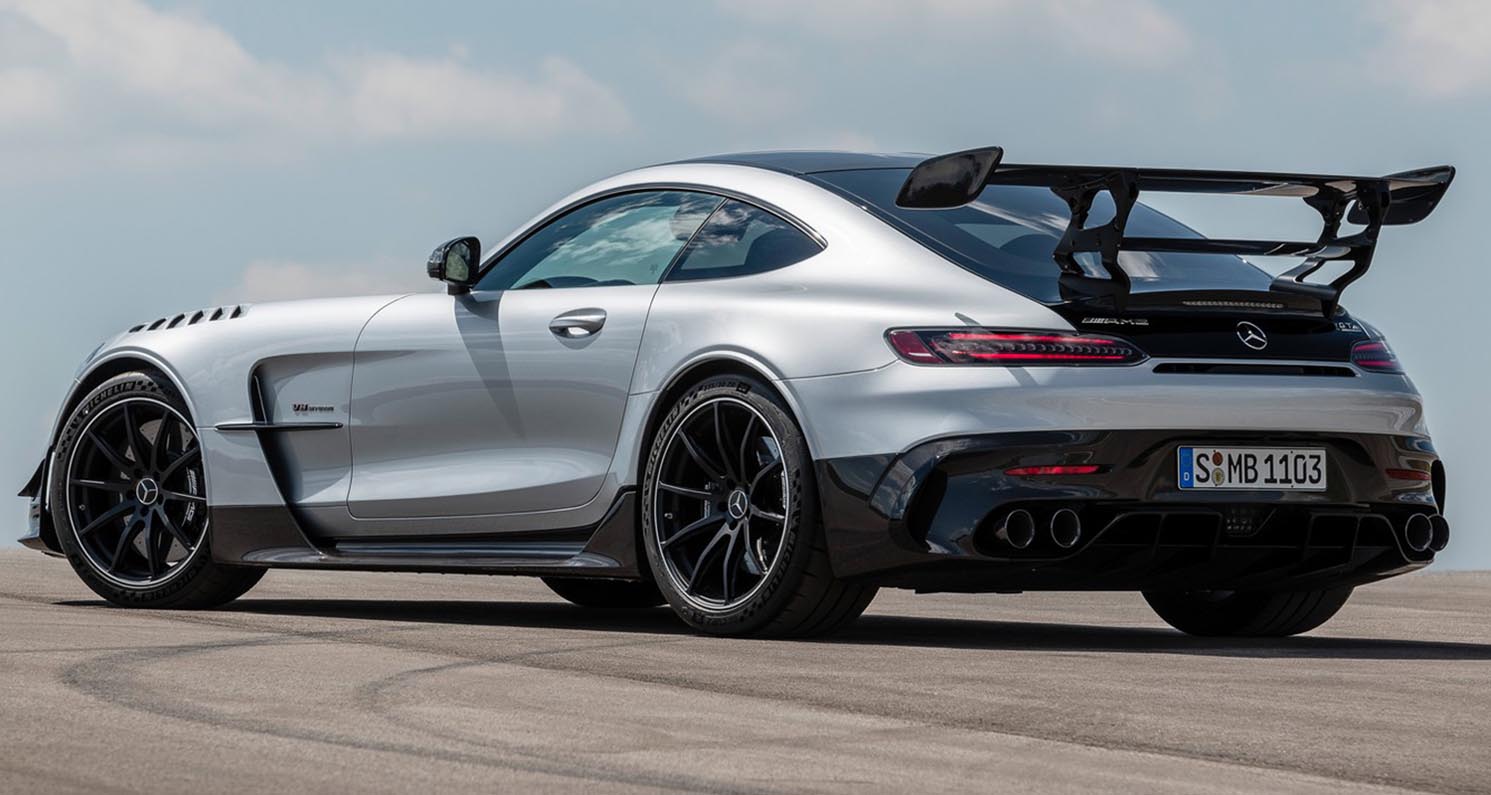
Two-stage rear aerofoil concept
The rear view is characterised by the new rear apron with a large diffuser, two rounded twin tailpipe trims on the outside left and right, side wheel arch ventilation, and the innovative rear aerofoil concept. Both aerofoil blades are made from carbon fibre, can be mechanically adjusted and therefore adapted to various track conditions. The second, lower positioned blade was made particularly small and narrow because this is ideal for the air arriving from the front of the car. The light yet robust carbon-fibre aerofoil supports, painted matt black and specially designed based on extensive simulations also increase aerodynamic efficiency. They are bolted to the carbon-fibre tailgate, which is also black.
Another fascinating detail: the movable flap in the upper blade. This active aerodynamic element is electronically adjusted by 20 degrees, to suit the driving situation and selected AMG DYNAMICS mode, and improves longitudinal and transverse dynamics. In a flat position, it reduces the air resistance, to help reach the top speed more quickly. In the inclined position, the flap improves braking performance and cornering stability thanks to increased downforce at the rear axle.
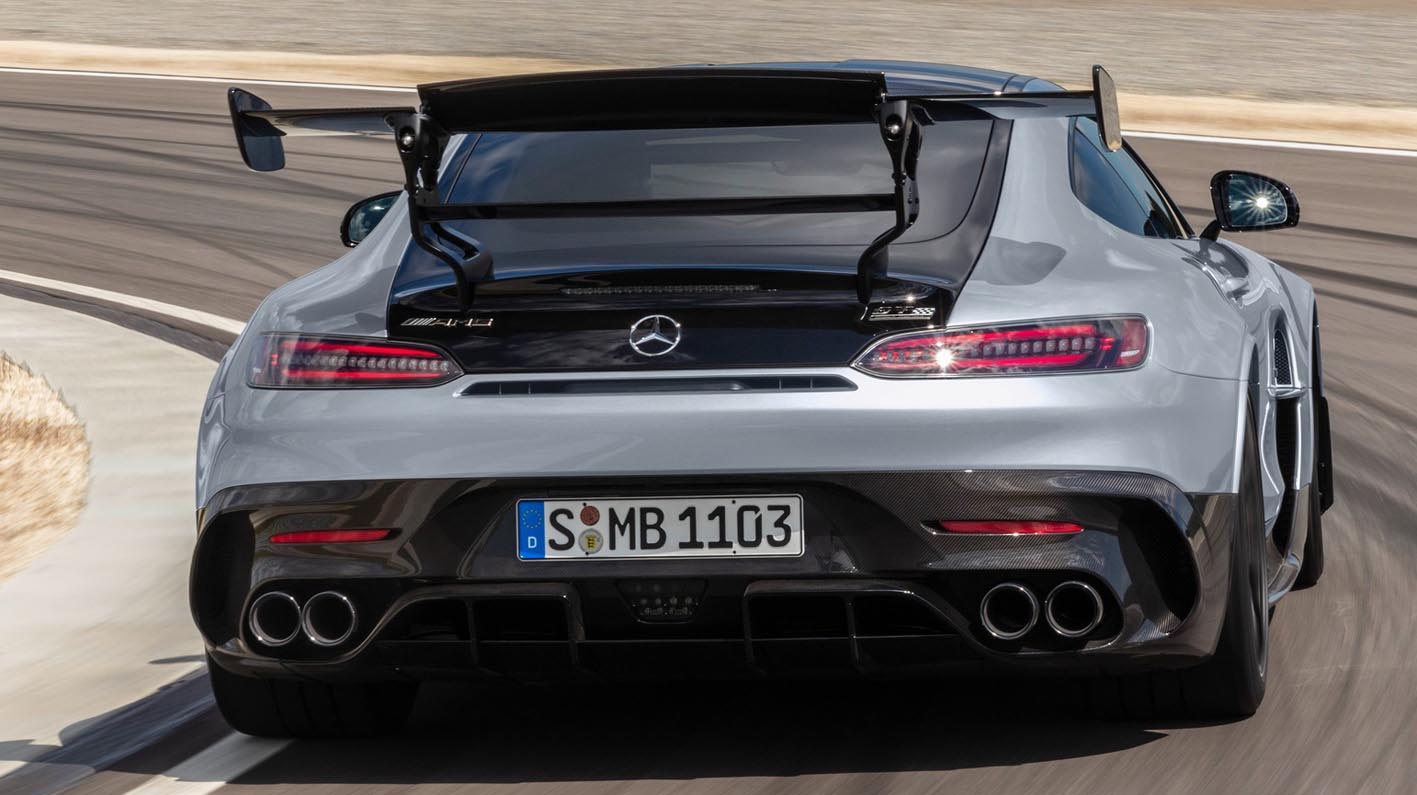
Four different activation strategies can be run, depending on whether AMG DYNAMICS Basic, Advanced, Pro or Master has been selected. Some of these strategies also involve driving dynamics recognition, for example, Master: The flap is permanently inclined and extended up to 250 km/h. When the speed exceeds 250 km/h, it retracts in order to reduce the air resistance and thus reach the top speed more quickly. However, if the driver brakes suddenly or steers into a corner, the flap immediately returns to its extended position in order to optimise braking and cornering thanks to increased downforce and air resistance. The flap can also be retracted or extended by the driver using a separate button in the centre console.
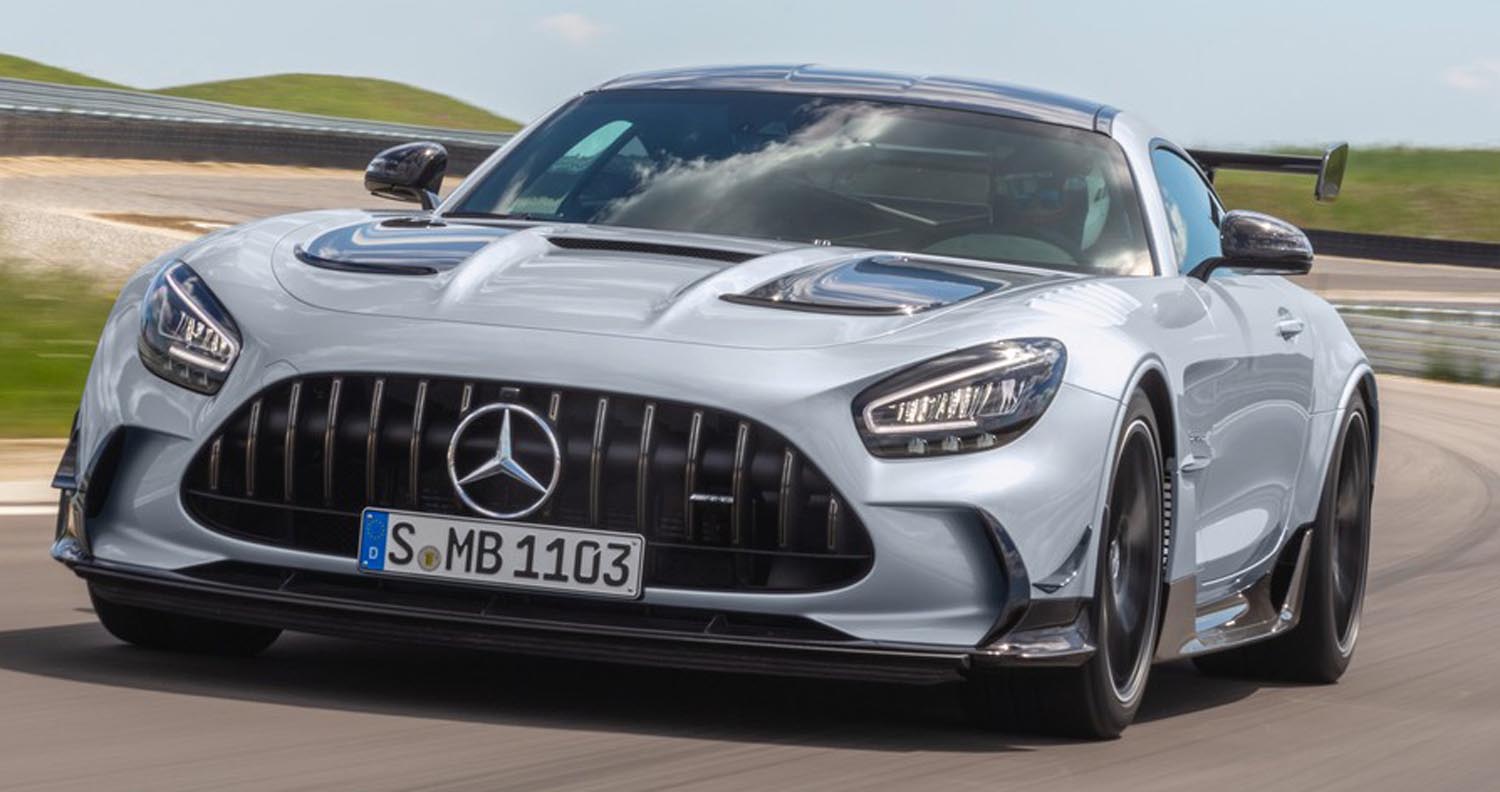
Almost full panelling on the underbody
The detailed aerodynamic work also includes the now almost fully panelled underbody, which must not only meet aerodynamic requirements, but thermal ones as well (heat dissipation). The flat underbody is equipped with specially designed longitudinal fins. These air channellers have been meticulously optimised to ensure optimal air flow to the rear diffuser. The entire package accelerates air flow, significantly increasing downforce. All measures are coordinated and interact with the new rear aerofoil concept. The result of all these measures is a downforce level of well over 400 kilograms at 250 km/h.
Lightweight and robust carbon fibre, as far as the eye can see
The lightweight carbon-fibre roof, with a sunken centre, as well as the carbon-fibre tailgate with small spoiler lip and larger rear windscreen made from lightweight thin glass, are all key components of the ‘intelligent material mix’ and ‘lightweight construction’. Moving to the front of the car, the glass used to make the laminated glass windscreen is likewise thin and therefore light in weight. The coiled carbon-fibre transmission mount is another exclusive Black Series component. Additional carbon-fibre shear panels in the front section, underbody and rear stiffen the entire aluminium bodyshell structure, together with the lightweight integral carrier and the carbon tunnel cross, making the bodyshell even more stable. The elements form a connected network and increase the high driving precision of the Black Series in all driving manoeuvres. The carbon-fibre shear panel under the engine is connected to the integral carrier and stiffens the entire front section and steering system, making the steering noticeably more precise and stabilising the front axle. The integral carrier at the front axle is exclusively made for the Black Series using a lightweight aluminium construction.
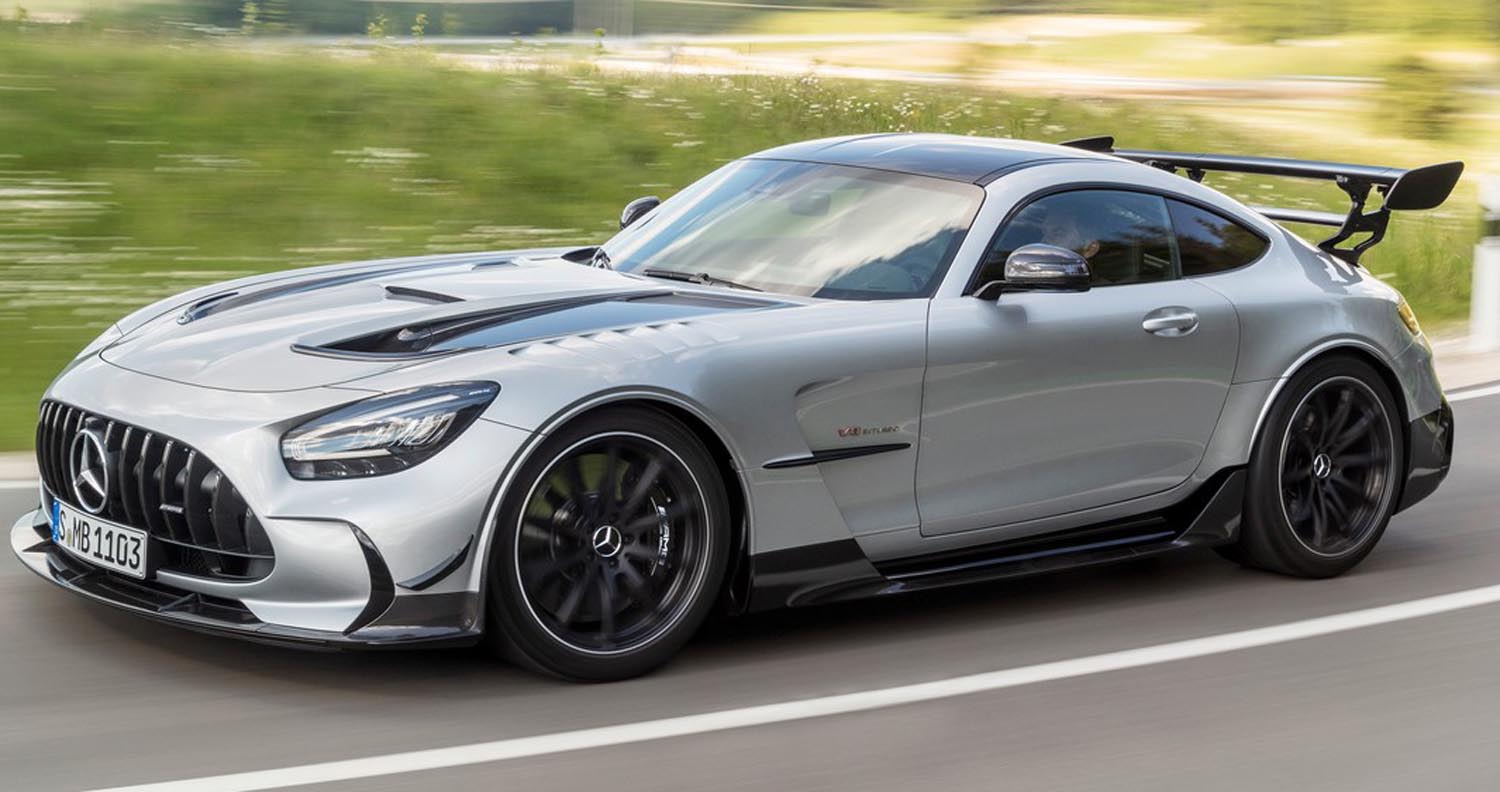
The standard ceramic high-performance compound brake system with black painted brake callipers and white lettering is also characterised by low weight and high performance. Special brake pads and discs together with modified brake cooling guarantee optimal and non-fading deceleration as well as high-precision brake-application options. The standard light-alloy forged wheels also contribute to weight reduction.
AMG coil-over suspension with adaptive adjustable damping
The double wishbone concept locates the wheel with high camber and toe-in stability. This enables high cornering speeds and gives the driver optimum road feel when cornering at the extreme limits. Wishbones, steering knuckles and hub carriers on the front and rear axle are made entirely from forged aluminium in order to reduce the unsprung masses. The spherical bearings on the upper and lower wishbones of the rear axle come straight from motorsport. Their design means they have no play, which means toe-in and camber do not change even under high loads. The AMG GT Black Series therefore allows for precise steering, gives clear steering feedback and thus delivers better cornering performance, too.
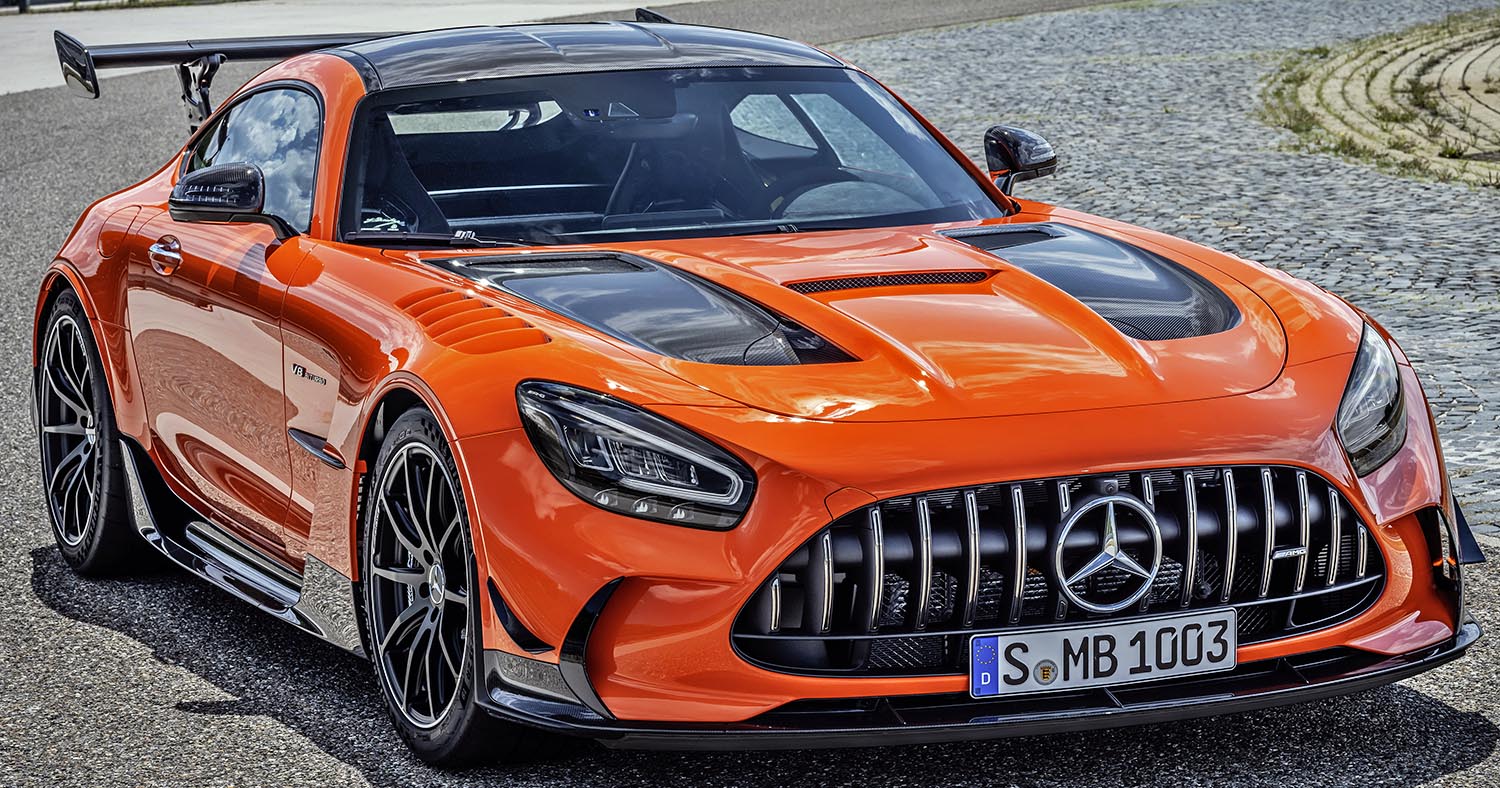
As with the AMG GT R, an AMG coil-over suspension with adjustable spring preload is used in the Black Series, with technology which is adapted to meet the specific requirements for extreme racetrack use with high damping forces. The technology familiar from motorsport is combined with the AMG RIDE CONTROL continuously variable, adaptive damping system. The system is electronically controlled and automatically adapts the damping on each wheel to the current handling situation, the speed and the road conditions. The damping characteristics are modulated rapidly and precisely by two separate valves for the rebound and compression forces in the dampers. These valves are new, are also based on motorsport technology, and react in an even more agile manner to fast suspension movements. A harder damping rate, for example when cornering and braking, effectively reduces rolling movements. The continuously variable adjustment of the damping to suit the current speed also ensures the best possible road contact and thus enhances safety, even at high speeds.
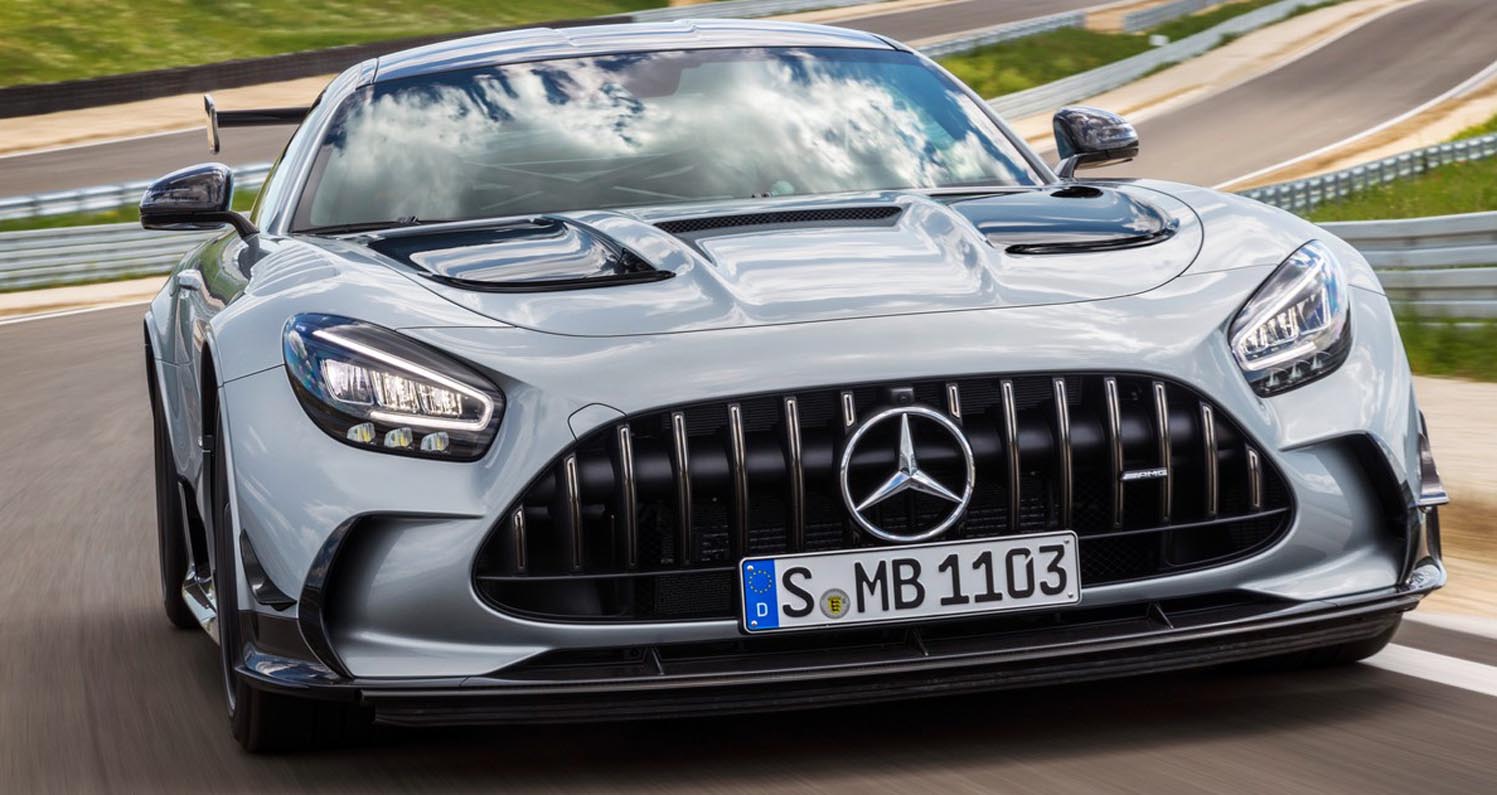
The driver can also adjust the adaptive damping characteristics at the touch of a button in the AMG DRIVE UNIT or by using the AMG DYNAMIC SELECT drive modes. Three modes are available: “Comfort”, “Sport” and “Sport Plus”. The modified logic means that there is an even better trade-off. “Comfort” and “Sport” are the right choice for public roads. In “Sport”, the damping is firmer, with a sportier body connection and less comfort – and can also be chosen for racetracks if more slippery track conditions prevail as a result of wet conditions. “Sport Plus” is ideal for use on racetracks, as it has a special feature: The system automatically recognises the quality of the track surface, i.e. whether the car is being driven on a flat Grand Prix course like Hockenheim or a bumpy track like the Nürburgring North Loop. It then automatically adapts the level of electronic damping in “Sport Plus”. To develop this logic, the Black Series was tailored to a wide range of different track types and the adaptation perfected.
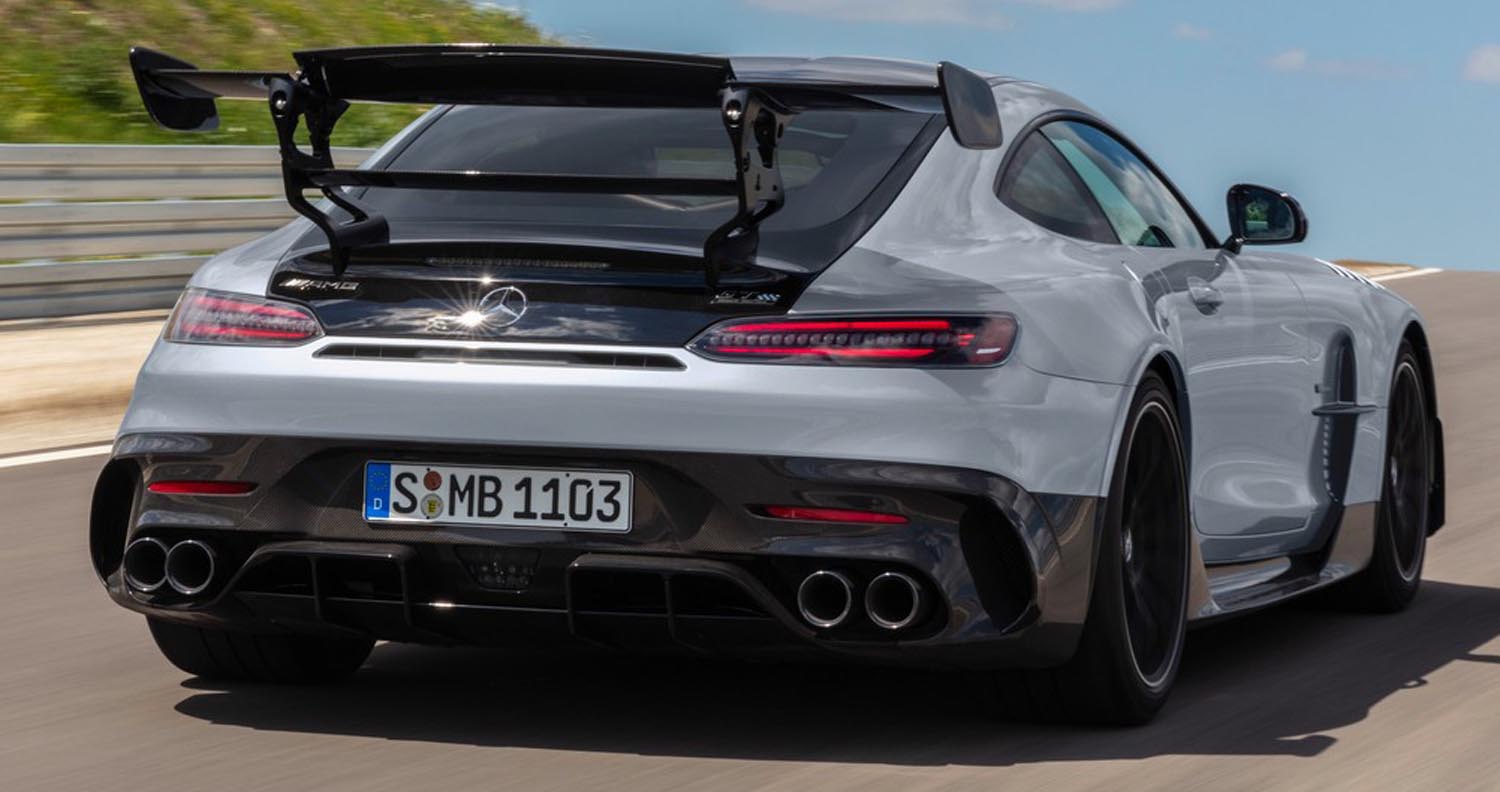
Carbon fibre also reduces the suspension weight
The front axle is fitted with a dual adjustable torsion bar made of lightweight carbon fibre. The car has this short (i.e. firm) connection as its default setting. Its counterpart at the rear axle is made of steel, is triple adjustable, and saves weight thanks to its hollow tube design. From the default “central” position, it can be adjusted to one level harder (short connection) or softer (long connection). The carbon-fibre shear panel in the rear underbody supports the high driving precision. This lightweight and rigid element stiffens the rear-end structure and as a result makes the bodyshell even more stable. The electronically controlled dynamic engine and transmission mounts were also retuned to further increase the agility and deliver high-precision response and clear feedback.
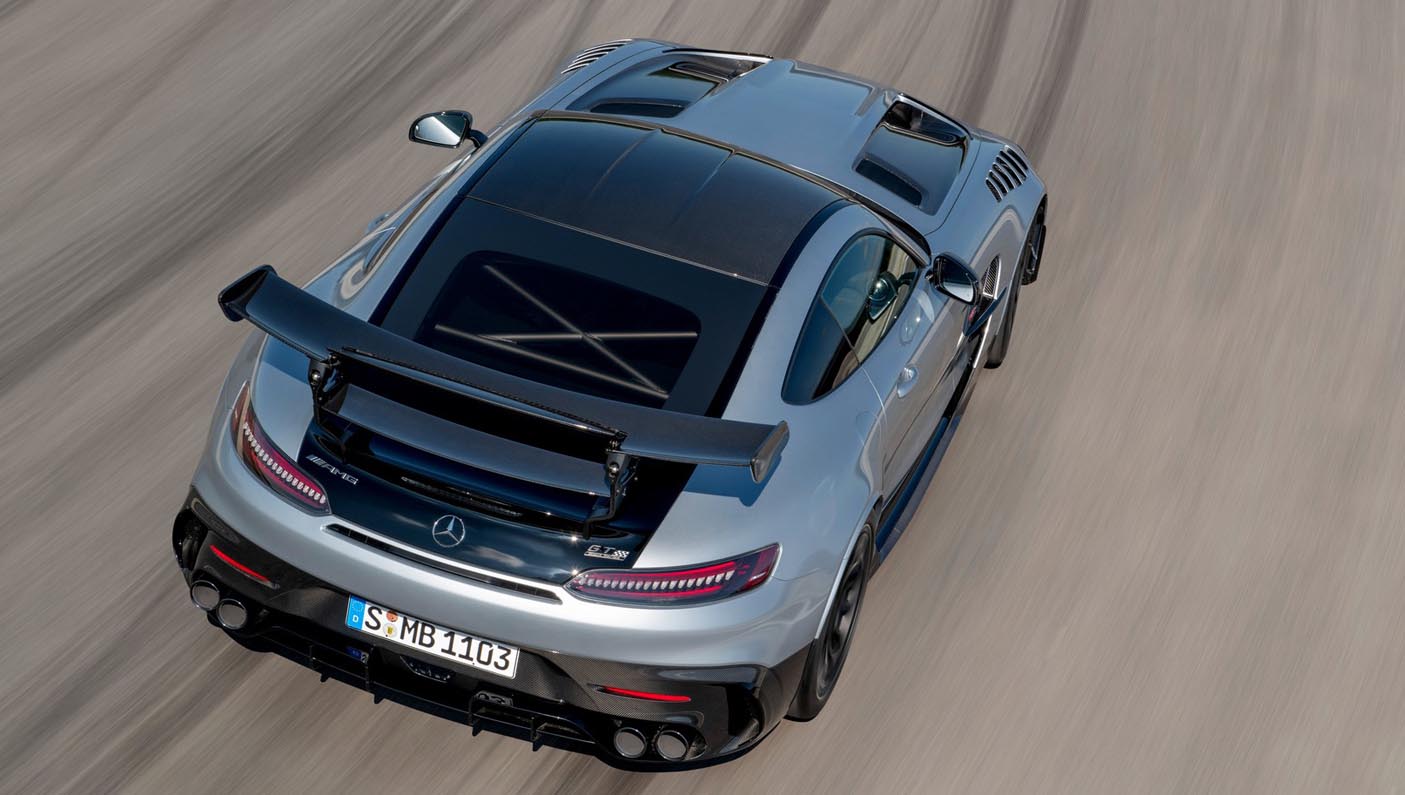
Other suspension measures include the wide track at the front and rear, and the manually adjustable camber at the front and rear axle. This means that exceptionally high camber values can be set, which are only used for the purpose of increasing performance in motorsport on cordoned-off racetracks.
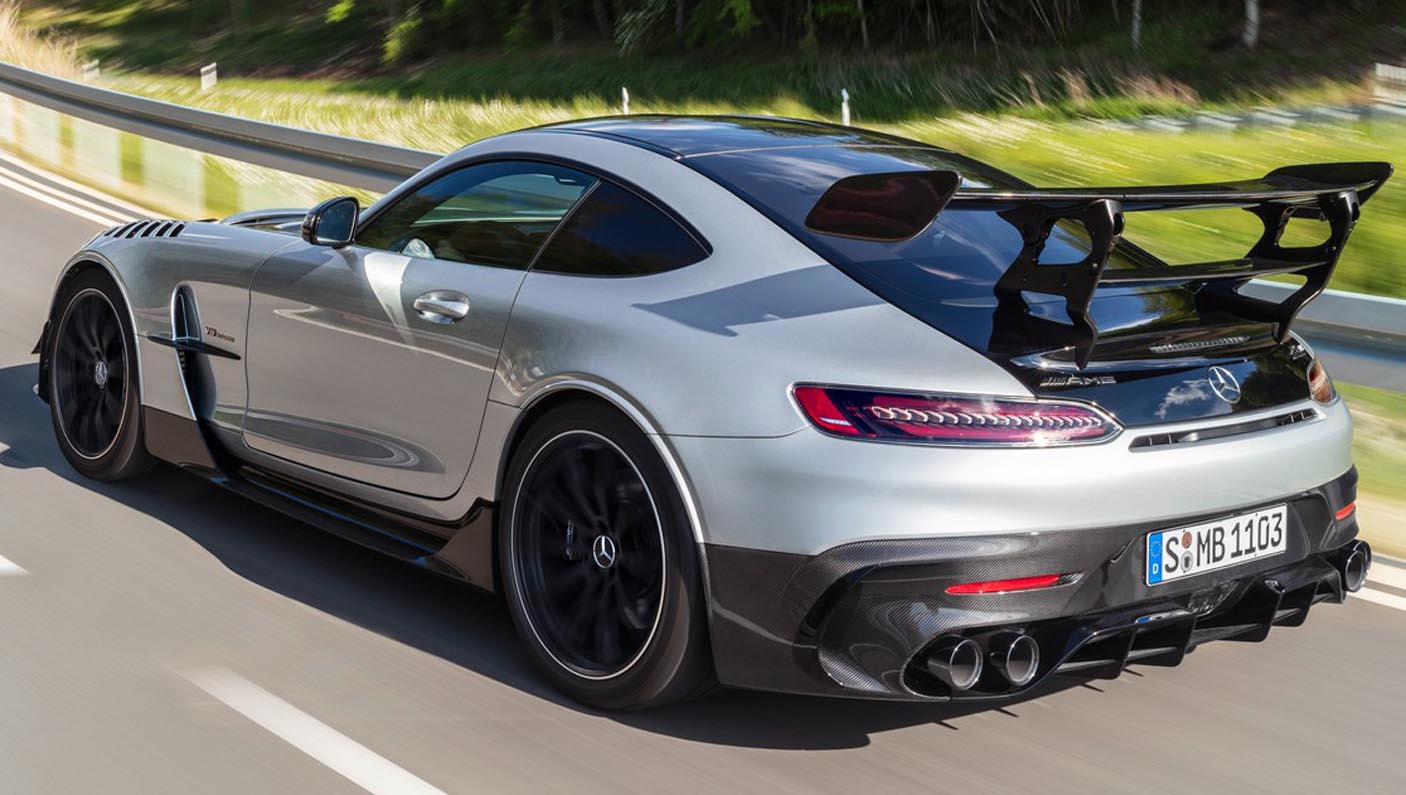
A Pilot Sport Cup 2 R MO tyre, specially customised for the Black Series, has been developed in collaboration with MICHELIN. As is only the custom in motorsport, this sports tyre is exclusively available for Mercedes-AMG in two compounds: The standard tyre fitted ex factory is the soft-compound MICHELIN Pilot Sport Cup 2 R MO1A, whose side flank enhances the silhouette of the AMG GT Black Series. A ‘hard compound’ is also available as a retrofitting option for racetrack use at higher temperatures. As well as the MICHELIN Pilot Sport Cup 2 R MO2 designation, it can be identified by the tyre compound available from the AMG Performance Centre, with the hallmark motorsport sticker from the French tyre manufacturer. The sizes are 10 J x 19 wheels with 285/35 ZR 19 tyres (front) and 12 J x 20 wheel with 335/30 ZR 20 tyres (rear).
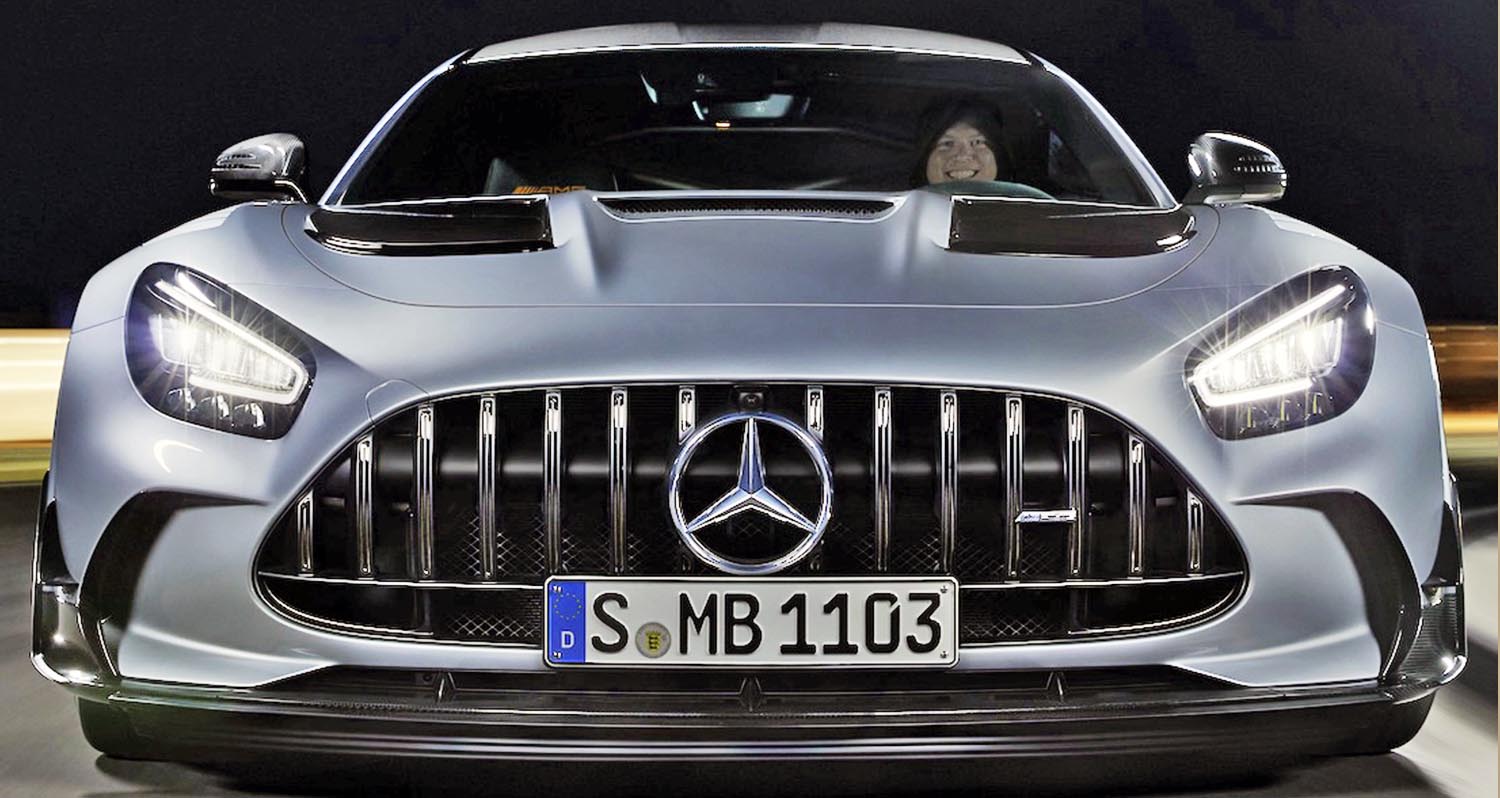
Grip to the power of nine: AMG TRACTION CONTROL
For use on cordoned-off racetracks in ESP OFF mode, the AMG TRACTION CONTROL enables the driver to get individual support for controlling the immense power of the Black Series – and without any ESP brake intervention whatsoever. The level of support can be fine-tuned, providing the ideal level of assistance for each driver and each track situation. The AMG TRACTION CONTROL has been extensively tailored to meet the requirements of the new Black Series and allows preselection of one of nine slip settings on the live rear axle. Control is exclusively via corresponding maps in the engine electronics and without any intervention in the ESP system, as is also the case with the GT3 racing car.
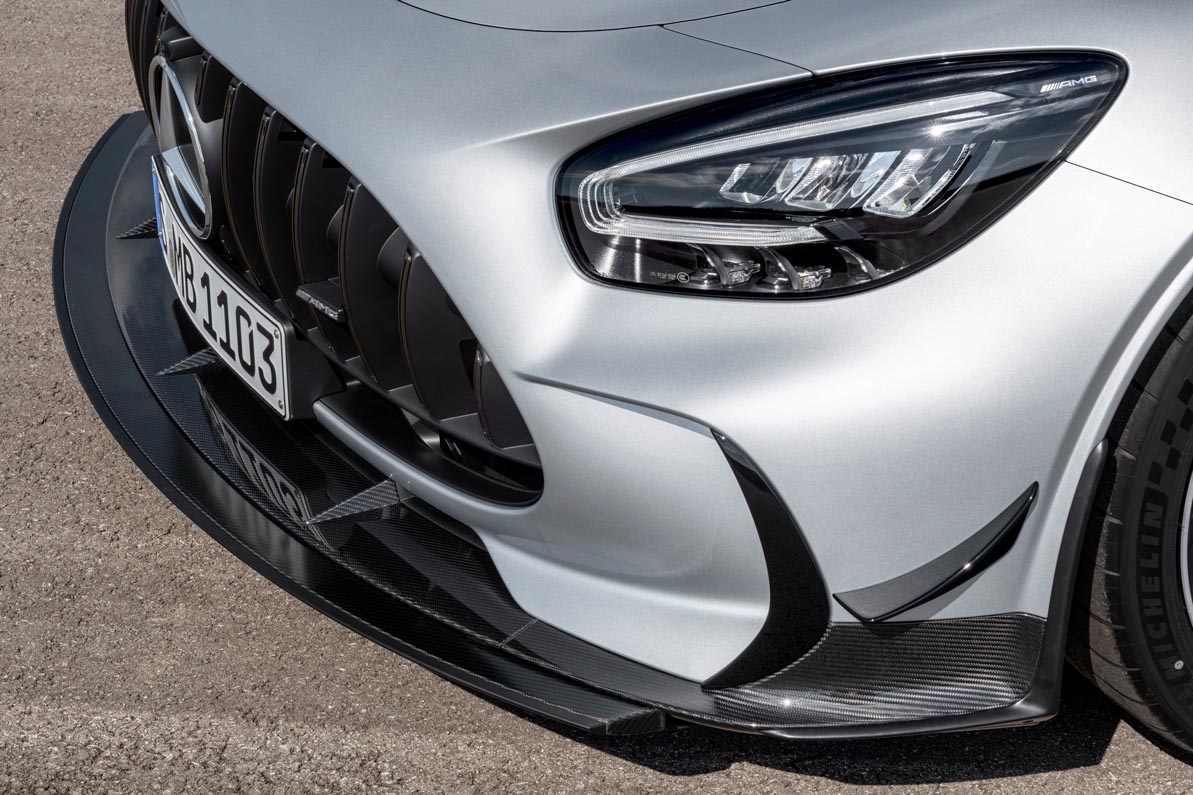
It is operated via a separate adjuster in the central console. It can also be operated while wearing racing gloves in its central position in the dashboard. Depending on the setting, the system permits more or less slip on the rear wheels – very helpful in varying road conditions. Level 1 is programmed for driving in the wet with high safety reserves. Level 9 allows maximum slip on the rear axle. Each setting is displayed on the adjuster itself and in the instrument cluster’s central display.

The AMG development has a major advantage over conventional systems in that it anticipates situations with the help of a friction coefficient evaluator and other data processed by a control unit within a fraction of a second. The maximum permissible drive slip on the rear wheels is calculated depending on the selected AMG TRACTION CONTROL level. When the wheels reach this level of slip during acceleration, the traction control modulates the engine output so that this level is not exceeded and the vehicle continues accelerating with this specified slip. The system algorithms have been systematically developed as a double control variable model and not only control the engine’s drive torque, but also the locking level of the electronic differential lock.

Orange as an exclusive contrasting colour
The interior design emphasises the pole position of the AMG GT Black Series: Exclusive nappa leather is combined with sporty DINAMICA microfibre in black with orange contrasting topstitching. The instrument panel and the newly designed lightweight door panels, which are now equipped with loop pull handles instead of conventional handles, are trimmed in black DINAMICA microfibre. Further orange contrasting topstitching, matt black carbon-fibre trim and the Interior Night Package add further striking highlights. The AMG carbon-fibre bucket seats (not available in the USA, Canada and China) combine low weight with optimum lateral support. In the USA, Canada and China, the Black Series is equipped with AMG Performance seats as standard. The interior is also optionally available with grey contrasting topstitching.
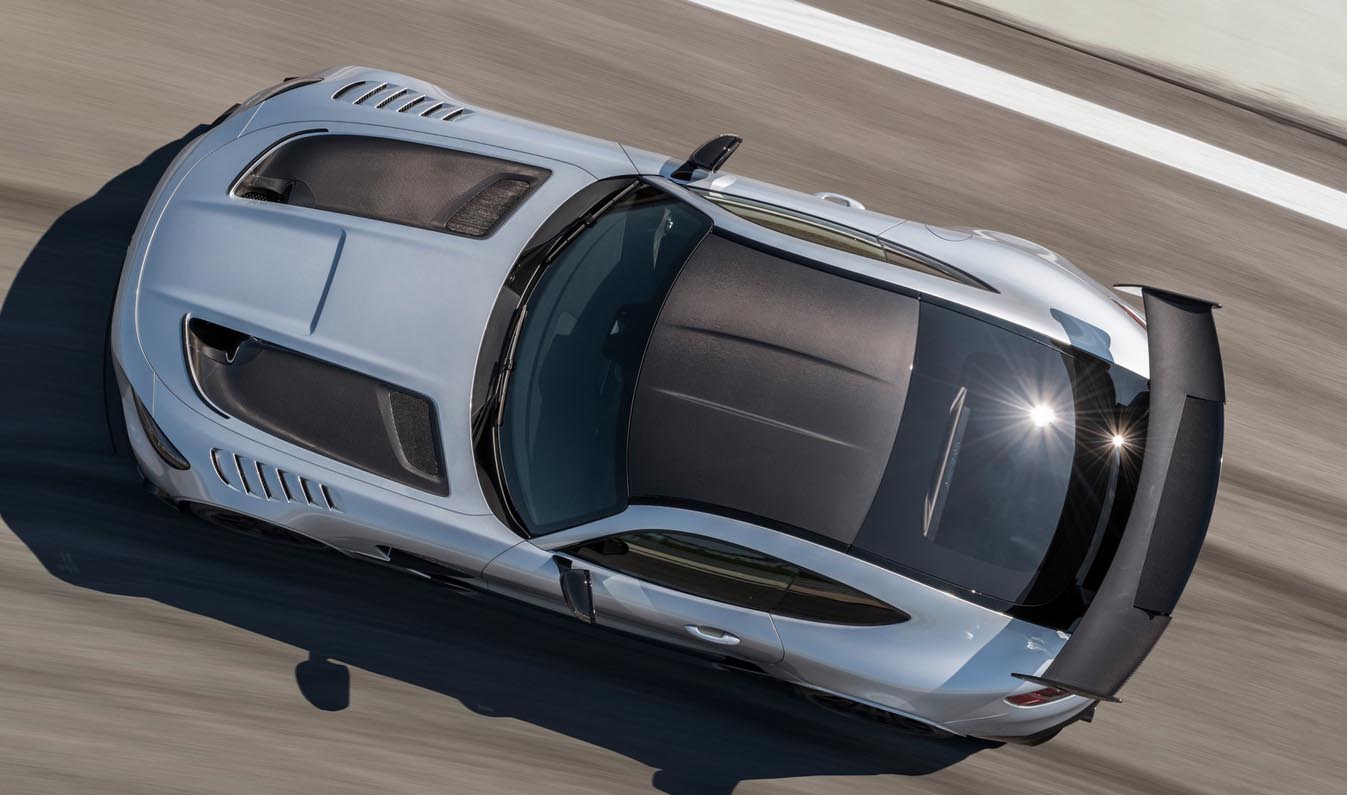
Displays with AMG-specific graphics
The AMG GT Black Series features the fully digital instrument displays from the AMG GT family with an instrument cluster measuring 12.3 inches in front of the driver, and a 10.25-inch multimedia monitor on the centre console. The instrument cluster offers different designs with the three AMG-specific display styles: “Classic”, “Sporty” or “Supersport”. The “Supersport” view with a central rev counter features extensive additional information, such as a prompt to shift up in manual transmission mode, the ‘shift light’. The visualisations on the multimedia display enable further vehicle functions to be experienced, e.g. with animated presentations of the driving assistance, vehicle and communication systems.
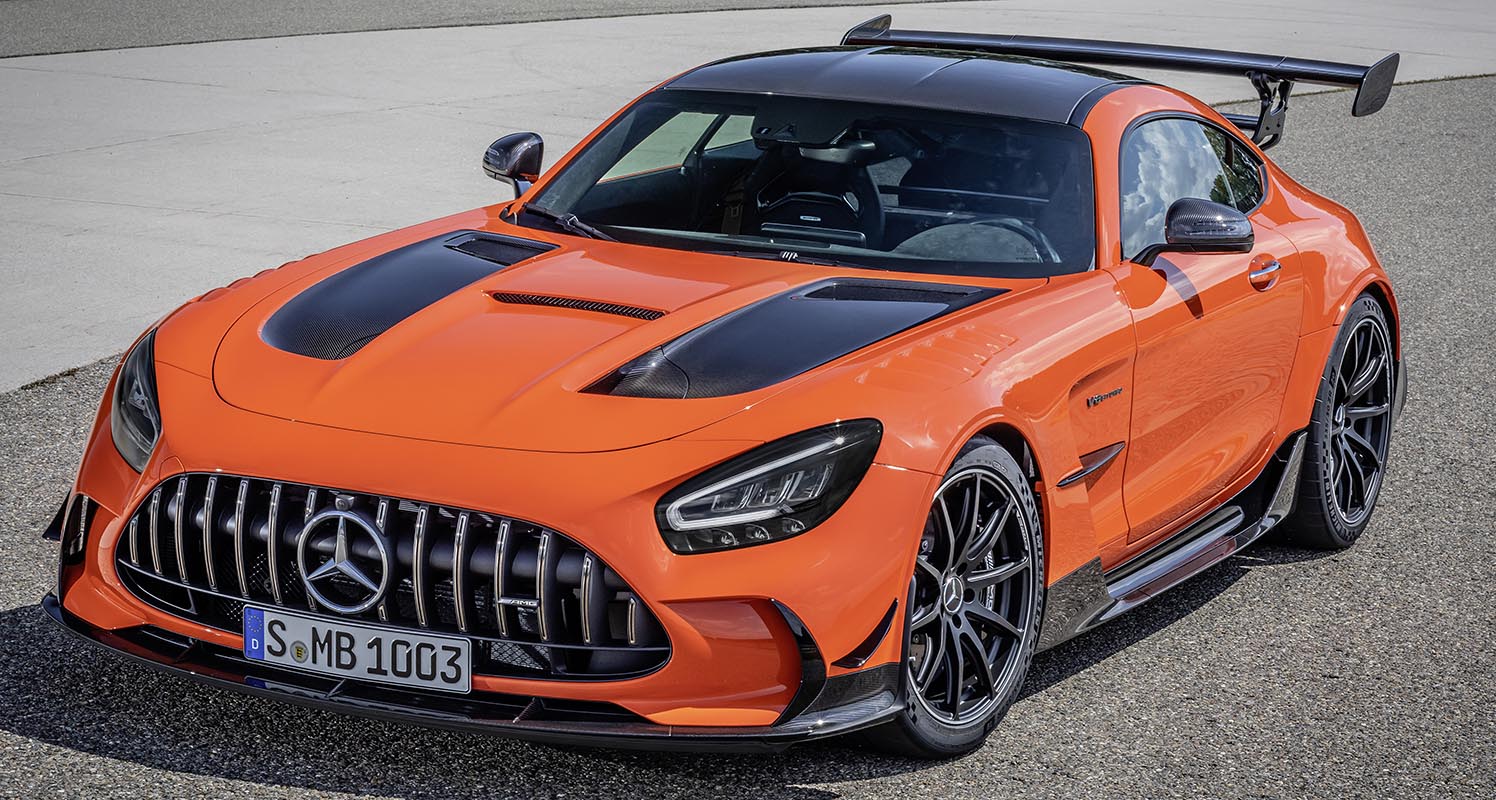
At your fingertips: display buttons in the centre console
The innovative, coloured display buttons in the V-shaped central console integrate the display and control of transmission logic, suspension, ESP, exhaust system, rear aerofoil flap and start/stop function. The TFT display buttons use intuitively comprehensible symbols to show their functions and are easy to operate with just a small tap of the finger. As they still have a mechanical pressure point, they can also be operated whilst wearing racing gloves. The display buttons are supplemented by the two rocker switches for the drive programs and volume control of the audio system.
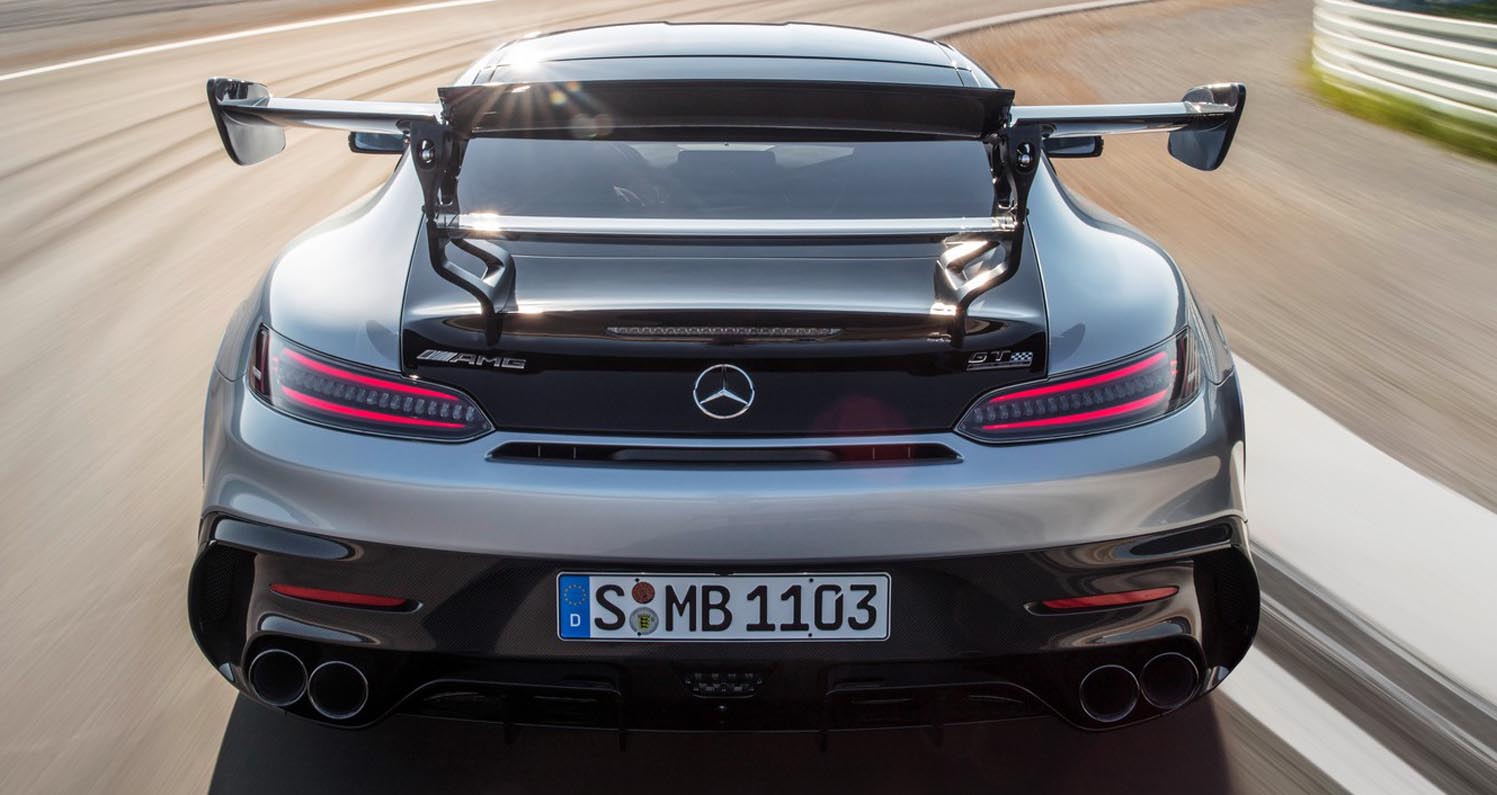
Control in an instant: the AMG Performance steering wheel
The AMG Performance steering wheel is also adopted from the AMG GT family. It is characterised by its sporty design, a flattened bottom section with a heavily contoured rim and intuitive operation. The steering wheel rim is fully trimmed in DINAMICA microfibre, while the steering wheel badge exclusively features the Black Series lettering, along with the AMG logo. The aluminium steering wheel shift paddles for manual gear changes allow even sportier driving. The integrated Touch Control buttons can be used to control the instrument cluster and the multimedia display by means of horizontal and vertical finger swipes.
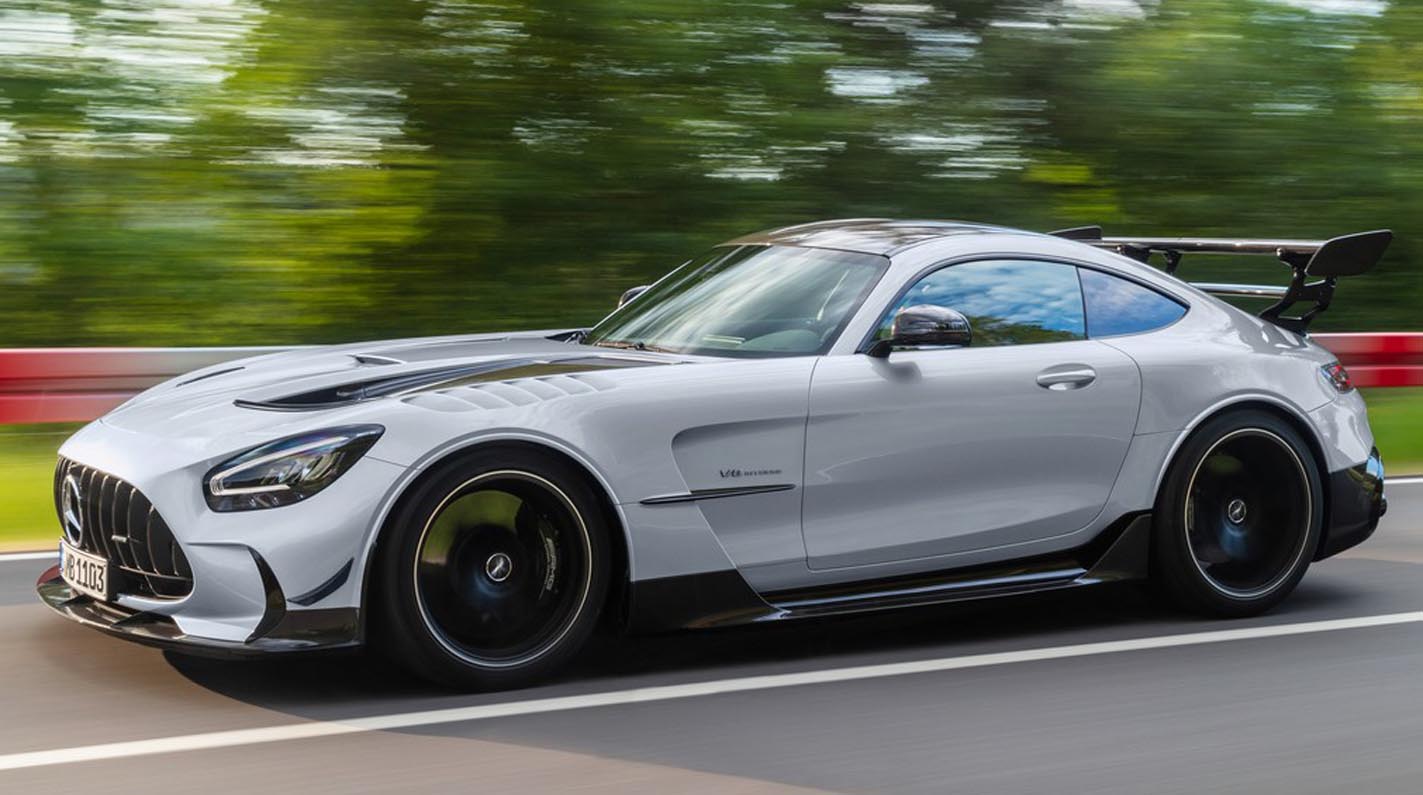
As standard, the AMG steering wheel buttons also have a round controller with an integrated display, as well as two vertically positioned coloured display buttons with switches. The AMG drive programs can be activated using the right controller. The selected setting is shown on the colour LCD display directly integrated in the controller.
The two freely configurable display buttons and the additional switches on the left side enable further AMG functions to be controlled directly on the steering wheel. This means that the driver can concentrate fully on high-speed driving without having to take their hands off the wheel. Each required function can be depicted by a display icon, which the driver can set using the respective switch. So the two individually preferred AMG functions can be defined exactly and the settings changed with just a tap of the finger.
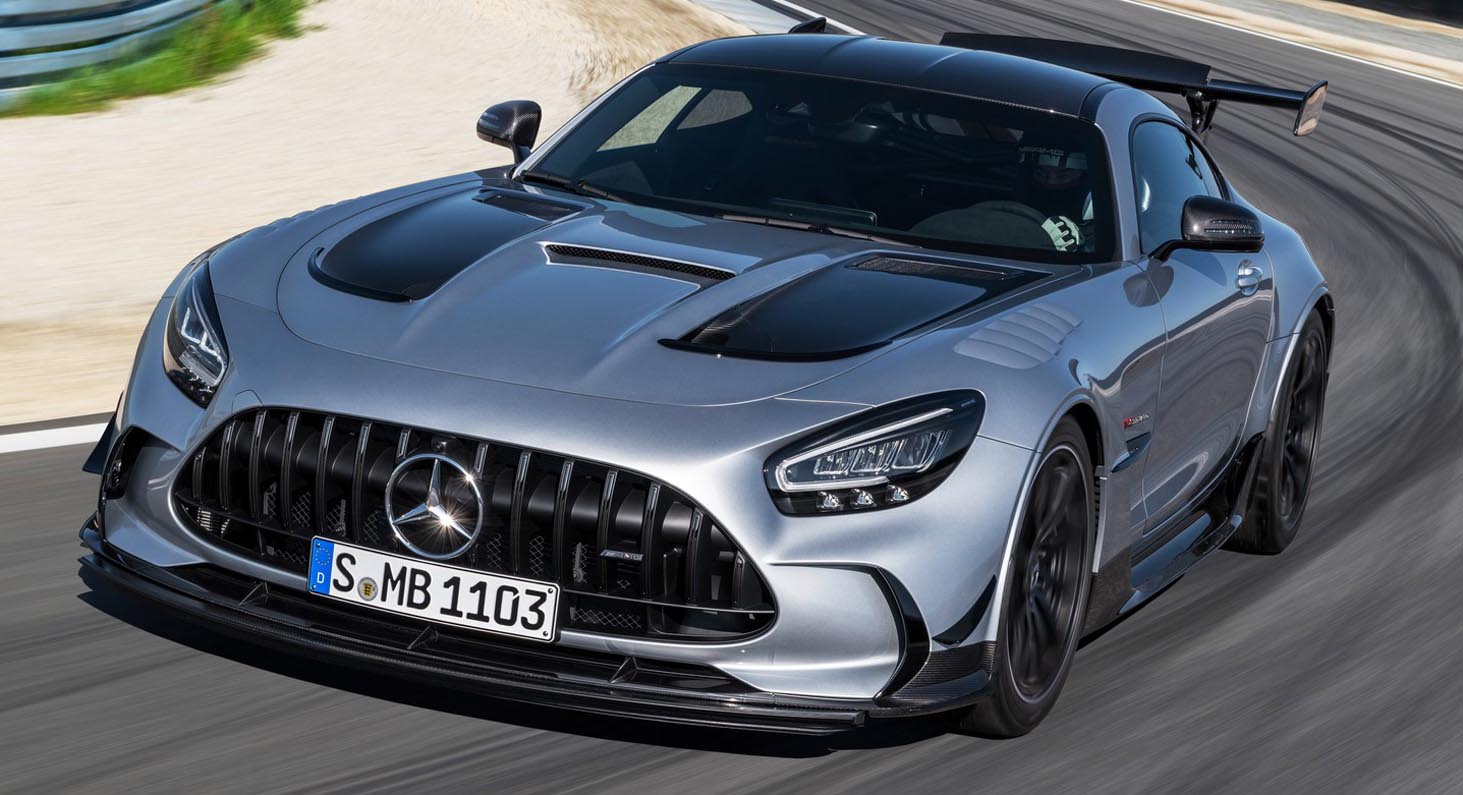
The AMG Interior Night Package also comes as standard. In this package, the shift paddles, steering wheel spokes and seat insert in the optional AMG Performance seats are finished in high-gloss black, while the door sill panels are in black brushed stainless steel, further emphasising the car’s sportiness.
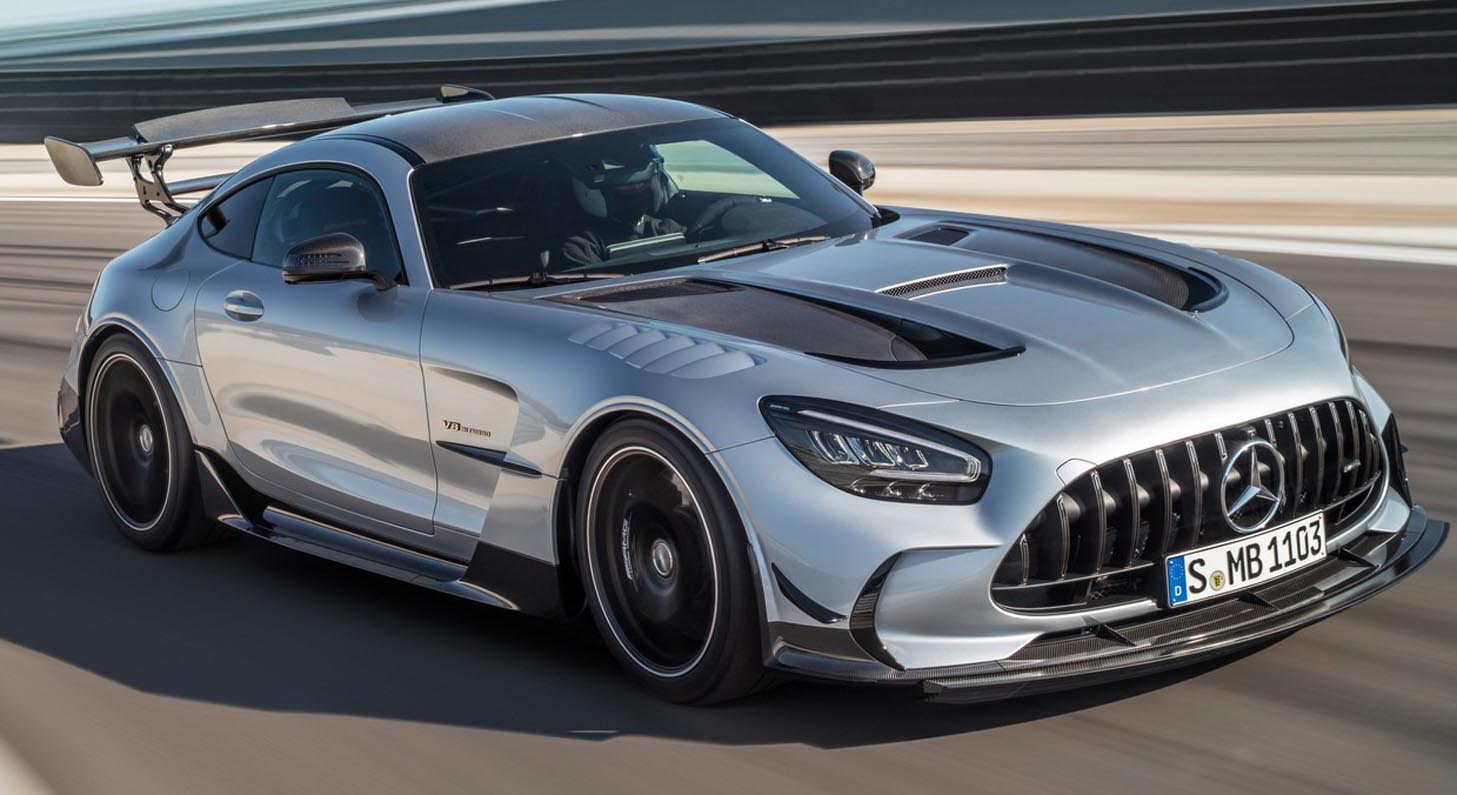
Even closer to motorsport with optional AMG Track Package
The AMG Track Package is available as an option in several markets (only in combination with the AMG carbon-fibre bucket seats – not for the USA, Canada and China). It comprises a roll-over protection system, 4-point seatbelts for driver and front passenger, and a 2 kg fire extinguisher (both items exclusively designed for racetrack use). The lightweight bolted titanium-tube cage of the roll-over protection system consists of a main roll bar, a brace for mounting the seat belts, two rear braces and a diagonal X-brace at the rear. The system further increases the already excellent vehicle rigidity and thus also has a positive influence on the vehicle’s driving dynamics. It also increases passive safety.

Mercedes-AMG GT Black Series fact sheet
- Drive and driving performances
- 0 litre V8 biturbo motor with dry sump lubrication, identification code M178 LS2
- 537 kW/730 hp max. output @ 6700-6900 rpm
- 800 Nm max. torque @ 2000-6000 rpm
- Vmax: 325 km/h
- 0-100 km/h: 3.2 s
- 0-200 km/h: under 9.0 s
- Engine has a new ‘flat’ and lighter crankshaft with crankpins on one plane – characteristics of an uncompromising sports engine
- New firing order with 180-degree crankshaft angle offset: 1-8-2-7-4-5-3-6
- Advantage: more evenly distributed combustion in all cylinders, more agile throttle response
- New camshafts and exhaust manifolds
- Reinforced AMG SPEEDSHIFT DCT 7G dual clutch transmission for higher torque
- New twin-pipe exhaust system made of thin-walled stainless steel
- Exterior
- New, significantly larger radiator trim (inspired by GT3 racing car) with vertical struts in dark chrome
- New, larger front apron with an additional manually adjustable front splitter for racetrack use, with front diffuser in carbon fibre
- New carbon-fibre bonnet with two large air outlets and visible carbon-fibre surfaces
- New carbon-fibre front wings with seamlessly integrated louvres in the body colour
- Lightweight carbon-fibre roof with sunken centre
- New, significantly larger side sill panels with carbon-fibre elements which merge into larger blades at the front and rear
- Black painted carbon-fibre tailgate with small spoiler lip and larger rear windscreen made of lightweight thin glass
- Windscreen in thin glass
- New rear apron with visible carbon-fibre elements, double diffuser, two rounded tailpipe trim elements on the outside left and right, and side wheel arch ventilators
- New, two-piece carbon-fibre rear aerofoil with specially moulded supports in matt black painted carbon fibre, bolted to the carbon-fibre tailgate. Additional electric flap which can be adjusted automatically or manually by means of a button
- Standard AMG 10-spoke forged wheels in matt black, including rim flange with high-sheen finish
- New, exclusive AMG magmabeam special paintwork
- Interior
- Specific interior concept in Exclusive nappa leather/DINAMICA microfibre in black with orange contrasting topstitching and matt black carbon-fibre trim, and AMG Interior Night Package
- Standard light AMG carbon-fibre bucket seats with orange contrasting topstitching or AMG Performance seats (standard in the USA, Canada and China. Performance seats are available as an option in all other markets.)
- AMG Performance steering wheel in DINAMICA microfibre with AMG steering wheel buttons and badge with Black Series lettering
- Lightweight door panels in DINAMICA microfibre with orange contrasting topstitching and loop pull handles
- Instrument panel in DINAMICA microfibre with orange contrasting topstitching
- Optional AMG Track Package with lightweight titanium roll-over protection and additional four-point seatbelts and 2 kg fire extinguisher
- Suspension
- AMG coil-over suspension with AMG RIDE CONTROL adaptive adjustable damping
- Manually adjustable camber on front and rear axle
- Manually adjustable anti-roll bars on front and rear axle
- AMG ceramic high-performance compound brake system with black brake callipers and white lettering, motorsport brake pads and discs, optimised for fade resistance and temperature stability
- Bodyshell stiffness
- Carbon-fibre shear panels in front section combined with lightweight integral carrier and carbon-fibre tunnel cross
- Carbon-fibre shear panels in underbody at rear
- Material mix
- Aluminium lightweight integral carrier at front axle
- Carbon-fibre drive shaft
- Aluminium instrument panel
- Carbon-fibre tailgate and coiled carbon-fibre transmission mount
- Carbon-fibre bonnet
- Carbon-fibre anti-roll bar on rear axle
- Thin glass for front and rear windscreens
- Aerodynamics
- High downforce and perfect aerobalance to increase dynamic driving properties
- Aerodynamic measures integrated into bodyshell for lower air resistance and increased downforce
- No separate inlets for wheel arch coolers (coolers are fed with air via enlarged main air inlet)
- Front diffuser has two manually adjustable settings: Street and Race (Race exclusively for use on racetracks)
- Wheel arch ventilation, thanks to integrated louvres in the body colour and side openings in the wings behind the wheels to increase the downforce
- Integrated cool air ducts in the side member panelling for brake cooling at the rear axle
- Largely closed underbody panelling and adapted geometry with longitudinal fins and rear diffuser increase the negative pressure surface area on the underbody and thus also the downforce. The measures interact with the new rear aerofoil concept
- The large twin-pipe exhaust outlets in the bonnet not only discharge warm air, they also direct the air precisely past the A-pillars – allowing an optimum flow of air to the rear aerofoil
- Double rear aerofoil with large upper blade and smaller lower blade
- Both rear aerofoil blades are mechanically adjustable
- Flap on upper rear aerofoil blade adjustable by 20 degrees – automatically or manually by button, depending on the selected drive program or AMG DYNAMICS position – improves longitudinal and transverse dynamics as well as brake balance
